2018年7月7日(土) 16:10~17:25
関西若手実験心理学研究会
立命館大学大阪いばらきキャンパス B棟4階 研究会室2
錯視いろいろ 2
立命館大学総合心理学部 北岡 明佳 email
(北岡明佳 (2008) 錯視いろいろ (関西若手研究会 立命館大学・衣笠キャンパス・2008年7月5日(土)) 発表に使用したウェブページ)
加算的色変換による色の恒常性
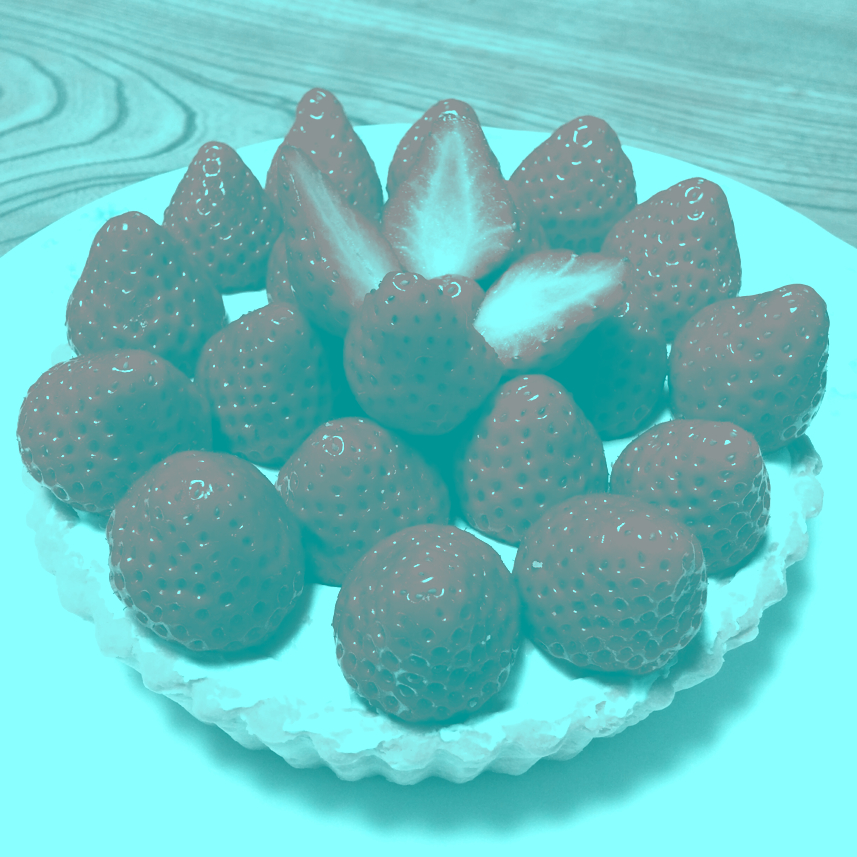
(γ = 1.2, α = .48)
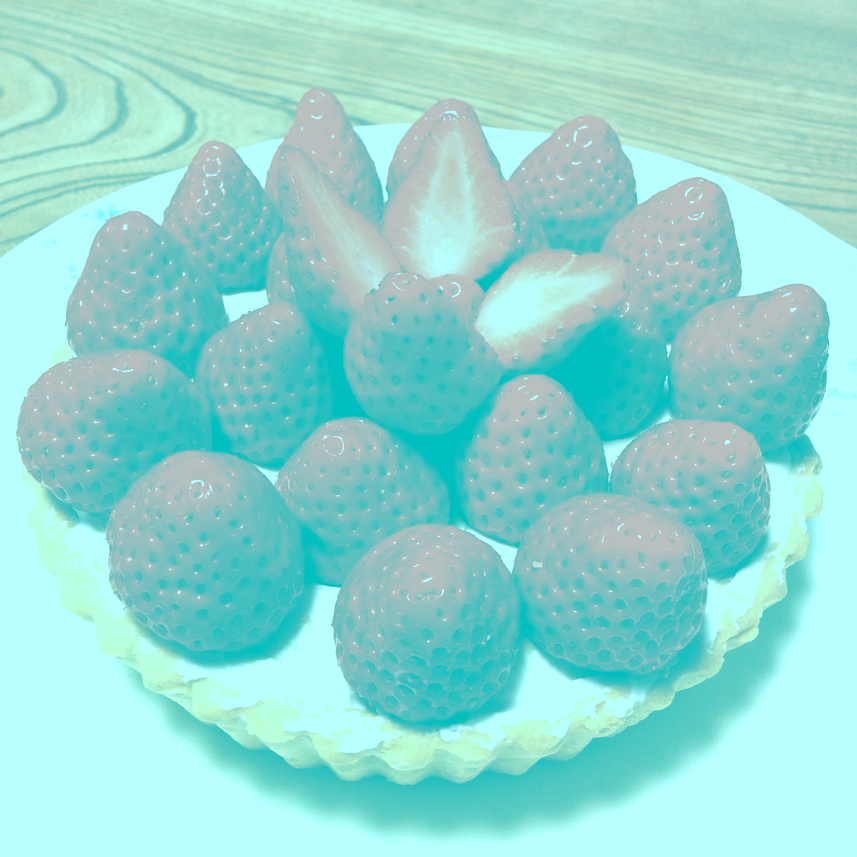
(sRGB, α = .48)
「赤く見えるいちご」
すべてのピクセルはシアン色近辺の色相であるが、イチゴは赤く見える。加法色はシアンで、透明度(アルファ値)は48%の加法的色変換。
Copyright Akiyoshi Kitaoka 2017 (September 2)
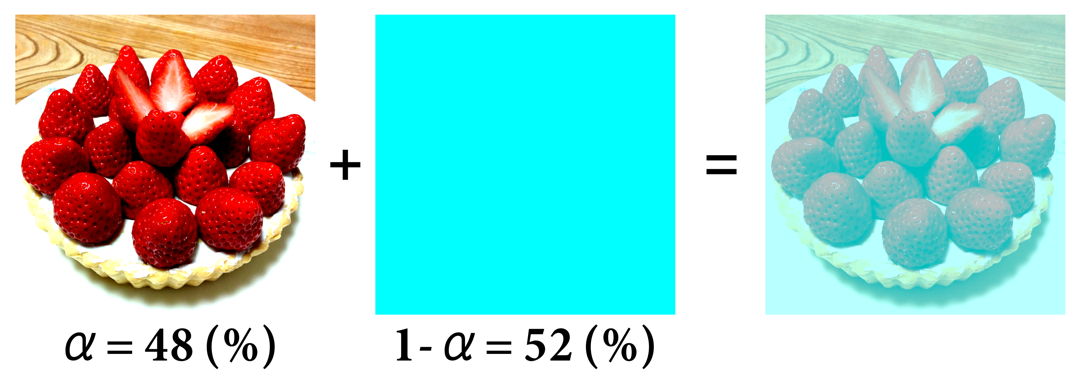
Copyright Akiyoshi Kitaoka 2017 (September 2)
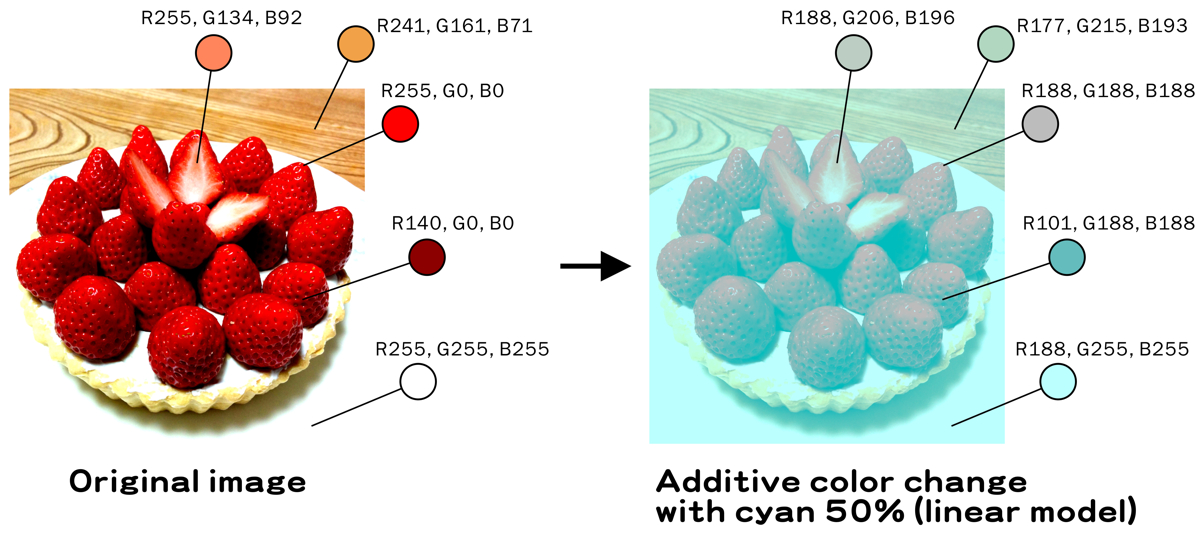
Copyright Akiyoshi Kitaoka 2017 (March 15)
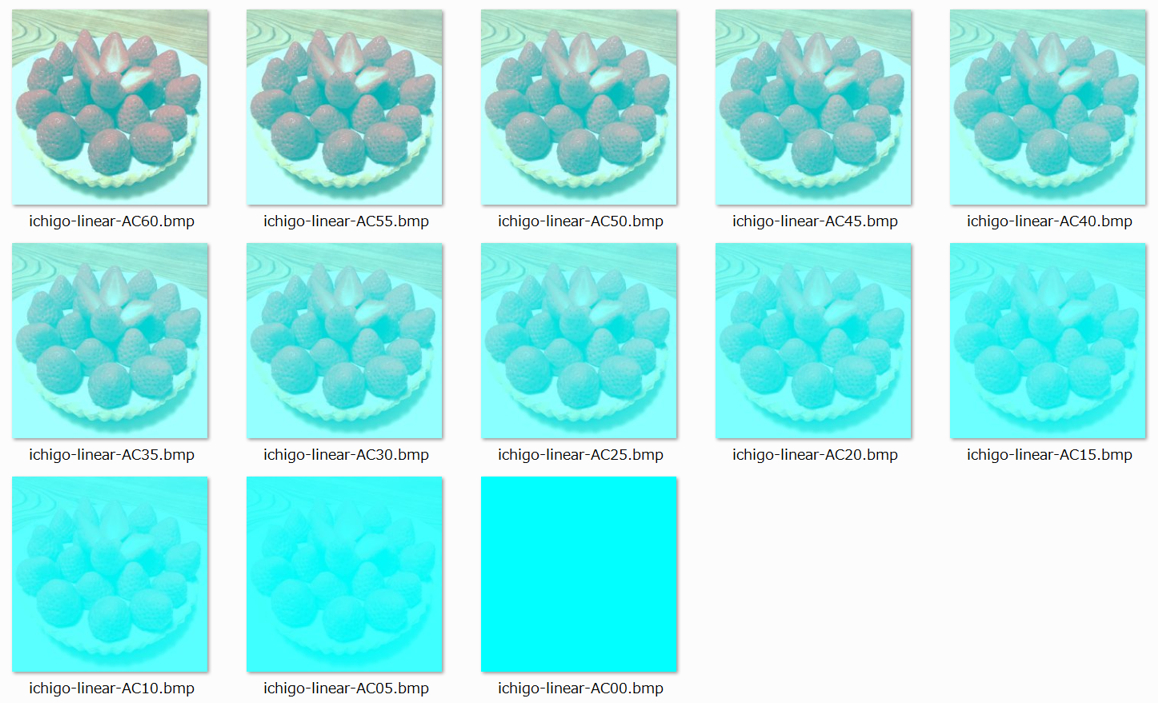
Copyright Akiyoshi Kitaoka 2017 (September 2)
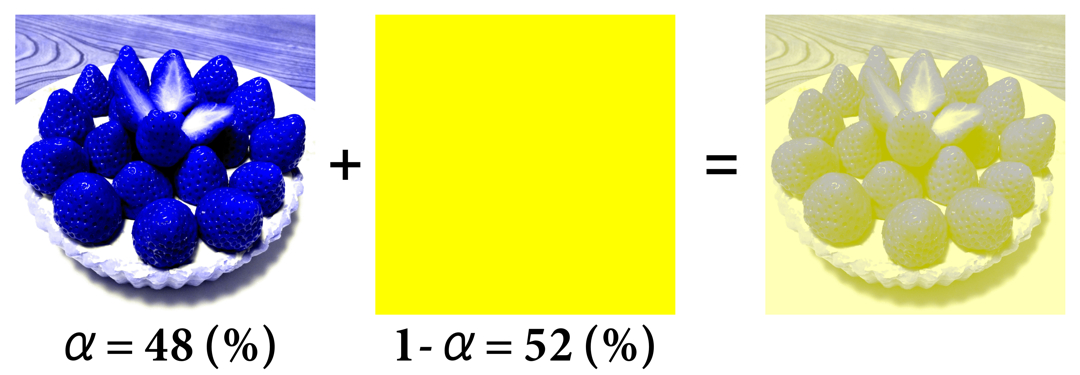
Copyright Akiyoshi Kitaoka 2017 (September 2)
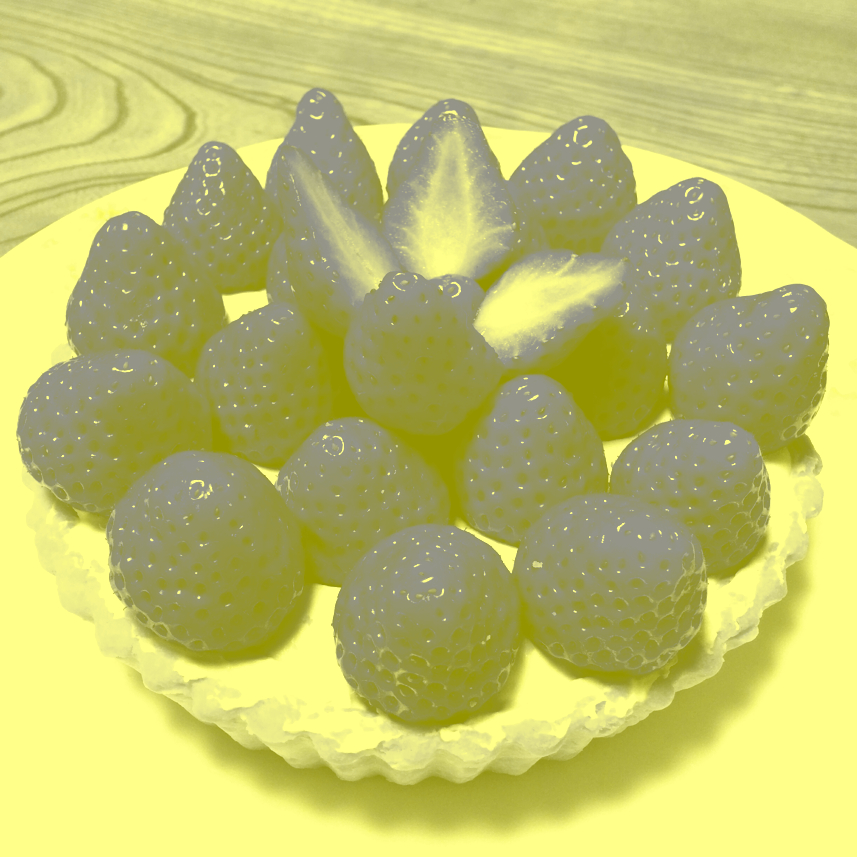
(γ = 1.2, α = .48)
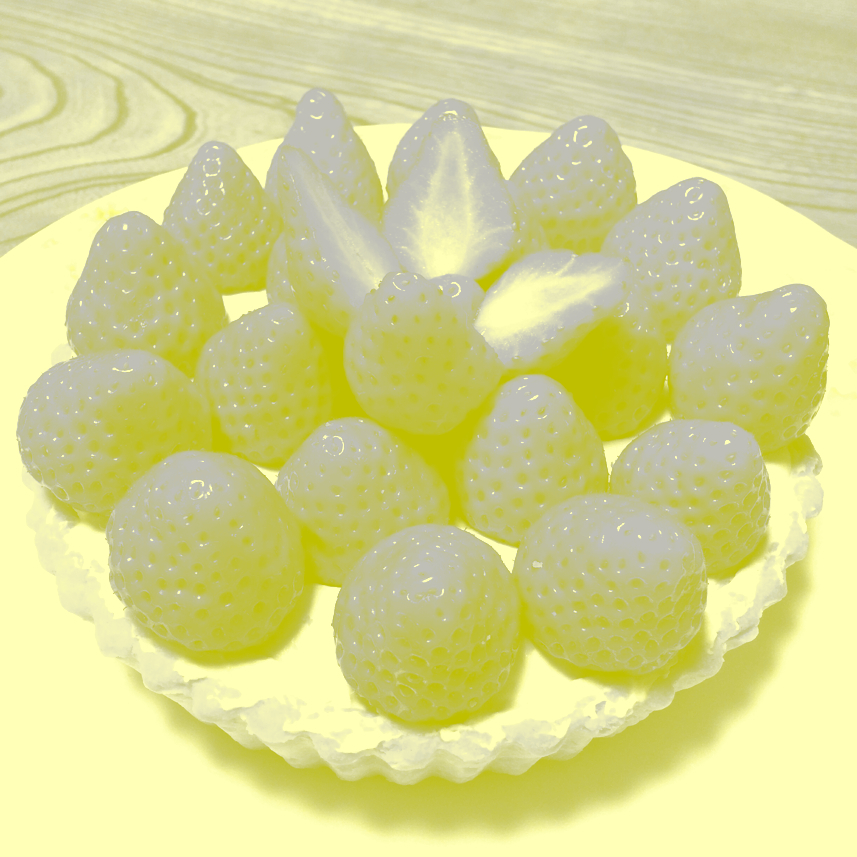
(sRGB, α = .48)
「青く見えるいちご」
すべてのピクセルは黄色の色相であるが、イチゴは青く見える。加法色は黄色で透明度は48%の加法的色変換。
Copyright Akiyoshi Kitaoka 2017 (September 2)
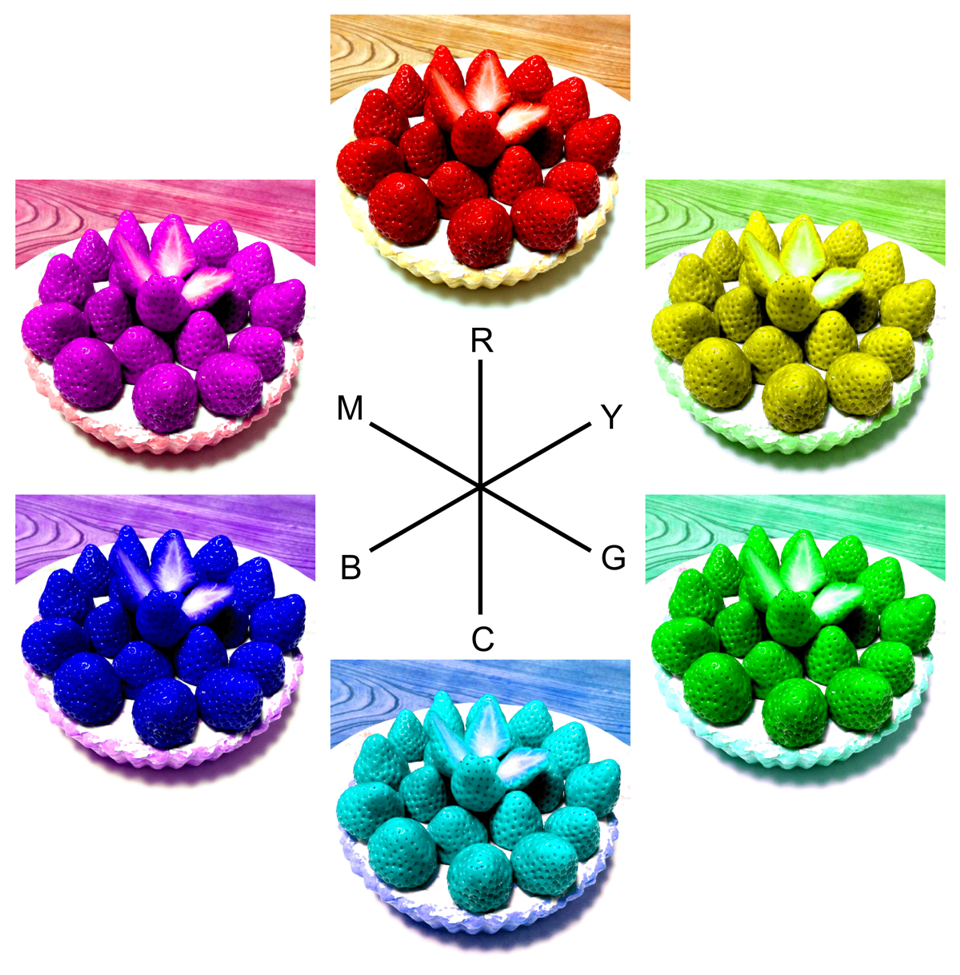
Copyright Akiyoshi Kitaoka 2017 (September 2)
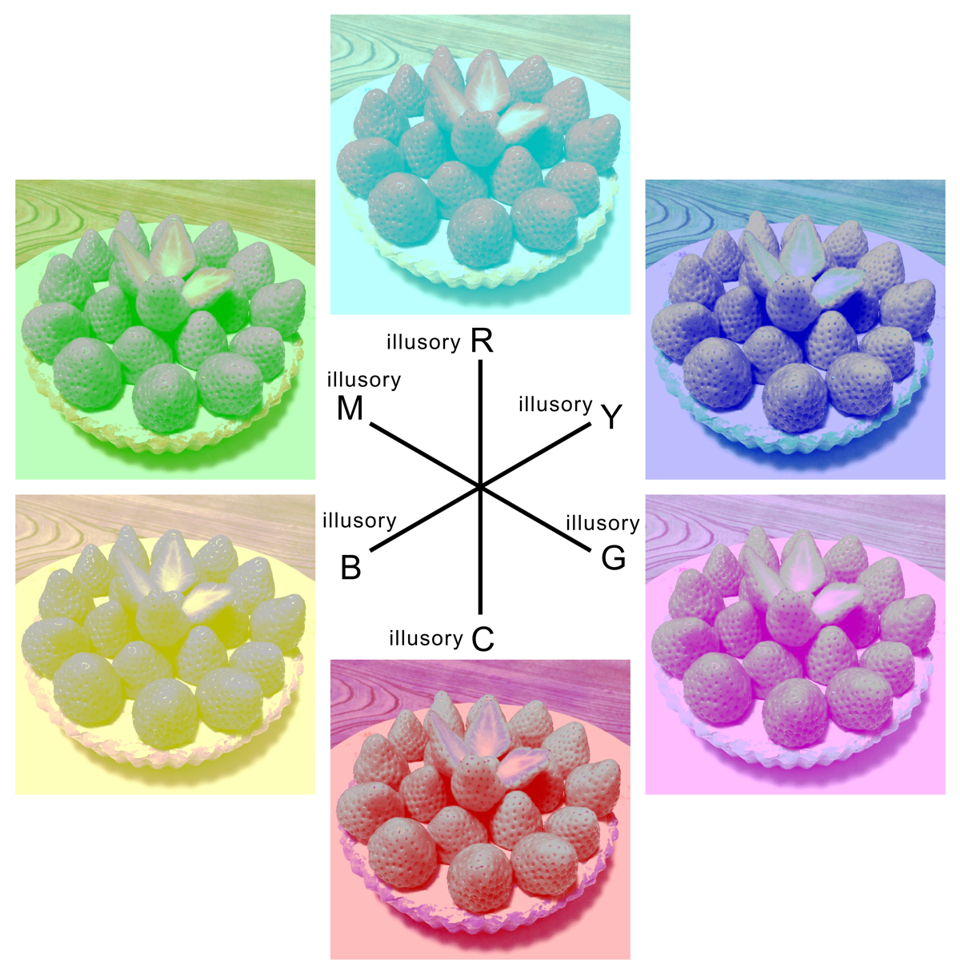
Copyright Akiyoshi Kitaoka 2017 (September 2)
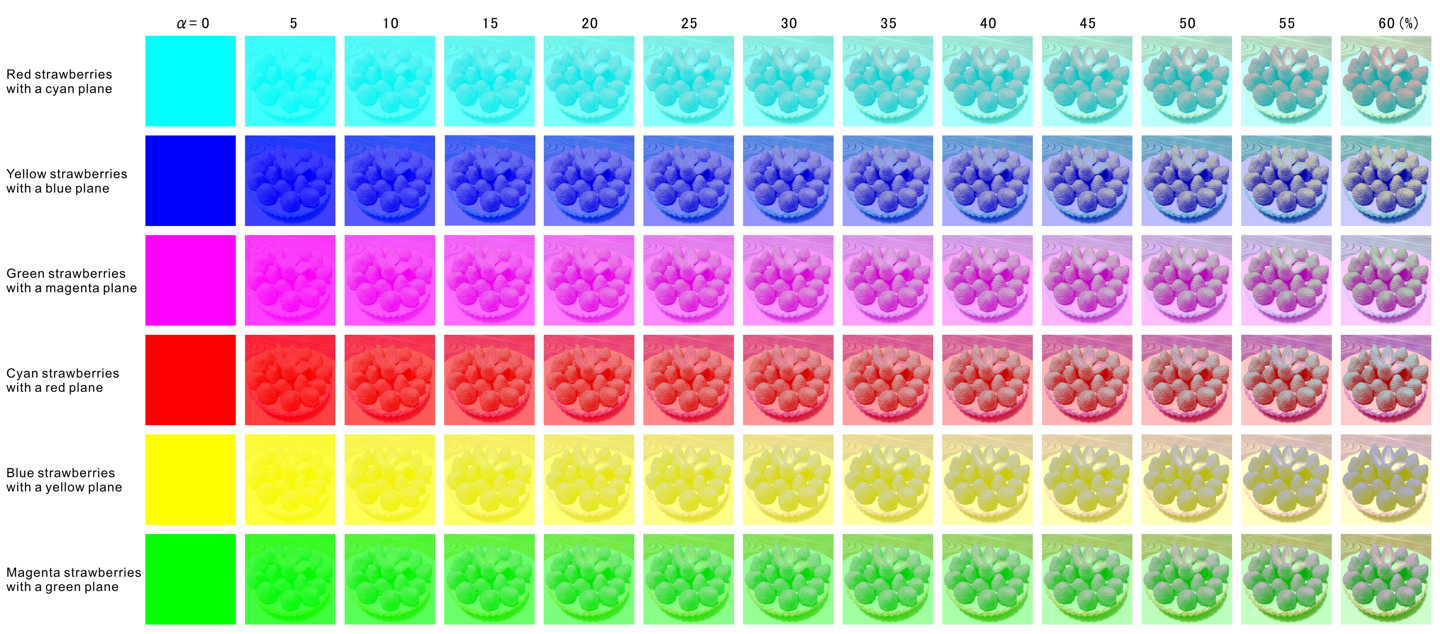
乗法的色変換と加法的色変換
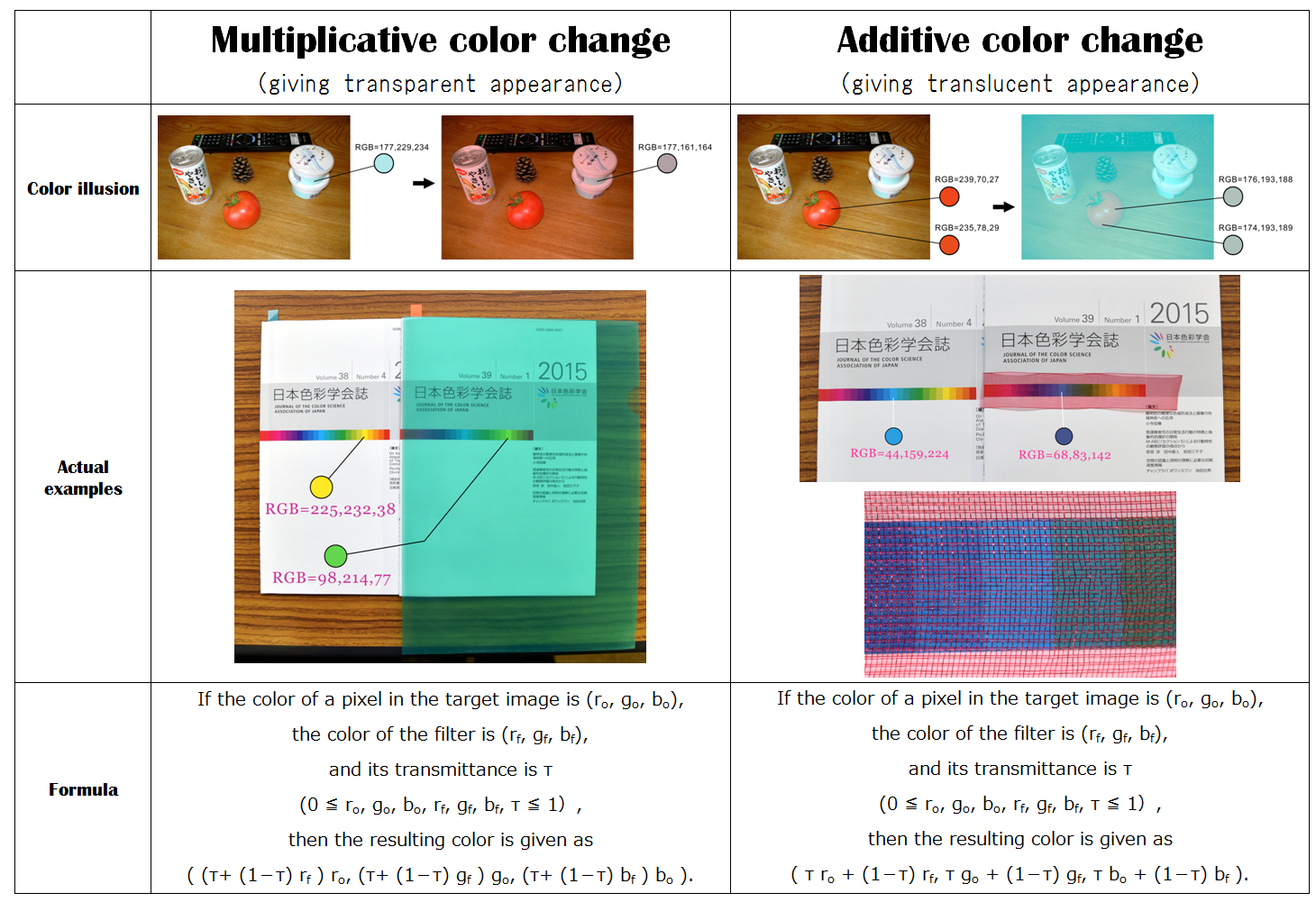
参考
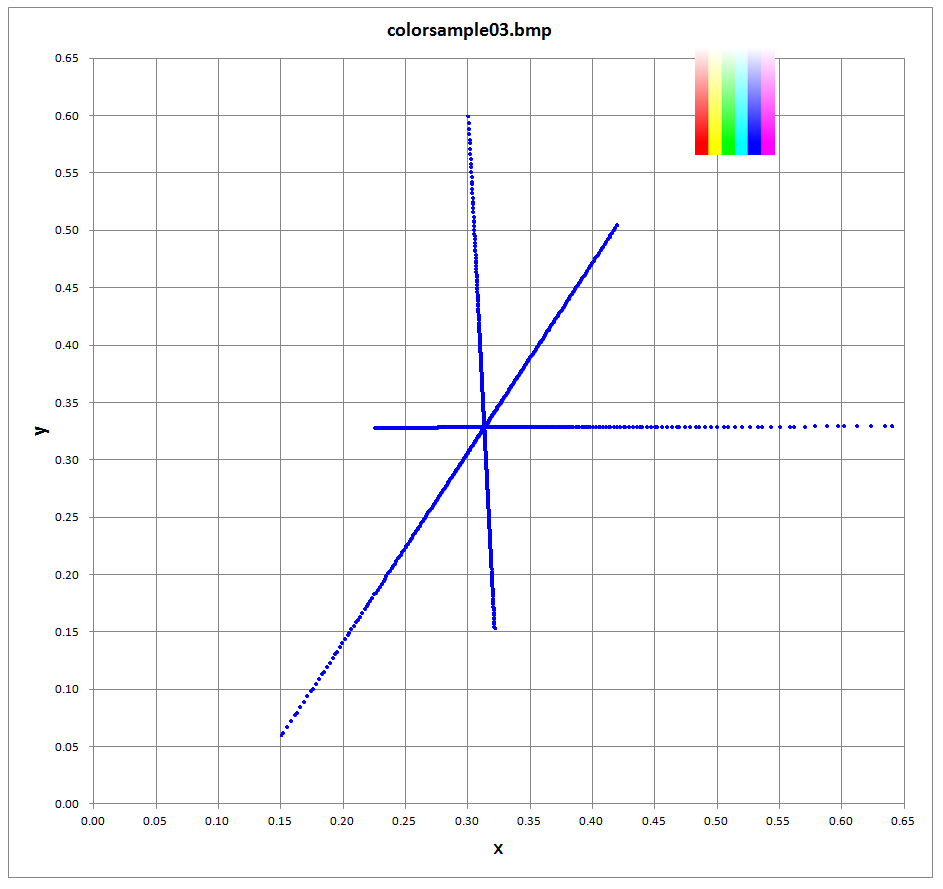
sRGB 白色点 D65: x = 0.3127, y= 0.3290
R: x = 0.6400, y = 0.3300
G: x = 0.3000, y = 0.6000
B: x = 0.1500, y = 0.0600
<according to IEC 61966-2-1>
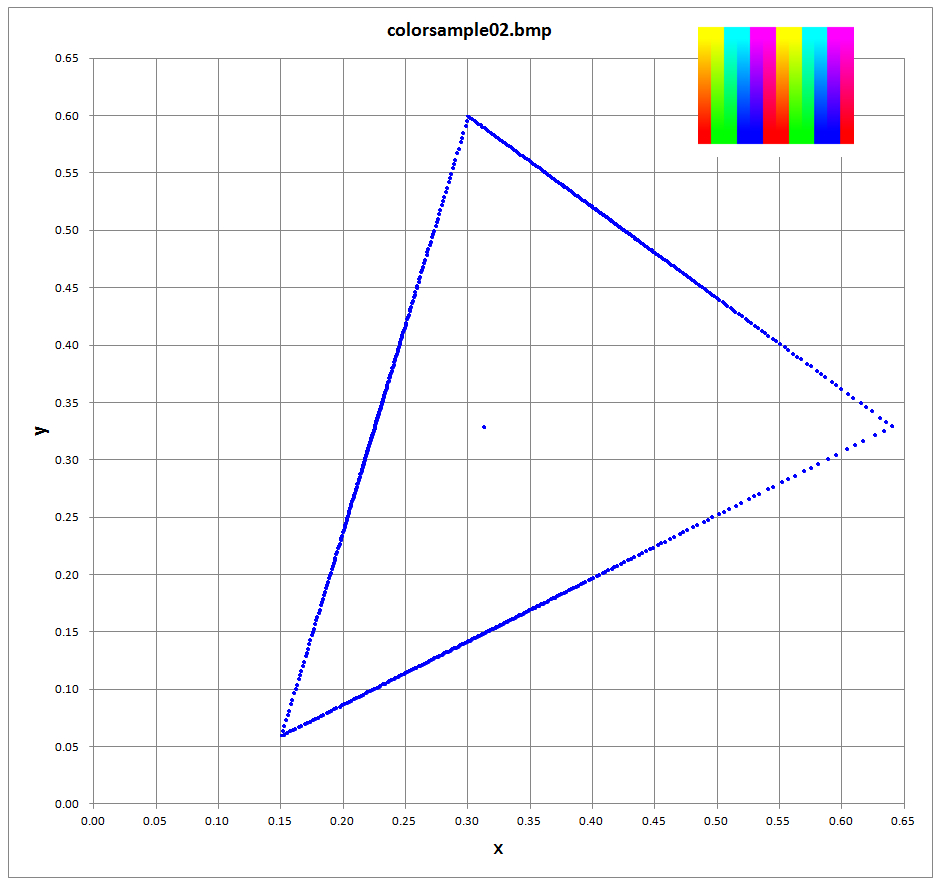
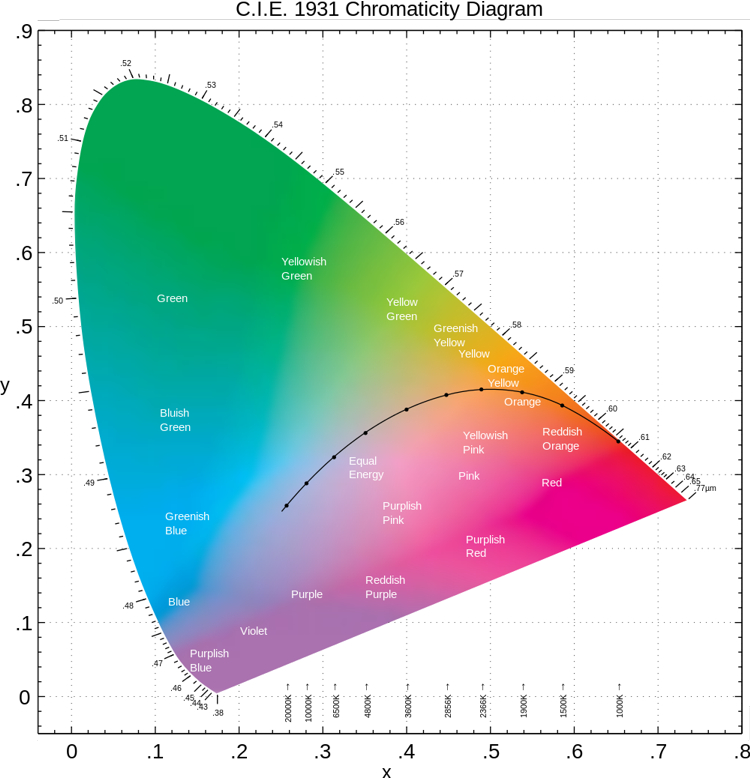
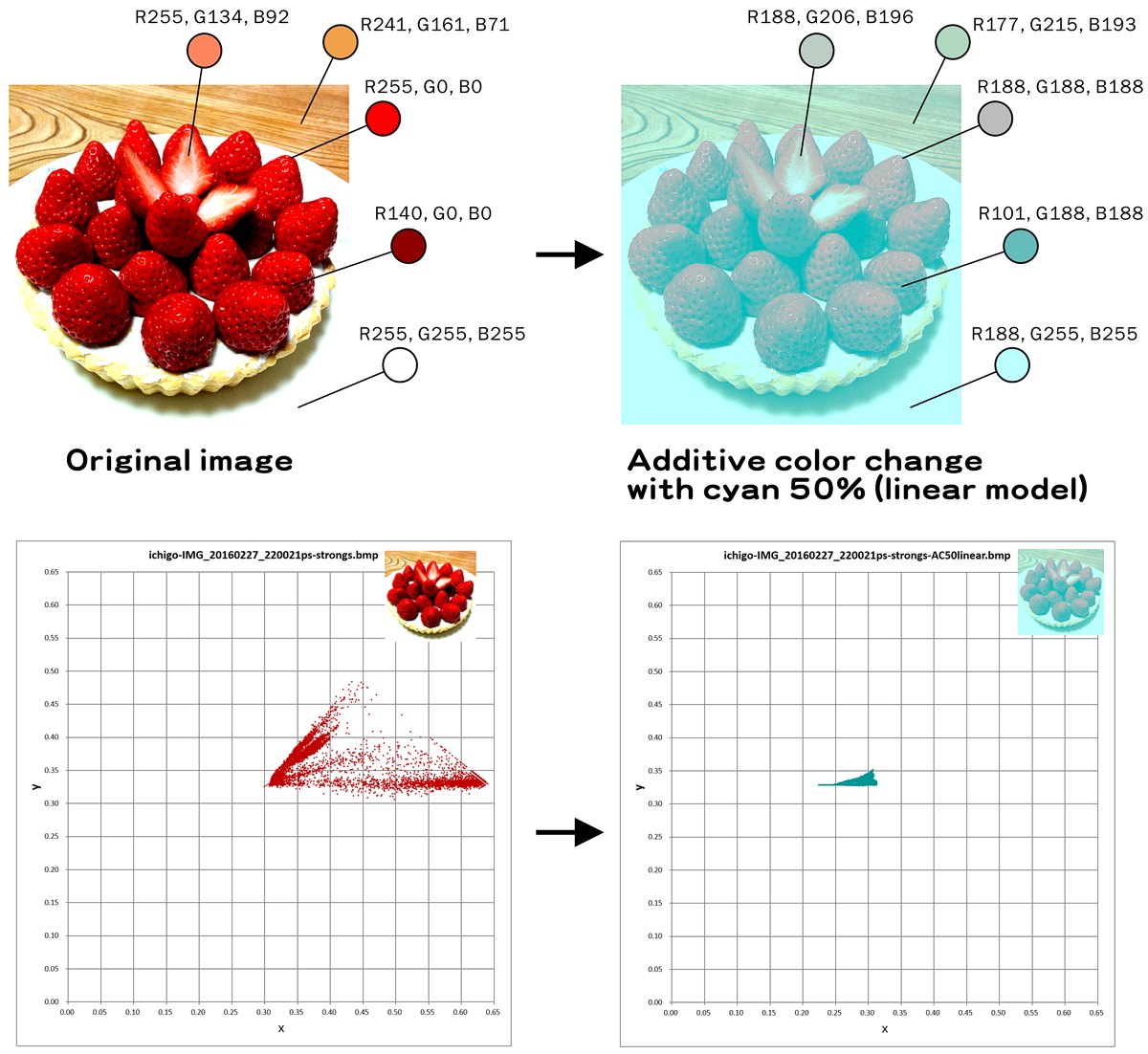
加算的色変換
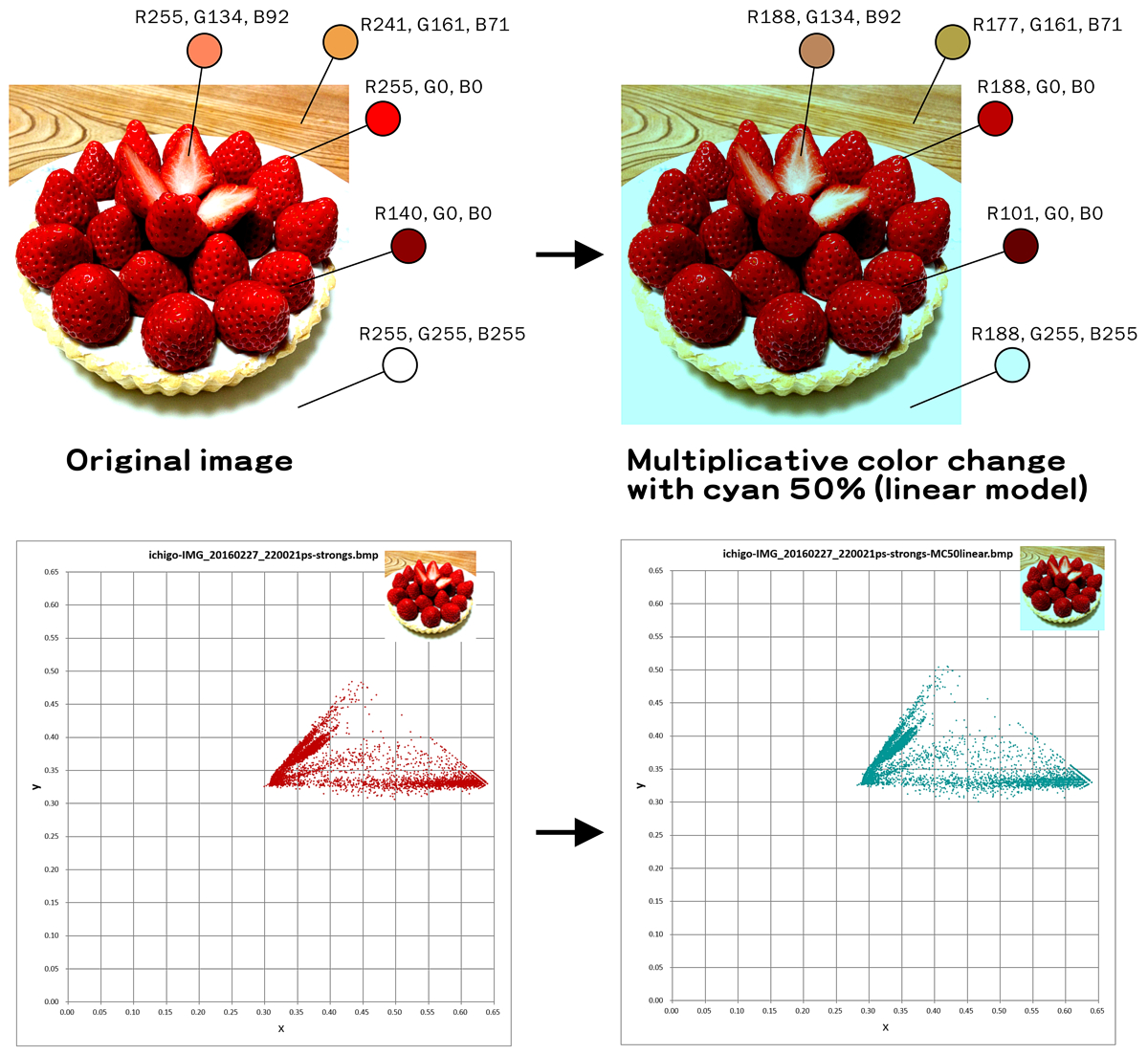
「赤く見える(実際に赤い)いちごの色変換」
色の分布は全体としてシアン色側にシフトするが、イチゴは原画像と同様赤く見える。
Copyright Akiyoshi Kitaoka 2017 (March 16)
(乗算的色変換(普通の色変換)による画像)
同じ色配列が白と黒に見える錯視
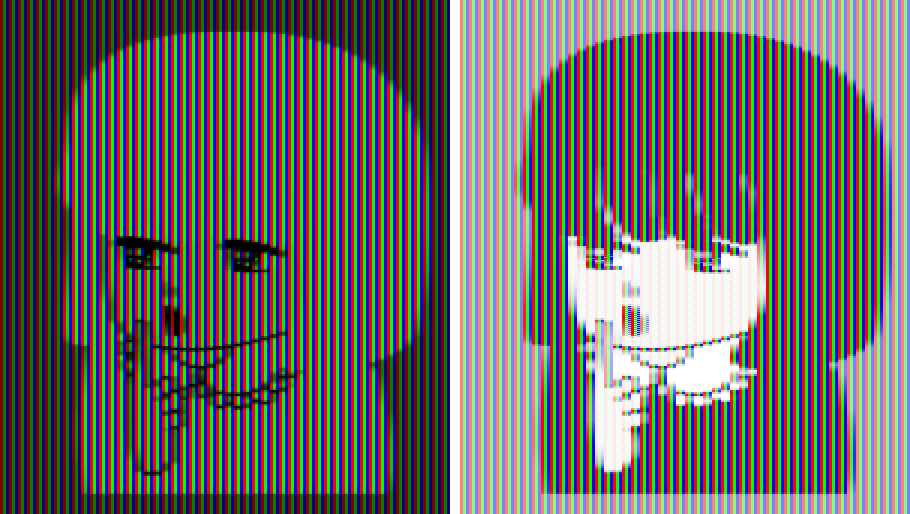
「RGBで白と黒」
左の絵の髪と服は白く見え、右の絵では黒く見えるが、同じRGBの縞模様である。
Copyright Akiyoshi Kitaoka 2016 (August 15)
拡大画像
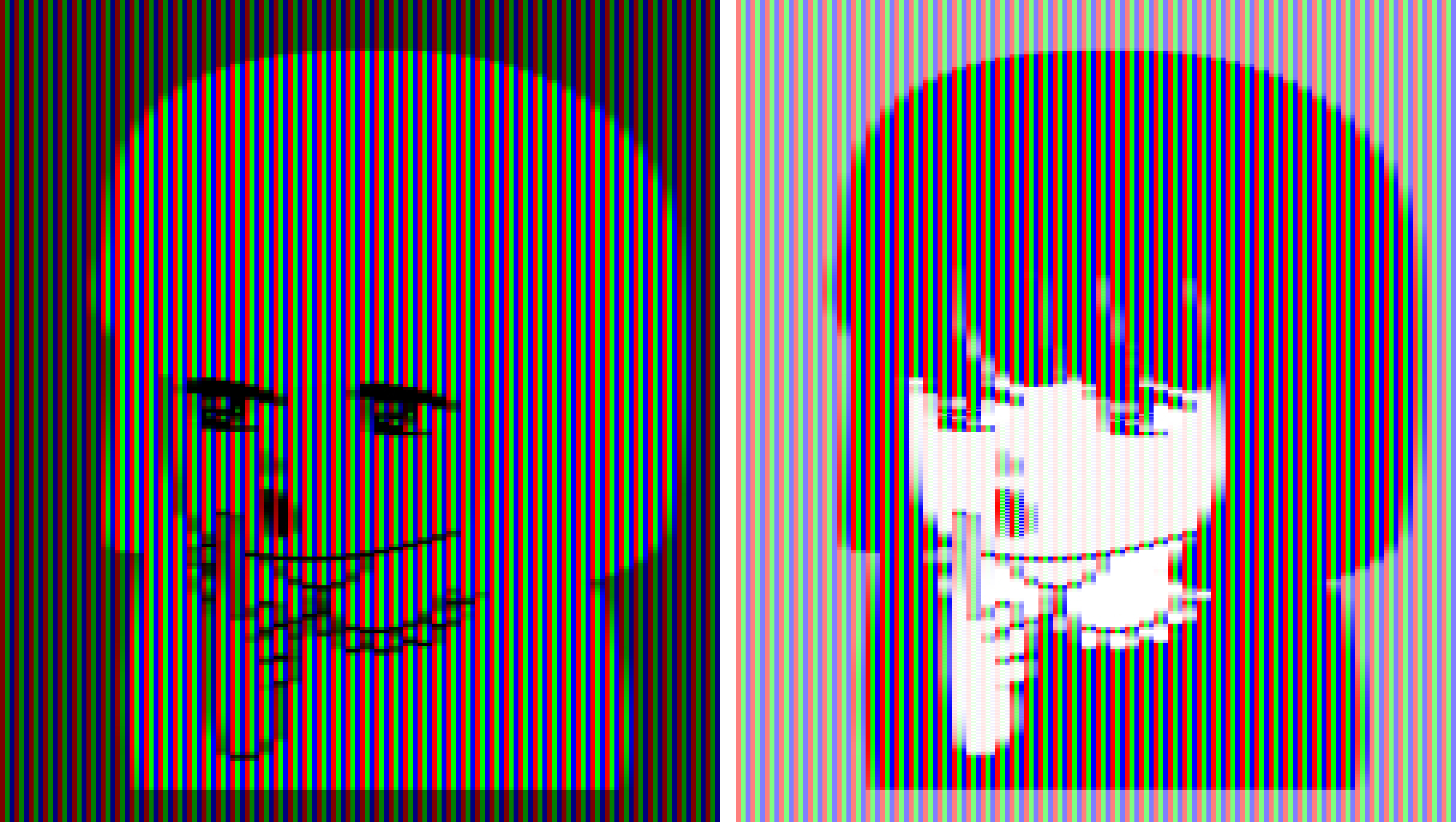
原図
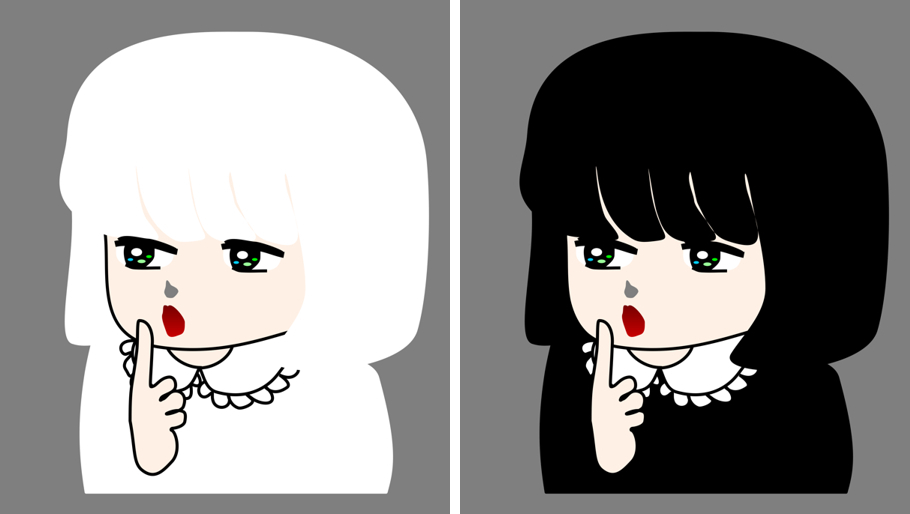
動画表現
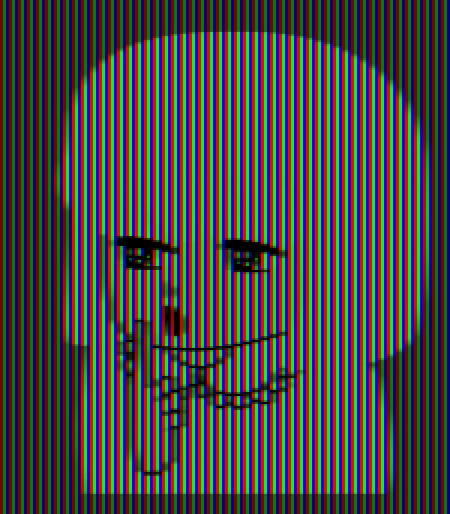
cf.
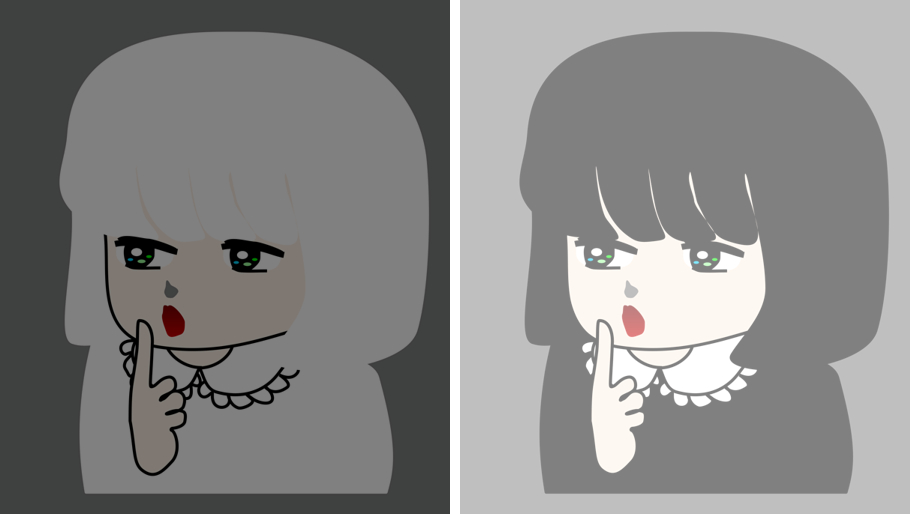
「白と黒」
左の絵の髪と服は白く見え、右の絵では黒く見えるが、同じ輝度の灰色である。左は乗算的色変換(透明変換)、右は加算的色変換(半透明変換)。
Copyright Akiyoshi Kitaoka 2018 (May 28)
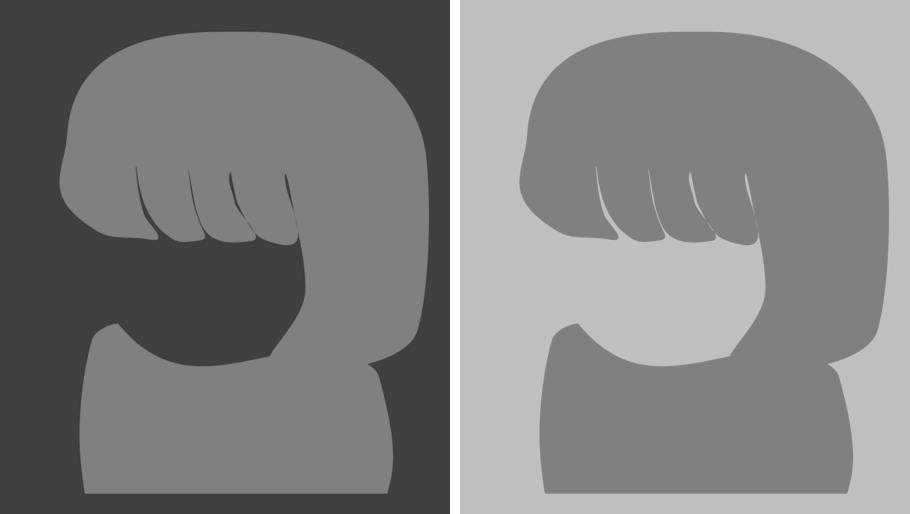
明るさの対比図形
左の絵の髪と服の部分は右のものより明るく見える。
Copyright Akiyoshi Kitaoka 2018 (May 28)
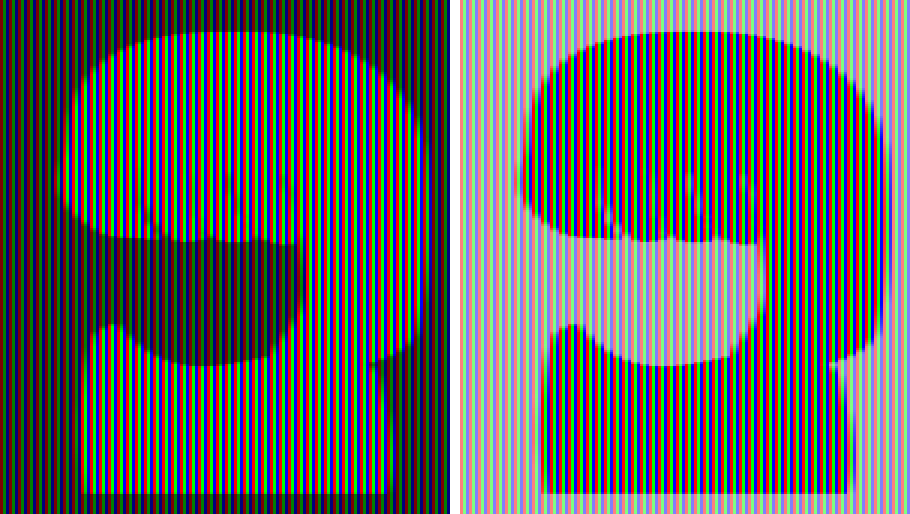
「RGBで明るさの対比図形」
左の絵の髪と服の部分は右のものより明るく見える。
Copyright Akiyoshi Kitaoka 2018 (May 28)
2種類の並置混色
Spatial color mixture: additive color mixture (top) and subtractive one (bottom)
加法混色
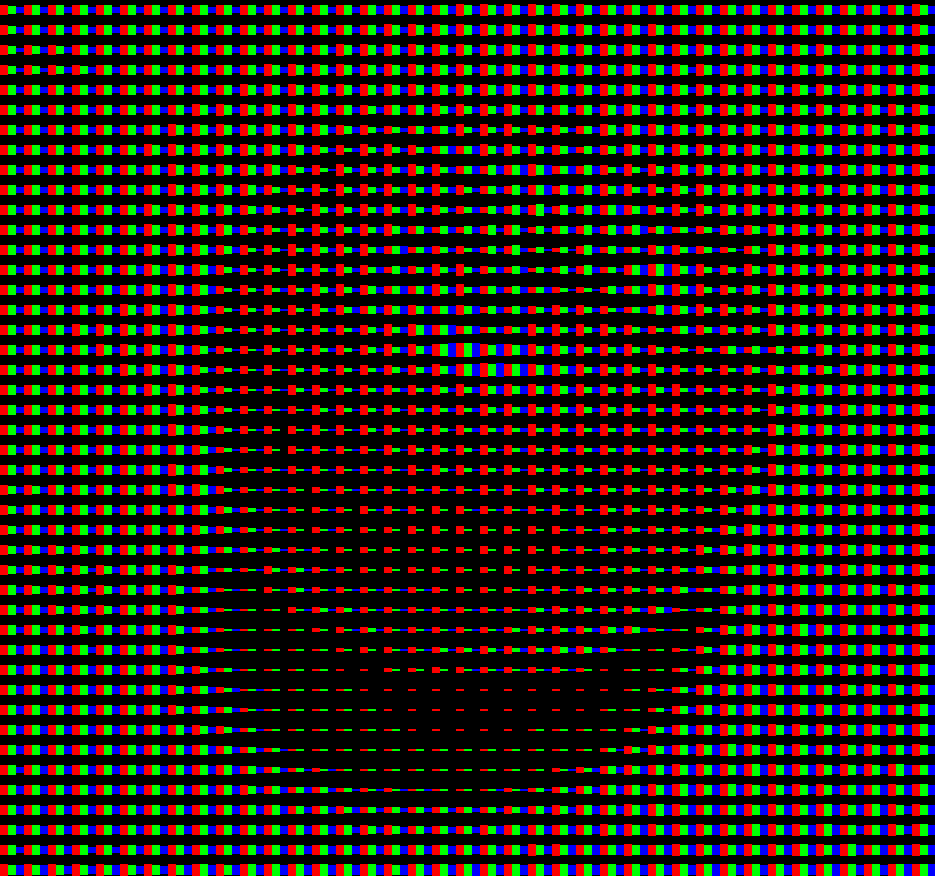
減法混色
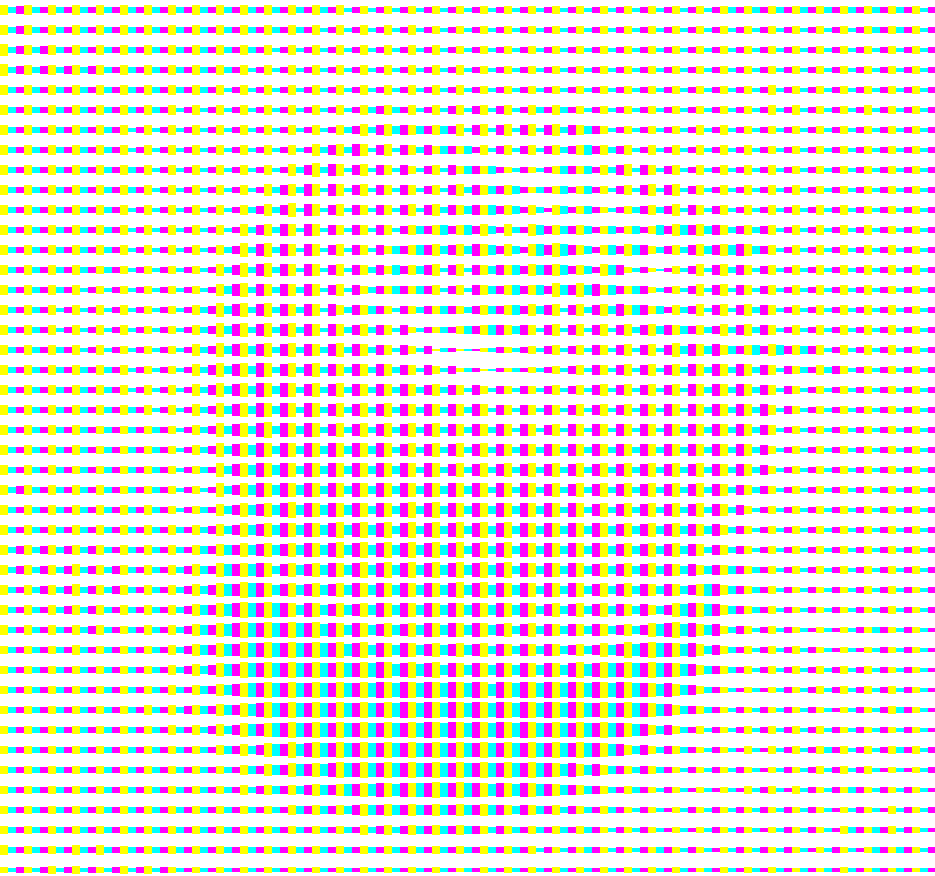
Spatial color mixture: additive color mixture (left) and subtractive one (right)
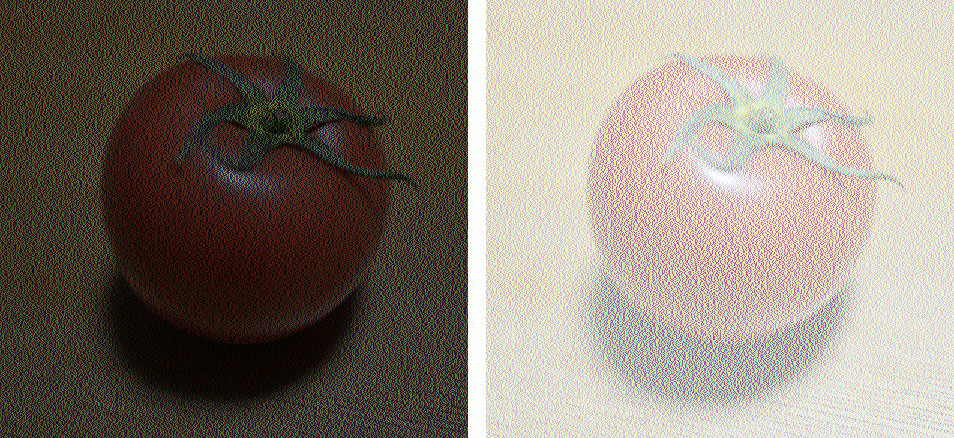
「中間混色」(?)
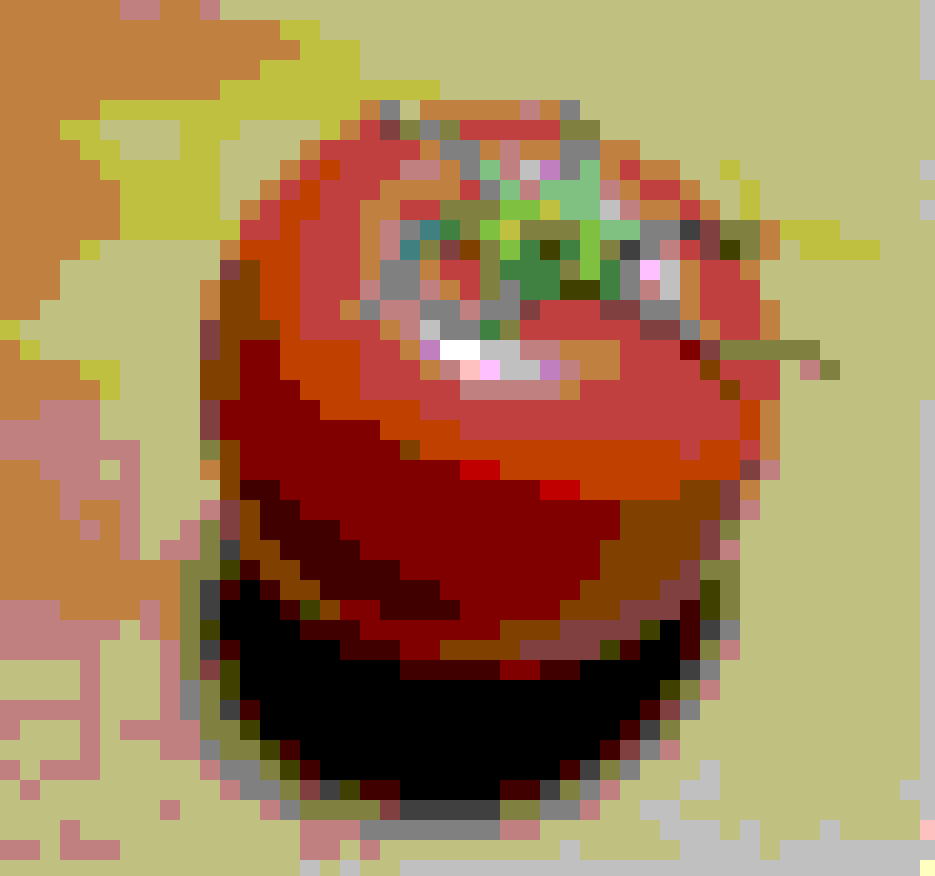
1画素は 20 x 20 pixel。RGBはそれぞれ5階調(125色)。
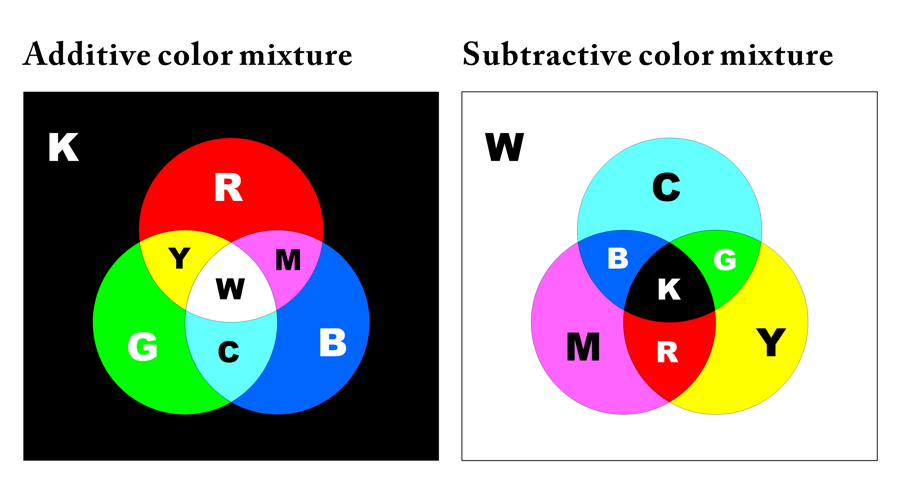
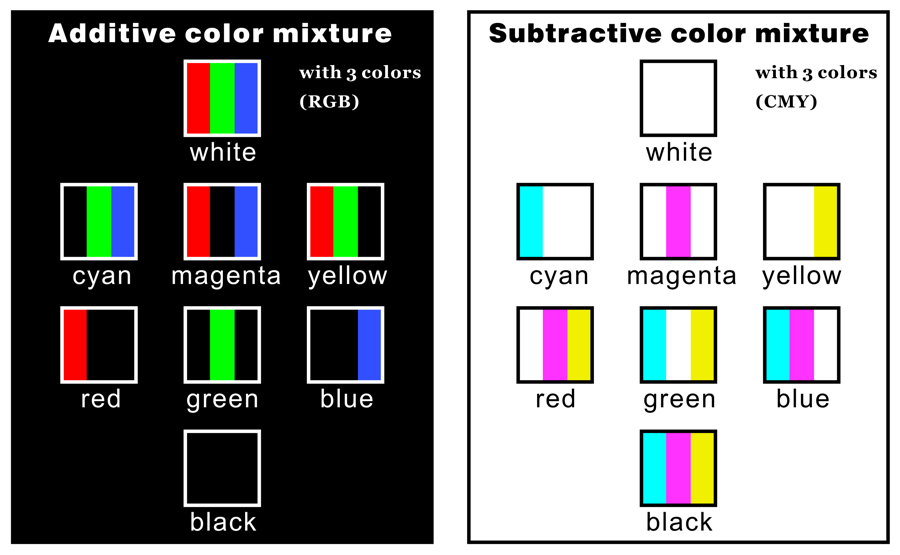
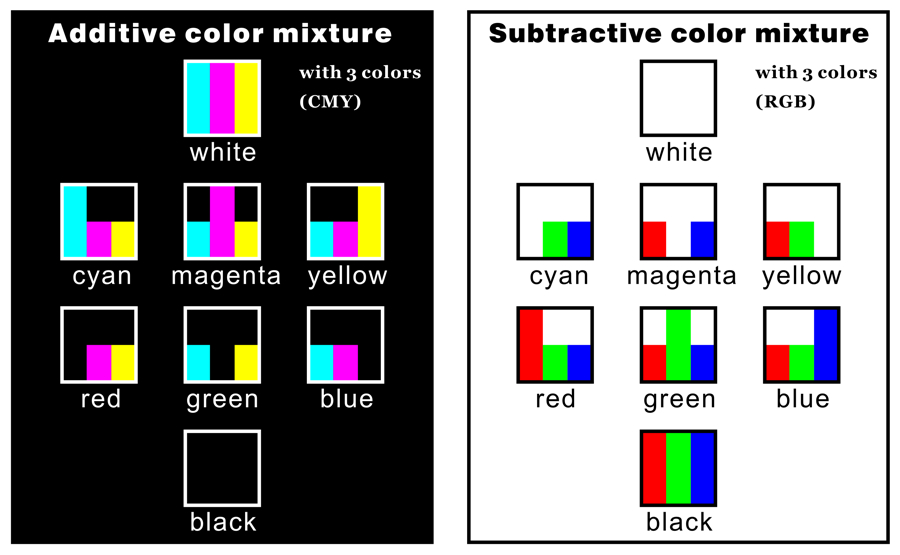

「RGBで白と黒」
左の絵の髪と服は白く見え、右の絵では黒く見えるが、同じRGBの縞模様である。
Copyright Akiyoshi Kitaoka 2016 (August 15)
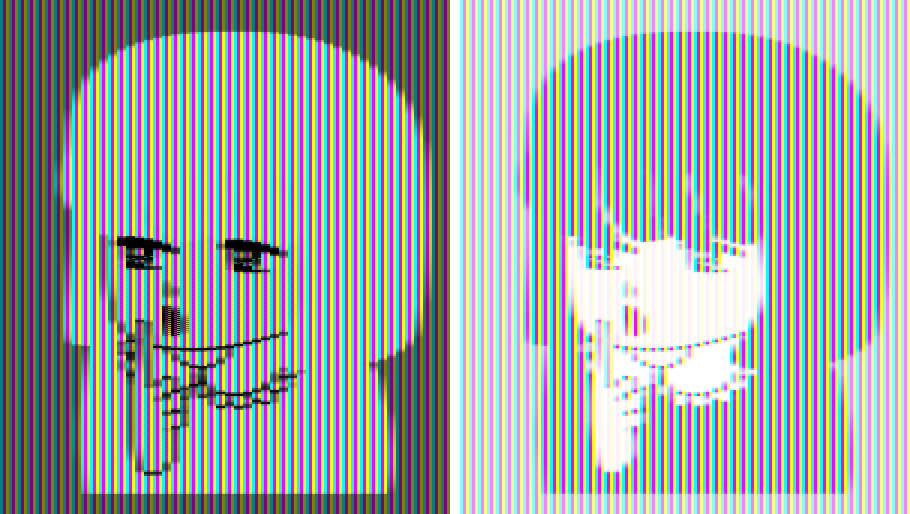
「CMYで白と黒」
左の絵の髪と服は白く見え、右の絵では黒く見えるが、同じCMYの縞模様である。
Copyright Akiyoshi Kitaoka 2016 (August 15)
2色の並置混色
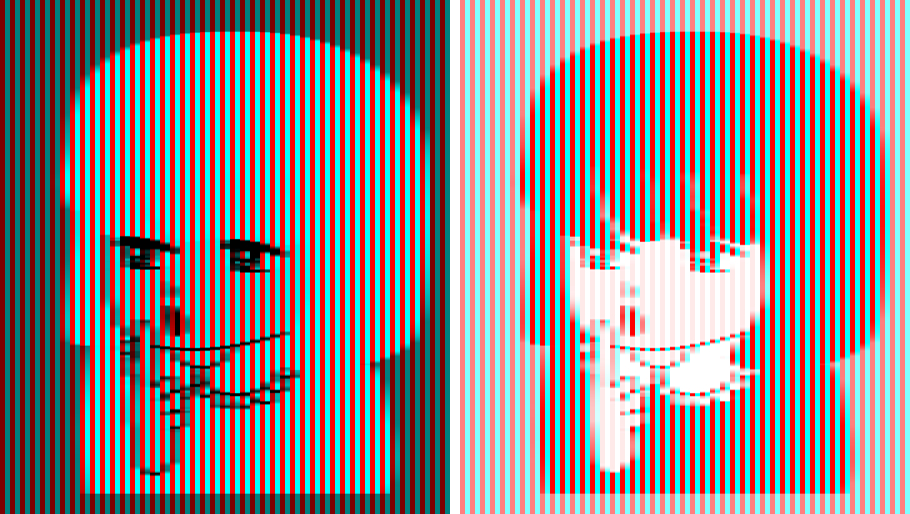
「RCで白と黒」
左の絵の髪と服は白く見え、右の絵では黒く見えるが、同じR(赤色)とC(シアン色)の縞模様である。
Copyright Akiyoshi Kitaoka 2018 (May 20)
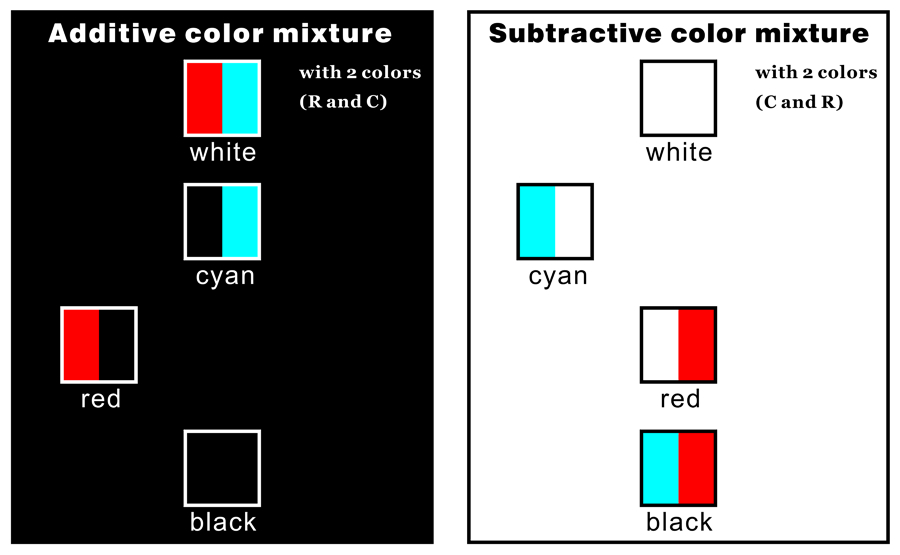
赤・シアン2色の並置混色(左:加法混色、右:減法混色)
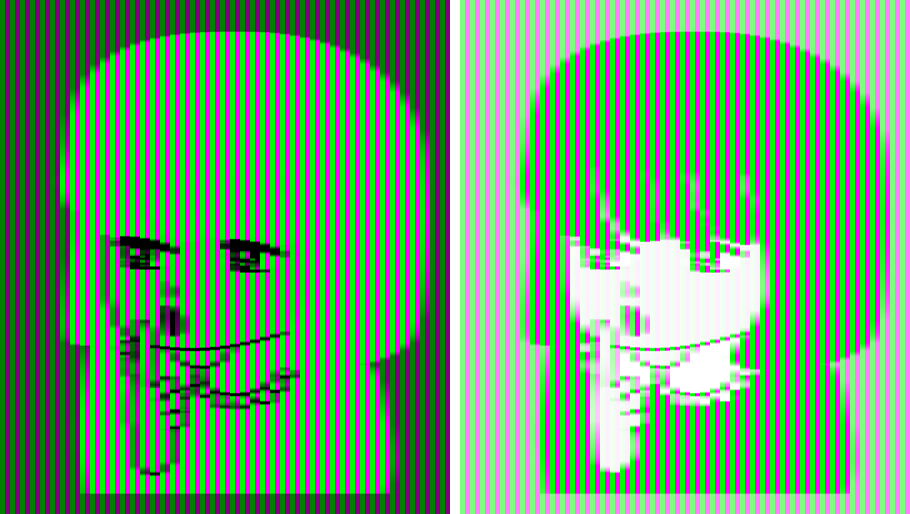
「GMで白と黒」
左の絵の髪と服は白く見え、右の絵では黒く見えるが、同じG(緑色)とM(マゼンタ色)の縞模様である。
Copyright Akiyoshi Kitaoka 2018 (May 20)
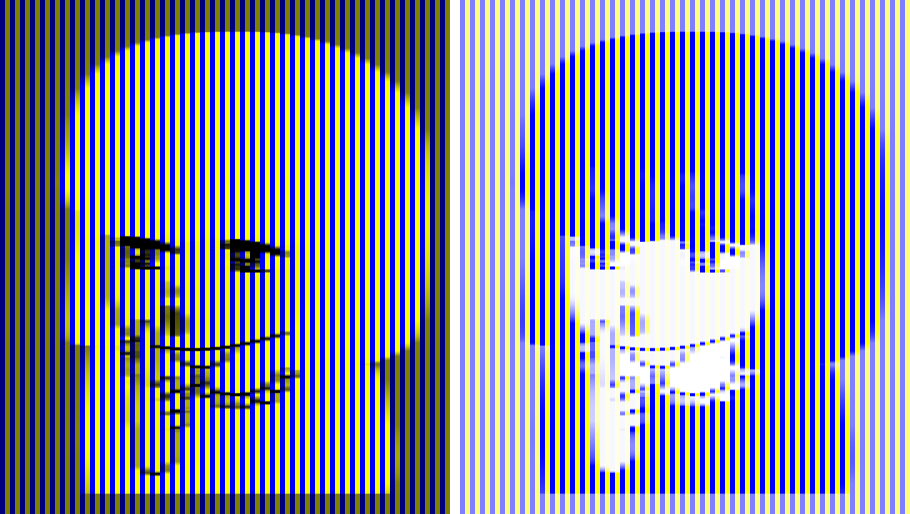
「BYで白と黒」
左の絵の髪と服は白く見え、右の絵では黒く見えるが、同じB(青色)とY(黄色)の縞模様である。
Copyright Akiyoshi Kitaoka 2018 (May 20)
グレースケールにおける2種類の「並置混色」
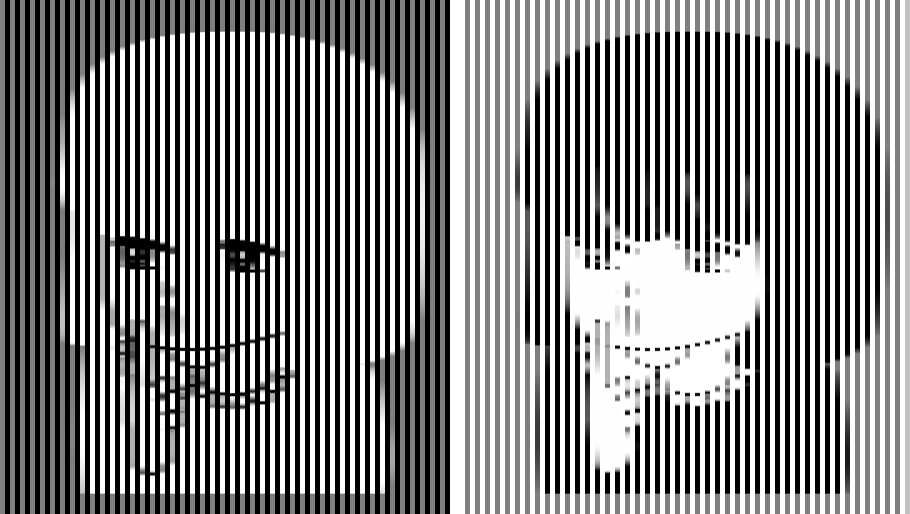
「白黒で白と黒」
左の絵の髪と服は白く見え、右の絵では黒く見えるが、同じ白黒の縞模様である。
Copyright Akiyoshi Kitaoka 2018 (March 21)
動画表現
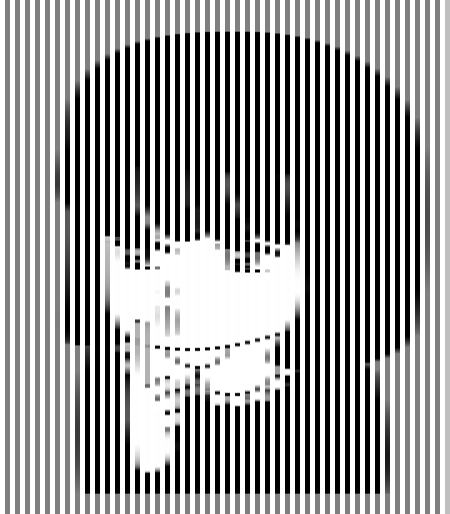
北岡明佳 (2016) RGBを原色とする減法混色の並置混色のアルゴリズムとその応用 日本視覚学会2016年夏季大会 朱鷺メッセ(新潟コンベンションセンター)(新潟市)・2016年8月18日(木) Poster --- Visiome
並置混色を視覚系はどう解釈するか?
仮説
1. 最も輝度コントラストの高い領域をアンカーとする。
2. 輝度コントラストの低い領域の輝度が低ければ加法混色系と解釈し、輝度コントラストの低い領域の輝度が高ければ減法混色系と判断する。
3. 加法混色系と解釈された画像のアンカーは白と解釈し、減法混色系と解釈された画像のアンカーは黒と解釈する。

「RGBで白と黒」
左の絵の髪と服は白く見え、右の絵では黒く見えるが、同じRGBの縞模様である。
Copyright Akiyoshi Kitaoka 2016 (August 15)
ムンカー錯視とその仲間
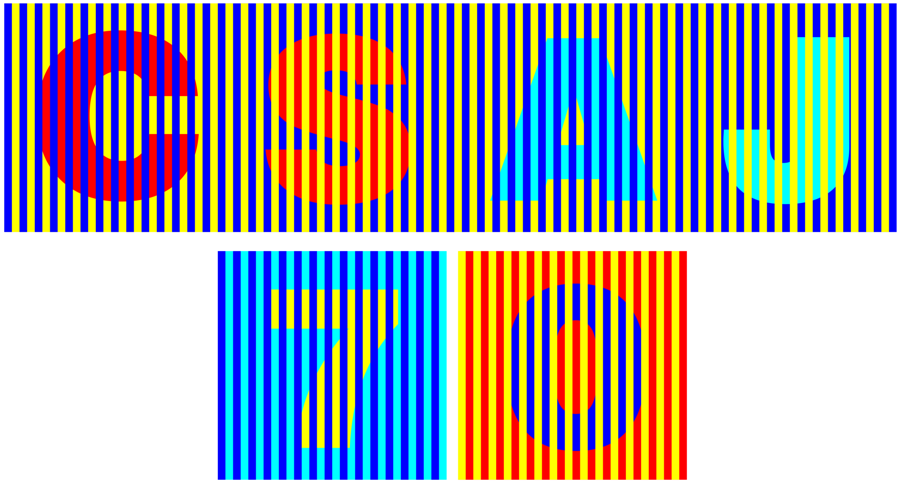
「日本色彩学会創設70周年: Future of Color Design」
CとSは同じ赤であるが、Cは赤紫色に、Sはオレンジ色に見える。AとJは同じシアン色であるが、Aは水色に、Jは緑色に見える。7と0はどちらも青と黄の縞模様でできているが、7は0より明るく見える。
Copyright Akiyoshi Kitaoka 2018 (January 12)
日本色彩学会第49回全国大会[大阪]'18 大阪市立大学
ムンカー錯視(Munker illusion)
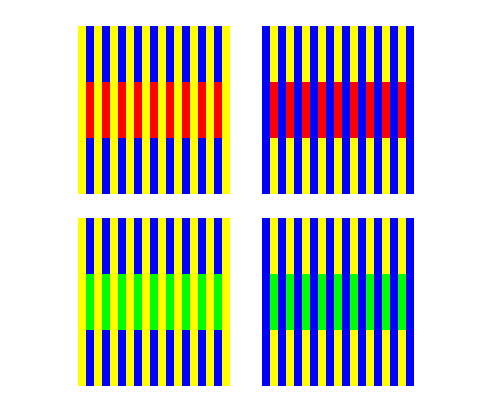
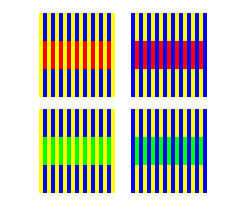
黄と青の縞の青部分に赤を乗せるとオレンジ色に見え、黄部分に赤を乗せると赤紫がかって見える。緑を乗せるとそれぞれ黄緑と青緑に見える。高空間周波数図形で錯視量が多い。
Munker, H. (1970) Farbige Gitter, Abbildung auf der Netzhaut und übertragungstheoretische Beschreibung der Farbwahrnehmung. München: Habilitationsschrift.
ムンカー錯視の作り方
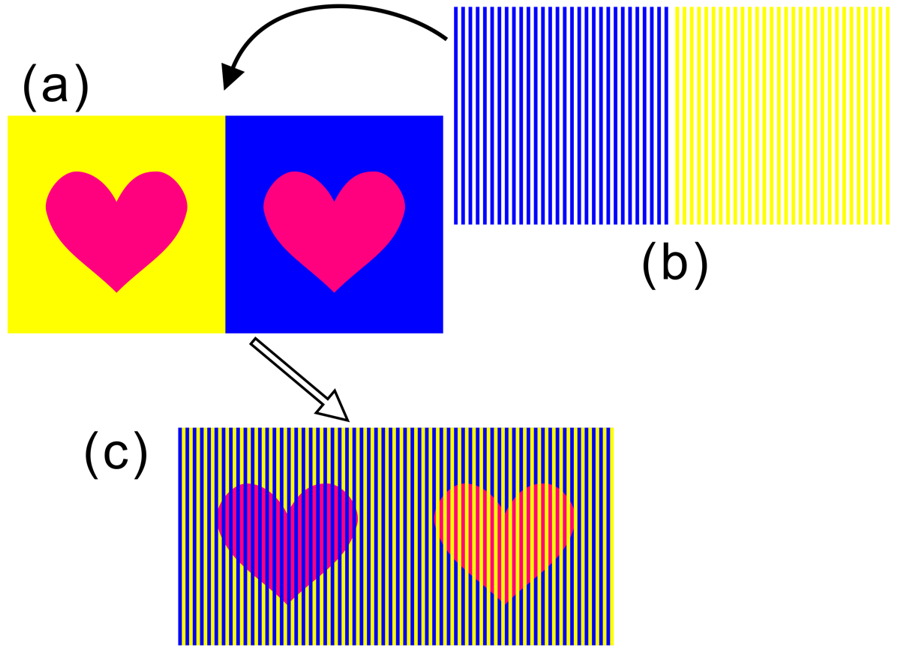
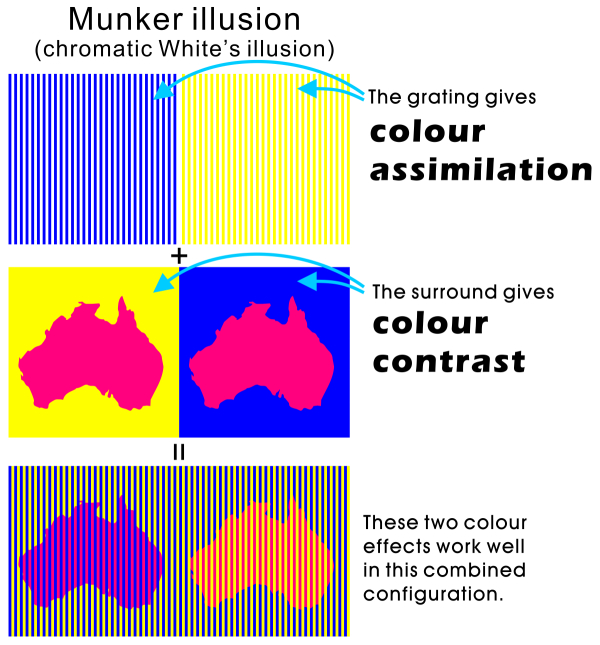
Left: Blue (assimilation) + Blue (contrast of yellow) = Blue induction; Right: Yellow (assimilation) + Yellow (contrast of blue) = Yellow induction
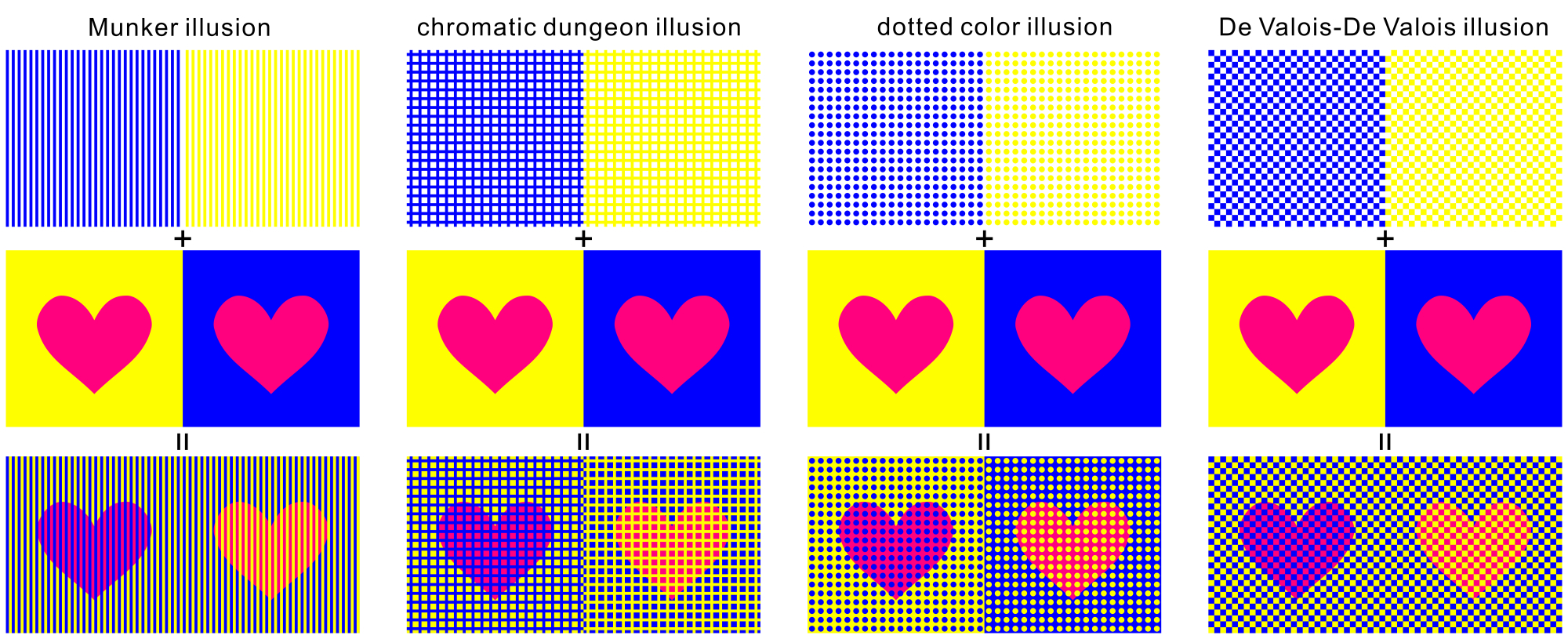
「4種類の色の錯視の作り方」
物理的に同じ色(R=255, G=0, B=127)のハートが錯視によってピンクとオレンジのハートに見える。左から、ムンカー錯視(Munker illusion)、色の土牢錯視(chromatic dungeon illusion)、ドット色錯視(dotted color illusion)、デヴァロイス・デヴァロイス錯視(De Valois-De Valois illusion)である。 上図の高解像度ファイルはこちら(8000 x 3262 pixel, 10MB)。
Copyright Akiyoshi Kitaoka 2009 (June 1)
References
| Munker illusion | Munker, H. (1970) Farbige Gitter, Abbildung auf der Netzhaut und übertragungstheoretische Beschreibung der Farbwahrnehmung. Habilitationsschrift, Ludwig-Maximilians-Universität, München. |
| chromatic dungeon illusion | For the dungeon illusion: Bressan, P. (2001) Explaining lightness illusions.
Perception, 30, 1031-1046. Kitaoka (2007) http://www.psy.ritsumei.ac.jp/~akitaoka/saishin22e.html |
| dotted color illusion | For the dotted brightness illusion: White, M. (1982) The assimilation-enhancing effect of a dotted surround upon a dotted test region. Perception, 11, 103-106. Kitaoka (2008) http://www.psy.ritsumei.ac.jp/~akitaoka/color10e.html |
| De Valois-De Valois illusion | De Valois, R. L. and De Valois, K. K. (1988) Spatial Vision. New York: Oxford University Press. |
北岡明佳 (2012) 色の錯視いろいろ (4) 簡単で錯視量の多い色相の錯視図形の作り方 日本色彩学会誌, 36(1), 45-46. PDF(スキャンコピー) <配布資料>
ムンカー錯視の「裏方」

「日本色彩学会創設70周年: Future of Color Design」
CとSは同じ赤であるが、Cは赤紫色に、Sはオレンジ色に見える。AとJは同じシアン色であるが、Aは水色に、Jは緑色に見える。7と0はどちらも青と黄の縞模様でできているが、7は0より明るく見える。
Copyright Akiyoshi Kitaoka 2018 (January 12)
日本色彩学会第49回全国大会[大阪]'18 大阪市立大学
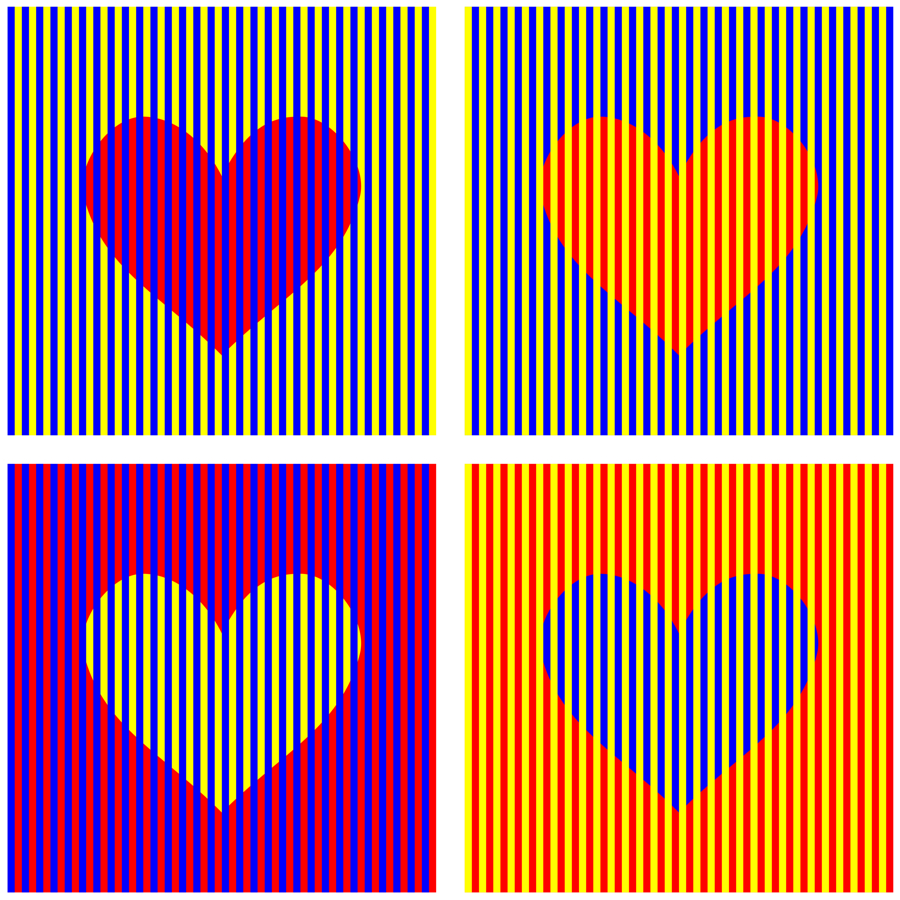
「ムンカー錯視とその裏方」
上段では、赤いハートが左は赤紫色に、右はオレンジ色に見える。ハートの内外の縞模様を入れ換えたのが下段で、同じ青黄の縞模様が、左は右より明るく見える。
Copyright Akiyoshi Kitaoka 2018 (March 18)
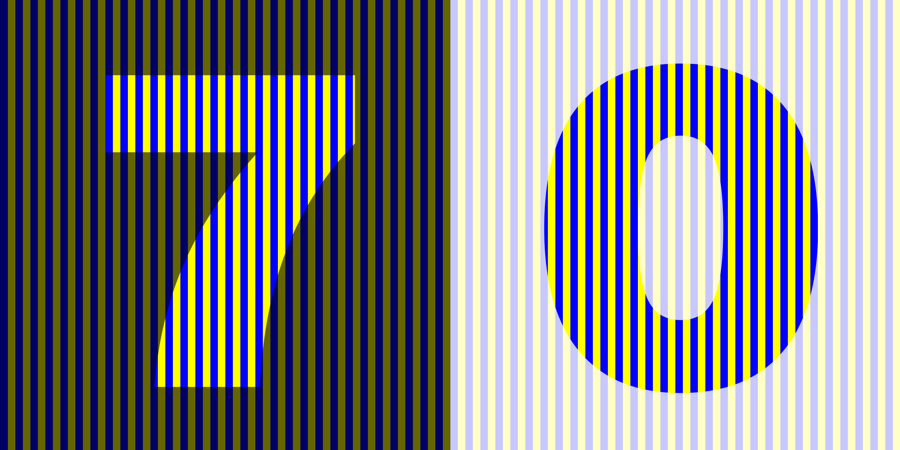
「白と黒に見える 70」
7は明るく、0は暗く見えるが、同じ青黄の縞模様でできている。
Copyright Akiyoshi Kitaoka 2018 (May 23)
cf. (裏方と比較)

「BYで白と黒」
左の絵の髪と服は白く見え、右の絵では黒く見えるが、同じB(青色)とY(黄色)の縞模様である。
Copyright Akiyoshi Kitaoka 2018 (May 20)
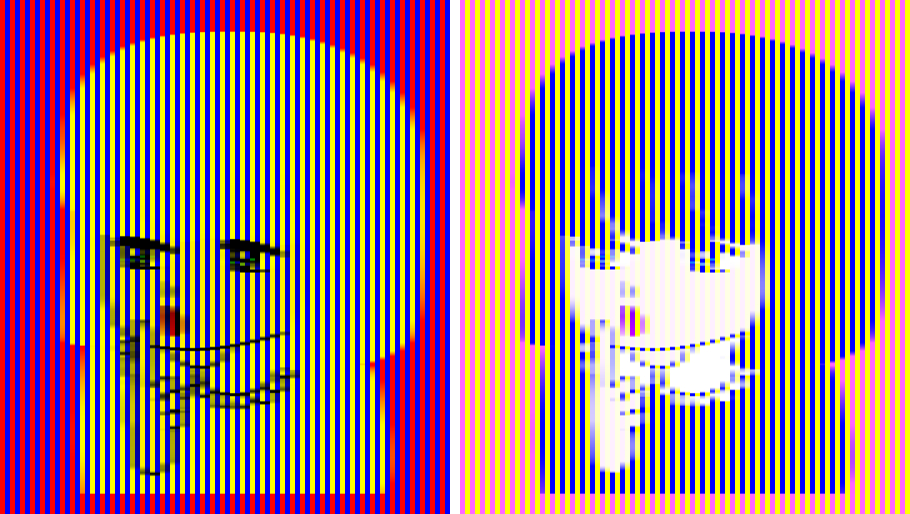
「BYで白と黒」
左の絵の髪と服は白く見え、右の絵では黒く見えるが、同じB(青色)とY(黄色)の縞模様である。
Copyright Akiyoshi Kitaoka 2018 (May 20)
原画
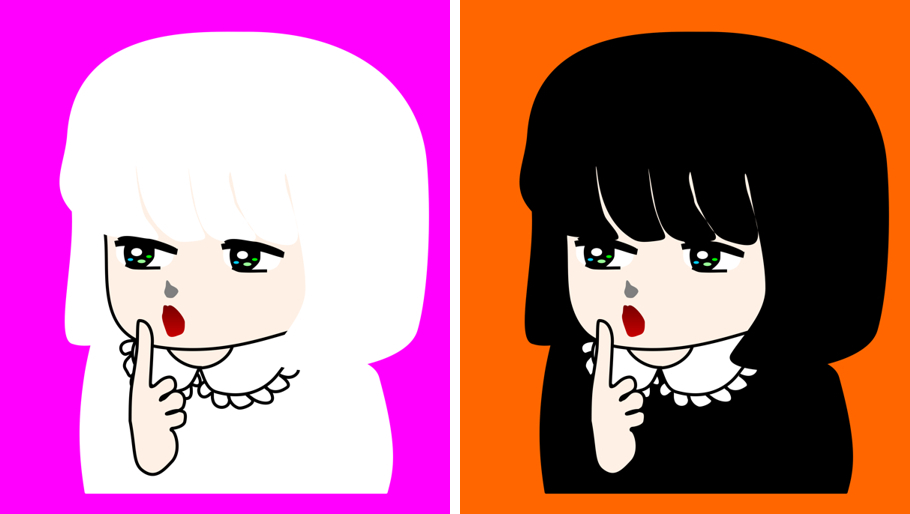
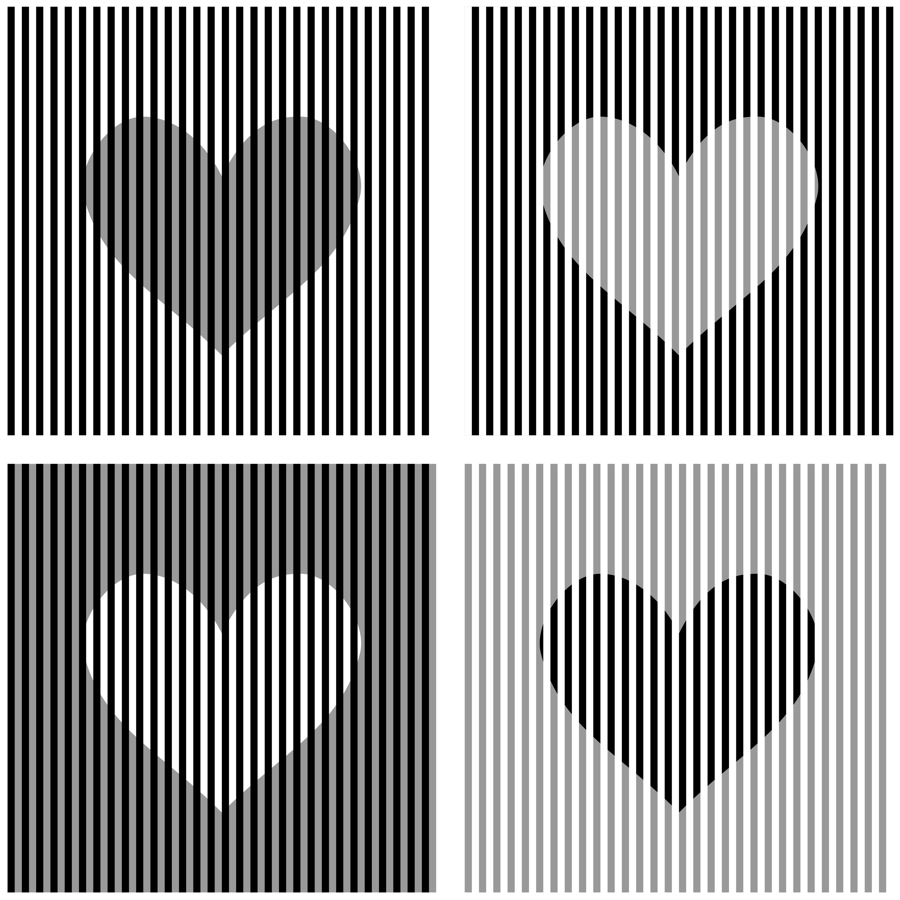
「ホワイト効果とその裏方」
上段では、同じ輝度の灰色のハートが左は暗く、右は明るく見える。ハートの内外の縞模様を入れ換えたのが下段で、同じは白黒の縞模様が、左は右より明るく見える。
Copyright Akiyoshi Kitaoka 2018 (March 18)
cf. (裏方と比較)

「白黒で白と黒」
左の絵の髪と服は白く見え、右の絵では黒く見えるが、同じ白黒の縞模様である。
Copyright Akiyoshi Kitaoka 2018 (May 20)
cf. (ホワイト効果と比較)
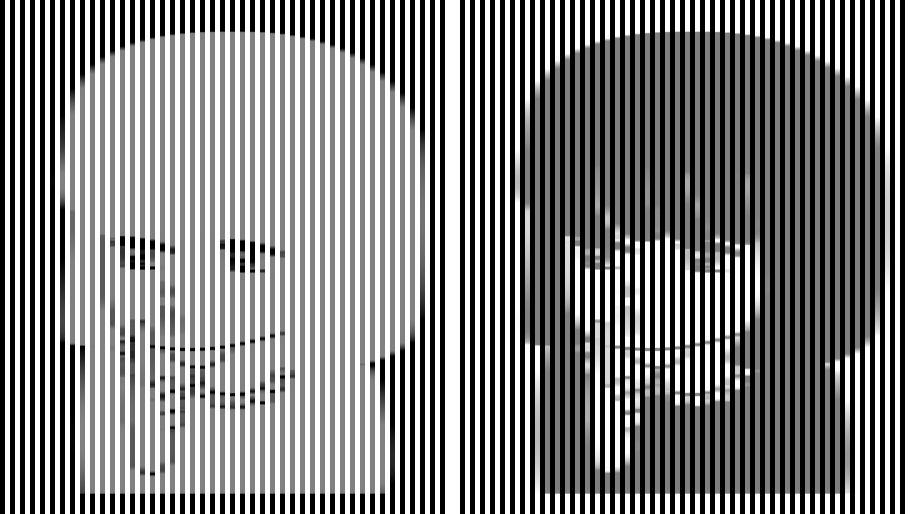
「ホワイト効果で白と黒」
左の絵の髪と服は白く見え、右の絵では黒く見えるが、同じ白黒の縞模様である。
Copyright Akiyoshi Kitaoka 2018 (May 20)
<上図の原画>
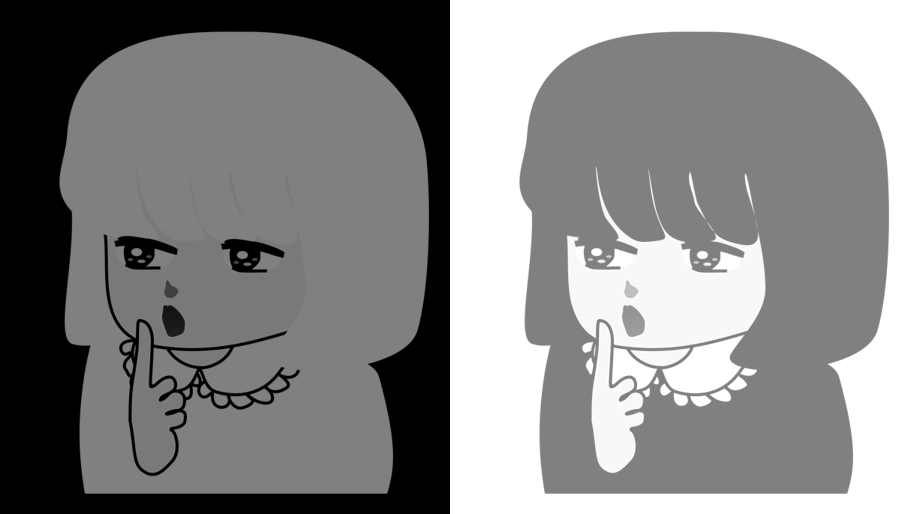
cf. (裏方と比較)
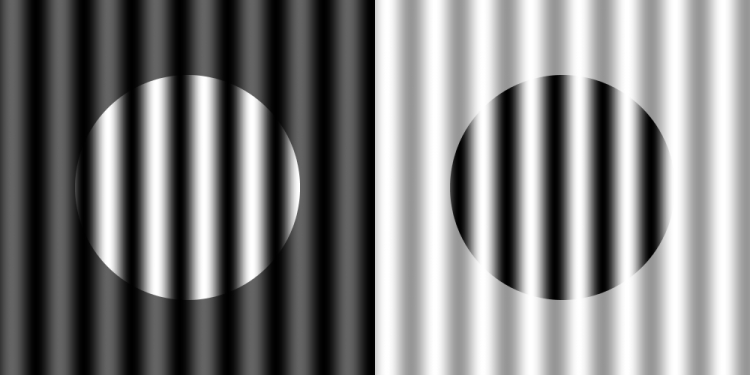
「図地分離による明るさの錯視」
左右の円内は同じ縞模様であるが、左は白い円、右は黒い円が見える。
Copyright Akiyoshi Kitaoka 2009 (February 18)
cf. (裏方と比較)
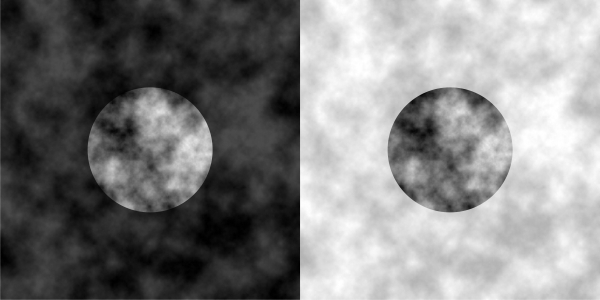
アンダーソン錯視
左の円は右の円より明るく見えるが、同一の輝度パターンである。
Anderson, B. L. and Winawer, J. (2005) Image segmentation and lightness perception. Nature, 434, 79-83.
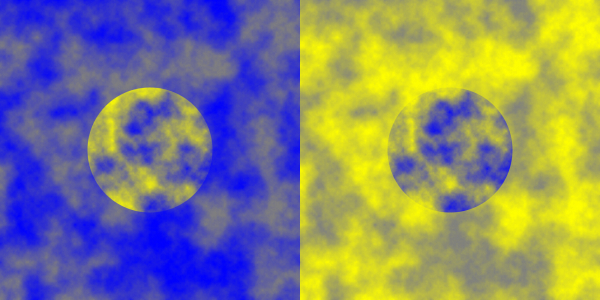
色のアンダーソン錯視
左の円は黄色く、右の円は青く見えるが、同一の色パターンである。
cf. (裏方と比較)
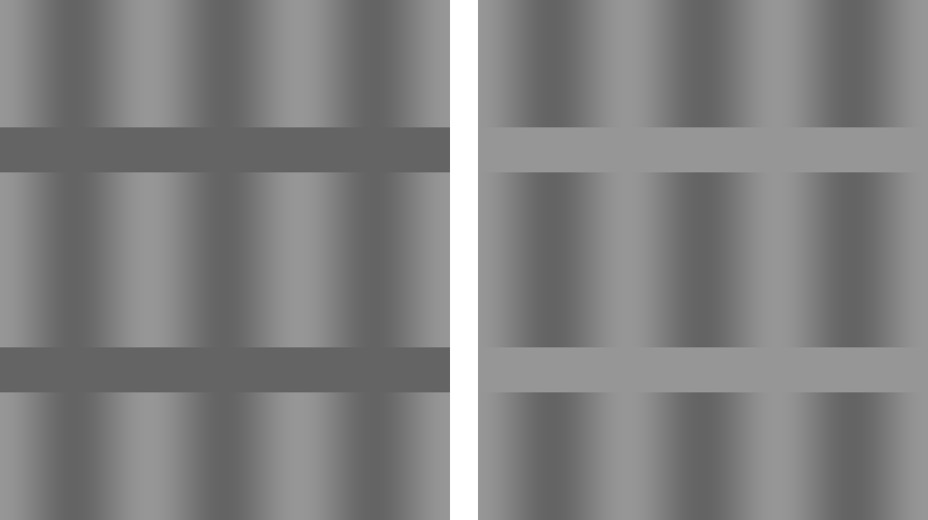
視覚的ファントム
左の暗いオクルーダー上には暗い縞部分がつながって見え、右の明るいオクルーダー上には明るい縞部分がつながって見える(視覚的ファントム)。一方、左の縞部分は明るく見え、右の縞部分は暗く見える。
並置混色とムンカー錯視の連続性
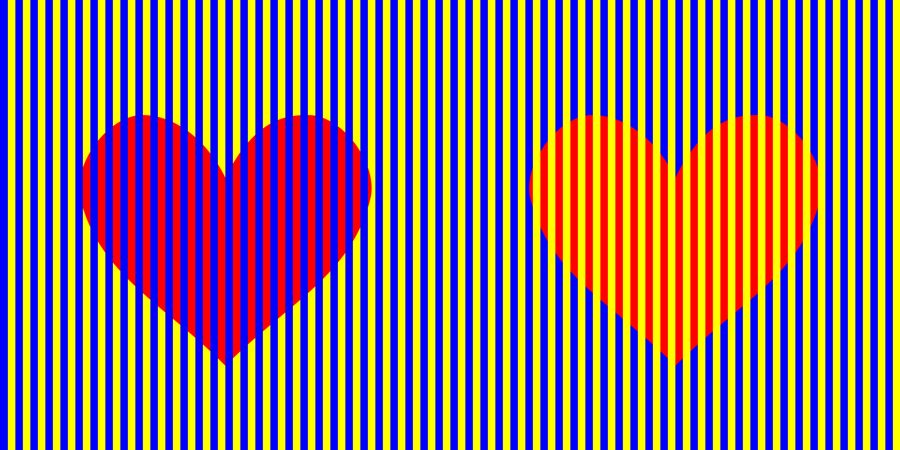
「標準的なムンカー錯視」
左のハートは赤紫に見え、右のハートはオレンジ色に見えるが、同じ赤である。
Copyright Akiyoshi Kitaoka 2015 (June 2)
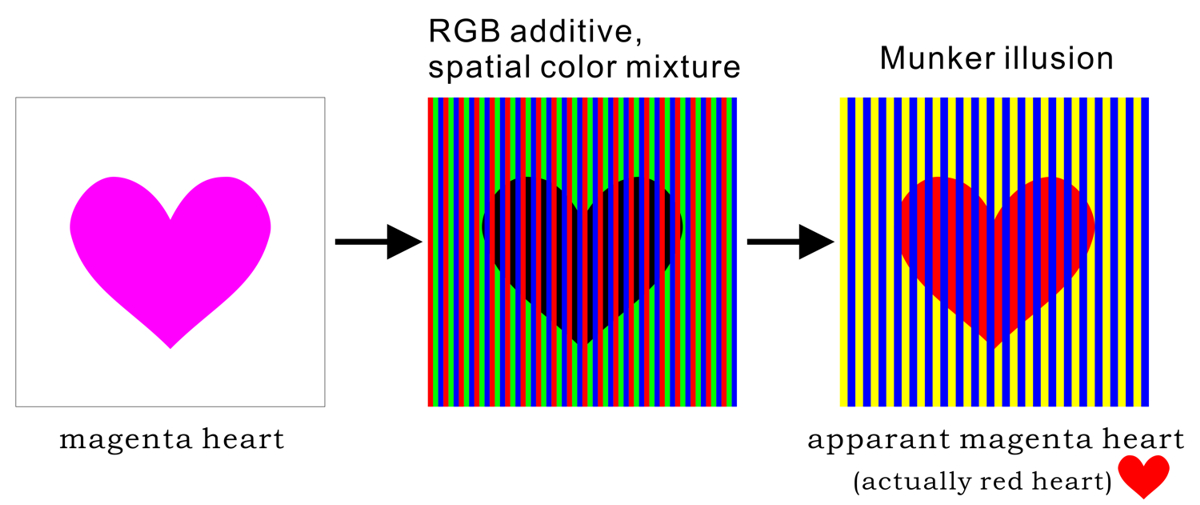
Copyright Akiyoshi Kitaoka 2016 (March 21)
下図は拡大画像
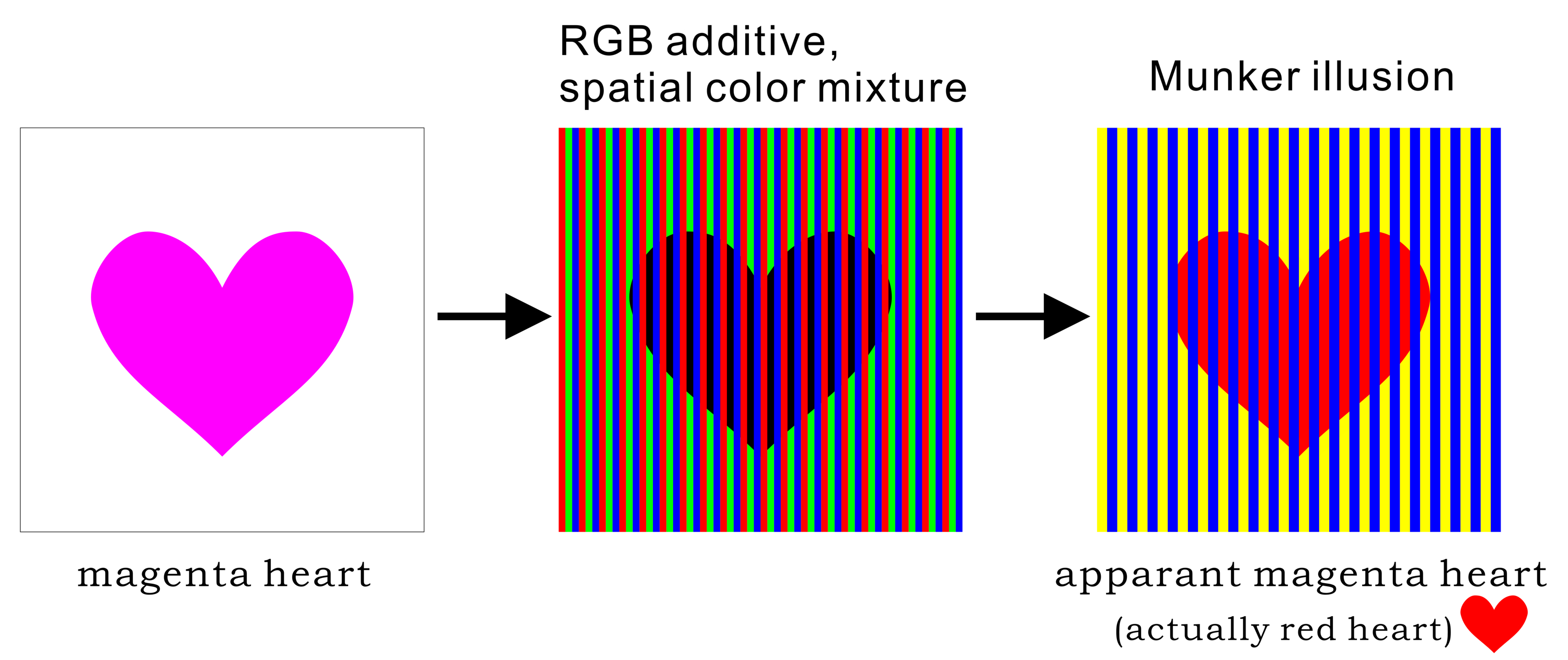
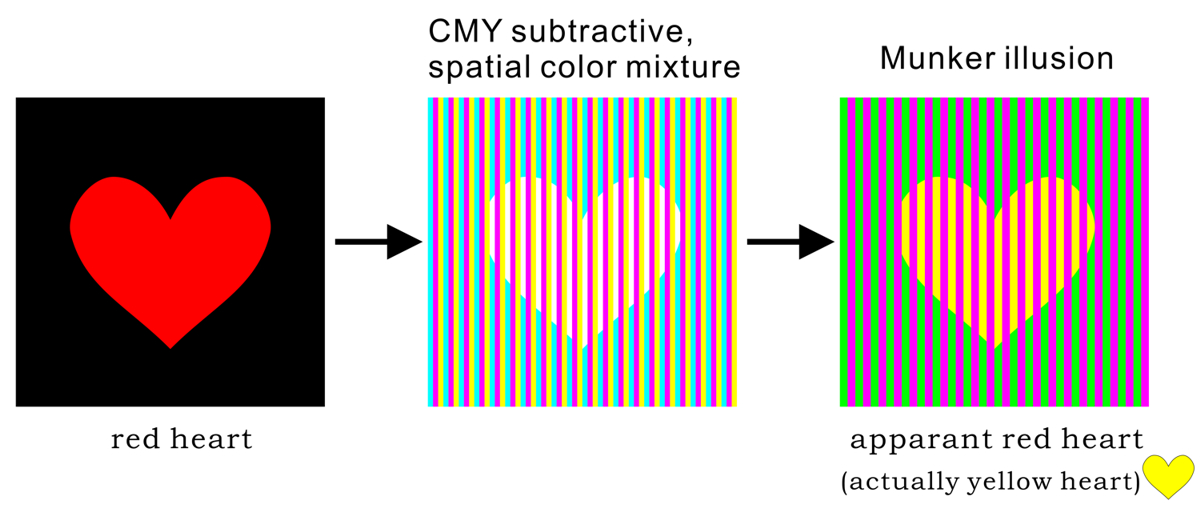
Copyright Akiyoshi Kitaoka 2016 (March 21)
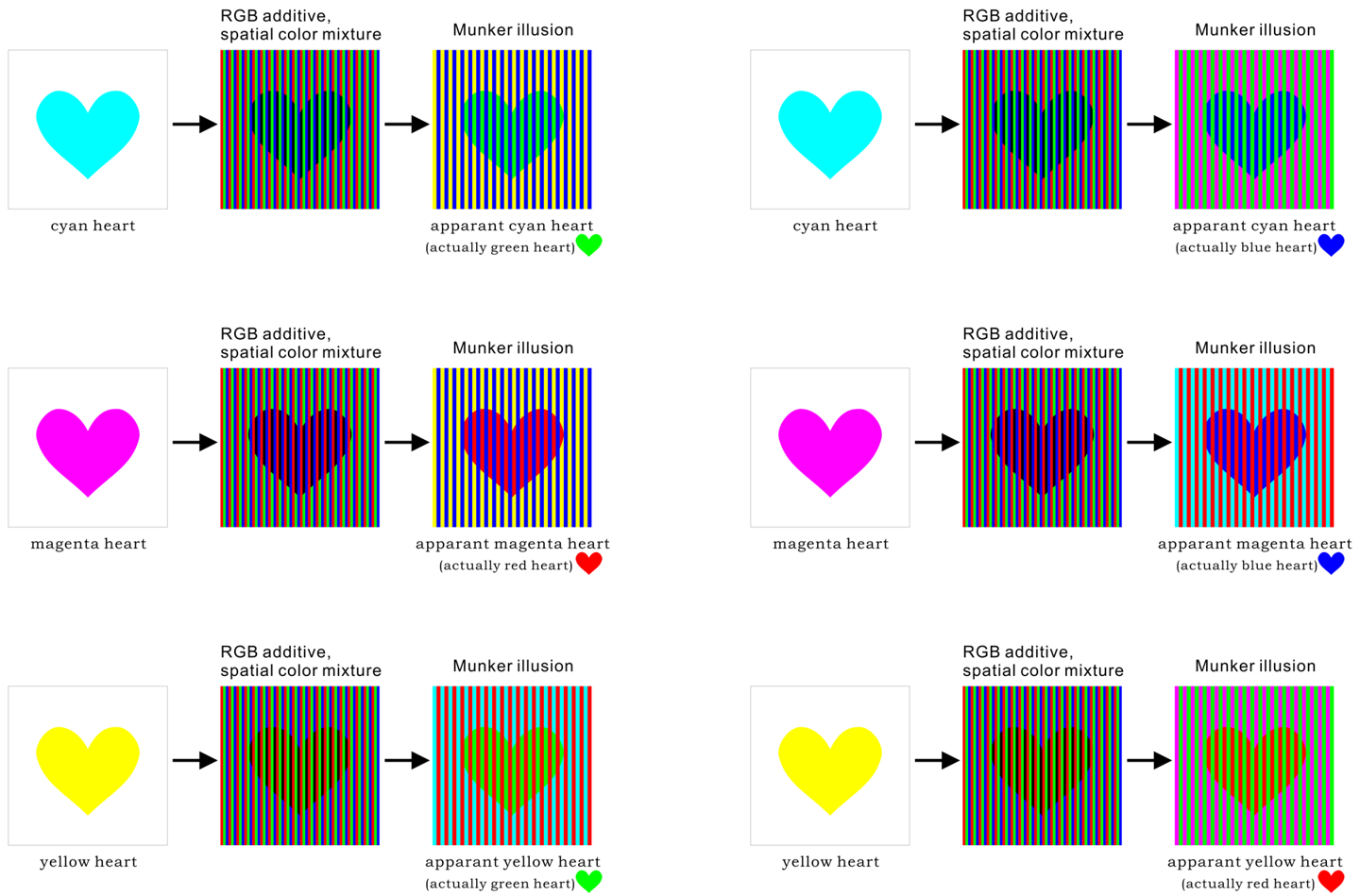
「加法混色の並置混色によるムンカー錯視の説明図」
Copyright Akiyoshi Kitaoka 2016 (March 22)
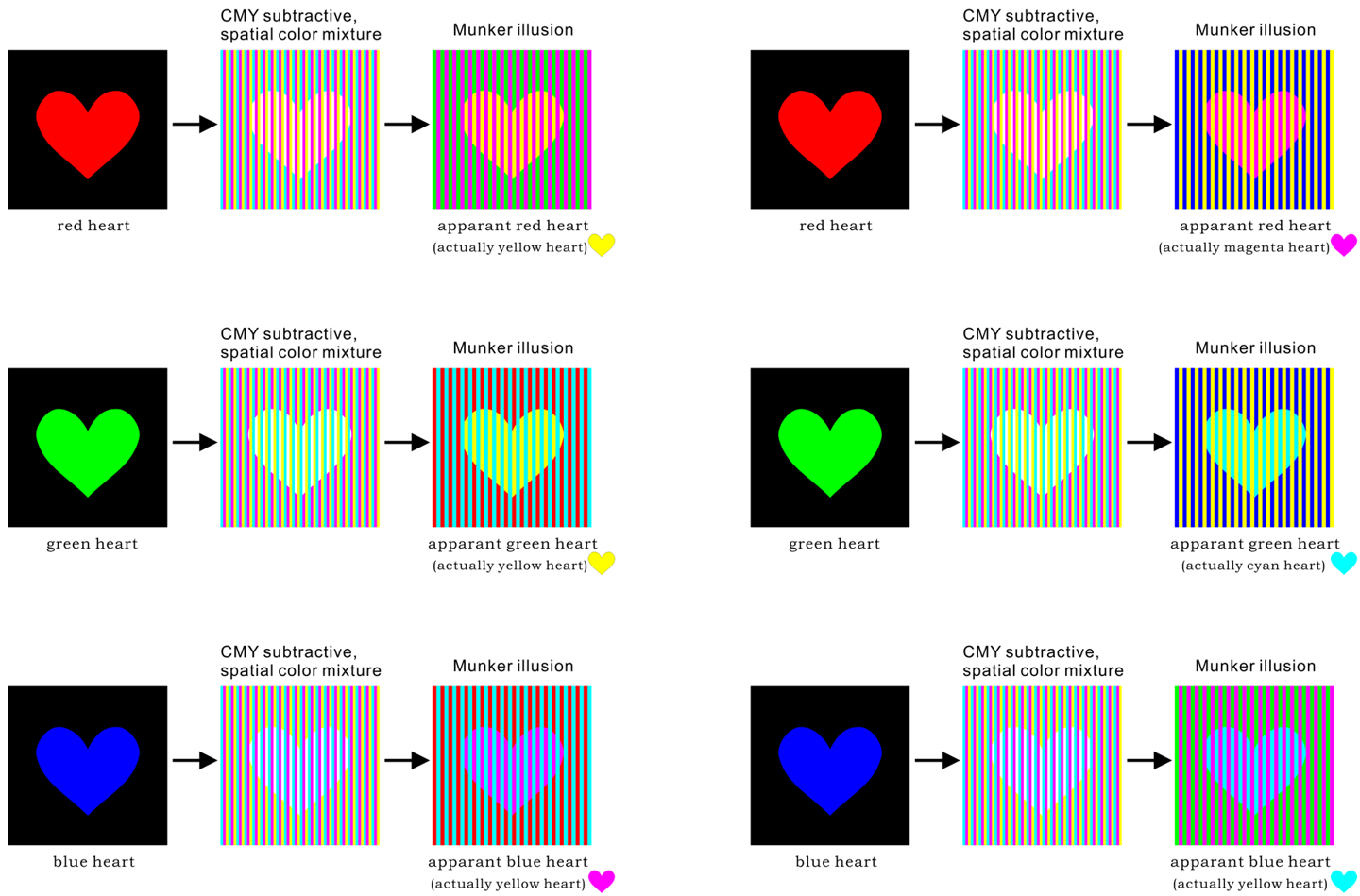
「減法混色の並置混色によるムンカー錯視の説明図」
Copyright Akiyoshi Kitaoka 2016 (March 22)

Copyright Akiyoshi Kitaoka 2017 (November 26)
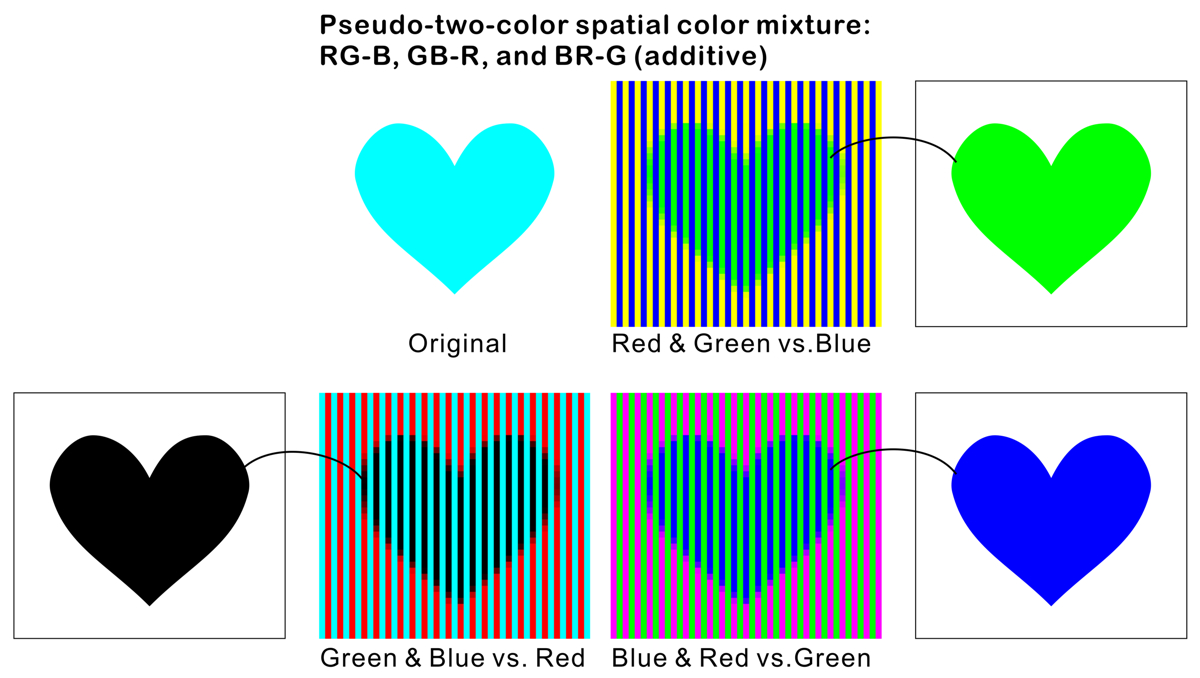
Copyright Akiyoshi Kitaoka 2017 (November 27)
特定のパターンの方向に静止画が動いて見える錯視
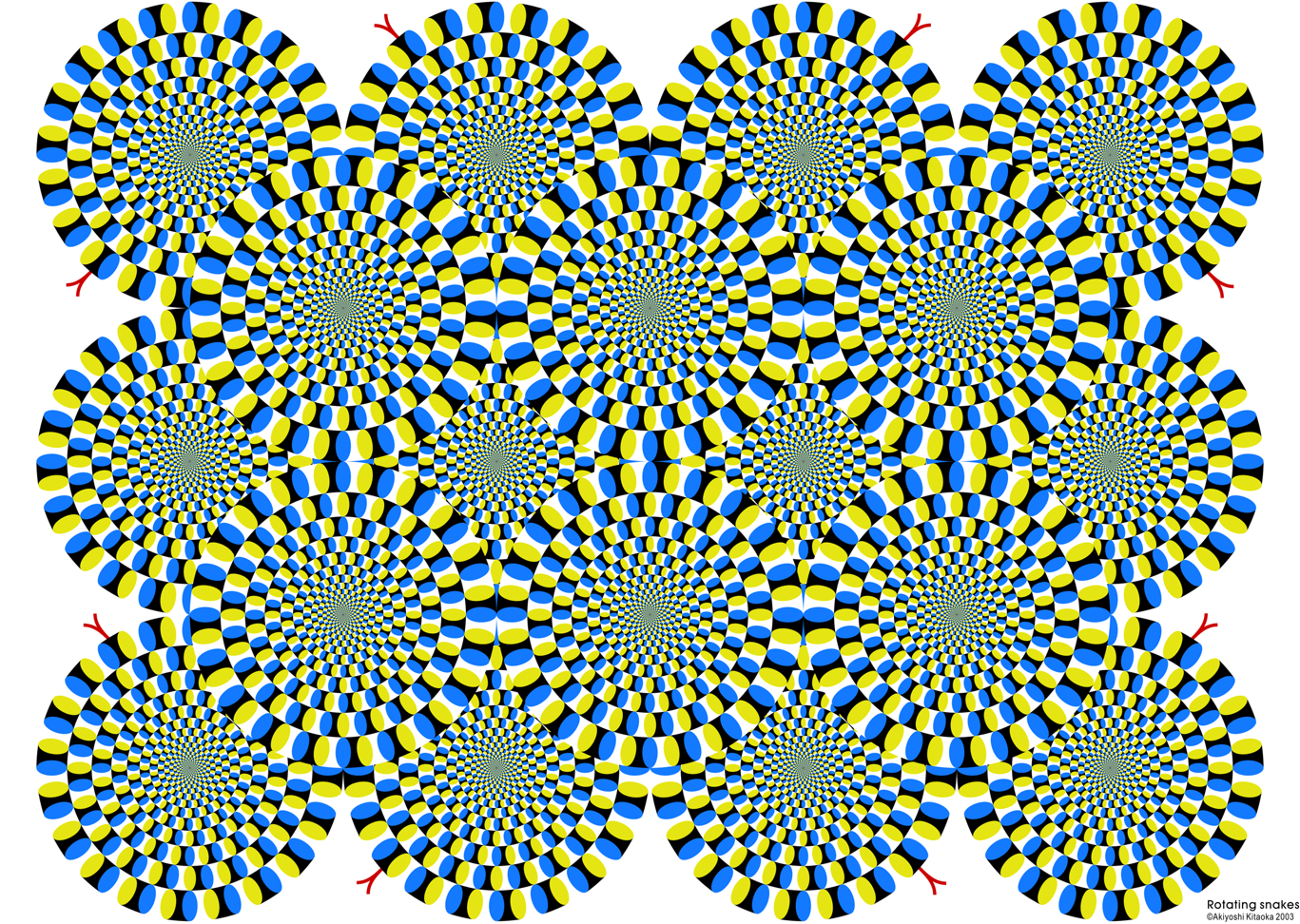
「蛇の回転」
円盤が回転して見える。
Copyright Akiyoshi Kitaoka 2003
2015年版
黒→濃い灰色→白→薄い灰色→黒 の方向に動いて見える。
Direction: black → dark-gray → white → light-gray → black
「蛇の回転」の作り方

この錯視のわかりやすい説明のある本
北岡明佳著 人はなぜ錯視にだまされるのか? トリック・アイズ メカニズム カンゼン刊
(定価:1,600円(税別) ISBN 978-4-86255-020-0) アマゾンのページ
A brief history of phenomenal aspects of the Fraser-Wilcox illusion group
<Kitaoka, A. (forthcoming). The Fraser-Wilcox illusion and its extension. In Shapiro, A. and Todorovic, D. (Eds.), Oxford Compendium of Visual Illusions. Oxford University Press.>
1. Fraser and Wilcox (1979)
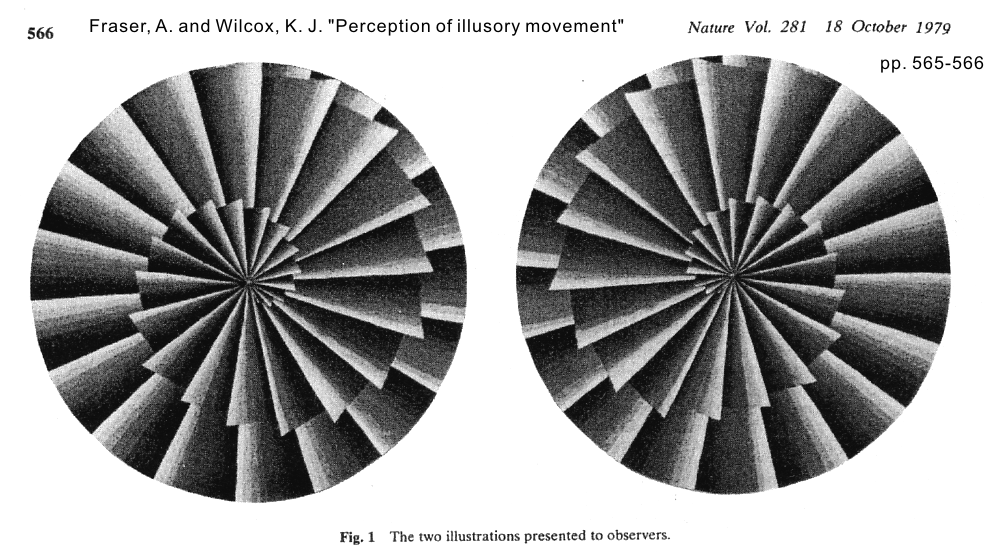
References
Fraser, A. and Wilcox, K. J. (1979). Perception of illusory movement. Nature, 281, 565-566.
Observers saw illusory motion in a stationary image which consists of repeated luminnace gradient in a saw-tooth wave form. Some reported illusory motion from dark to light along a luminance gradient, while others saw the reversal. The illusion is strong in the peripheral viewing. Fraser and Wilcox (1979) claimed that this individual difference depends on some genetic properties.
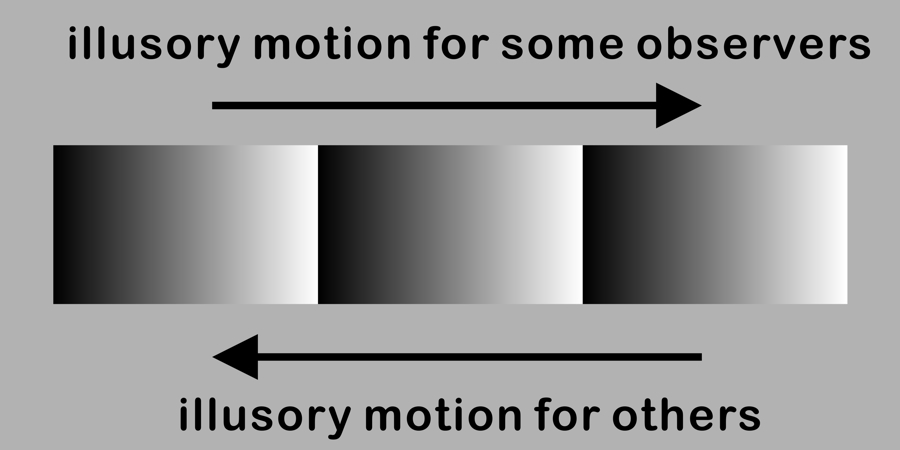
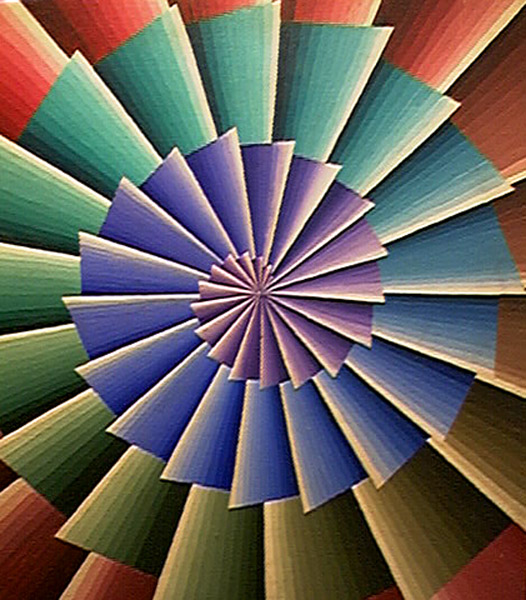
Adopted from “Alex Fraser, Geneticist and Painter”
(http://doctoralexfraser.blogspot.jp/p/spirals.html) <access August 25, 2012> (with permission from Alan Fraser)
Alex Fraser (1923-2002) was a geneticist and a painter.
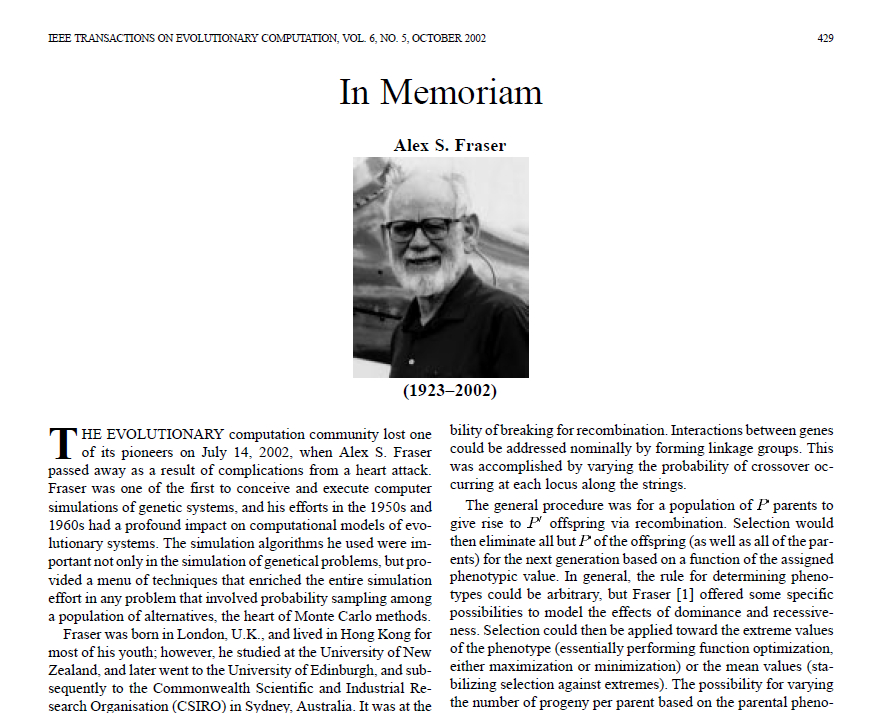
Fogel, D. B. (2002). In Memoriam: Alex S. Fraser (1923–2002). IEEE Transactions on Evolutionary Computation, 6(5), 429-430.
2. Faubert and Herbert (1999)
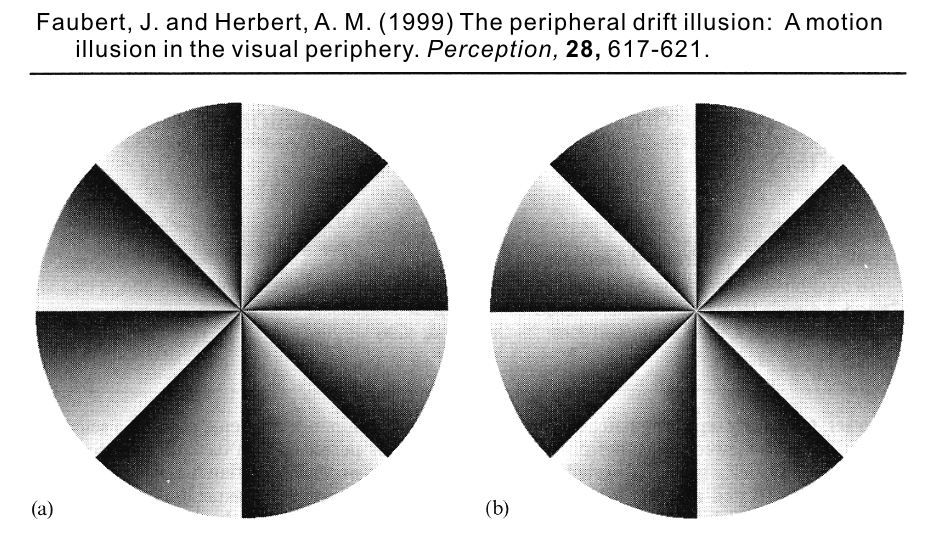
The left disk appears to rotate clockwise while the right one counterclockwise. Faubert and Herbert (1999) reported only illusory motion from dark to light along a luminance gradient. They attributed the illusory motion to the assumed time difference between responses to black and white.
References
Faubert, J. and Herbert, A. M. (1999). The peripheral drift illusion: A motion illusion in the visual periphery. Perception, 28, 617-621.
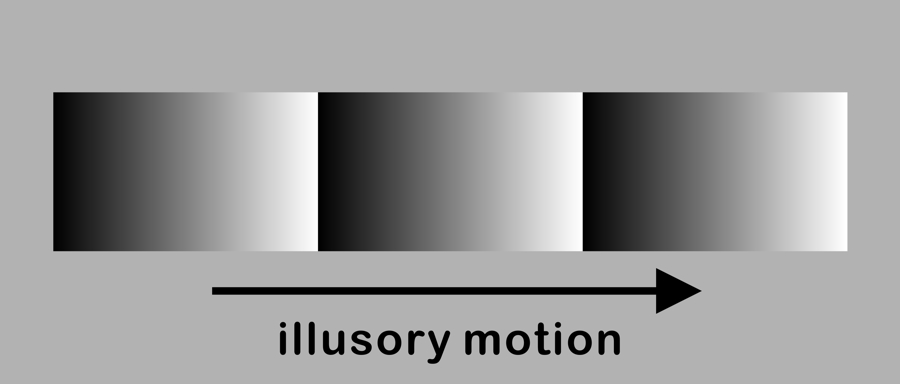
3. Naor-Raz and Sekuler (2000)
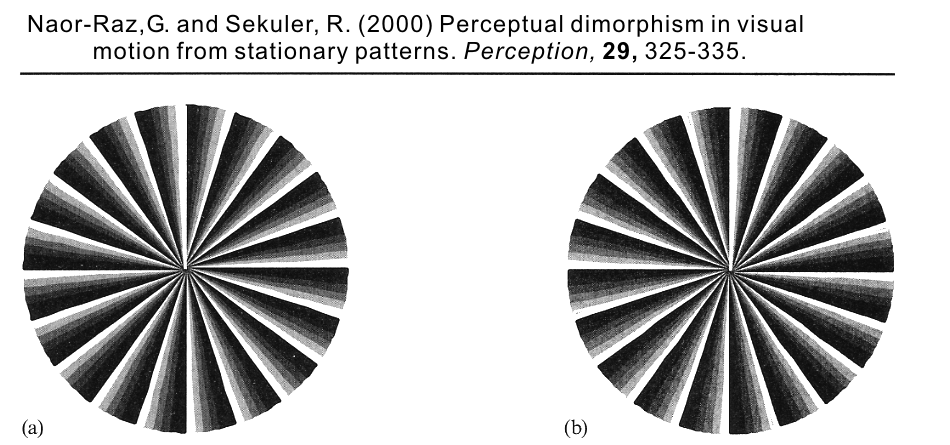
The left disk appears to rotate clockwise while the right one counterclockwise. Naor-Raz and Sekuler (2000), too, reported only illusory motion from dark to light along a luminance gradient. They revealed that the illusion magnitude is a positive, nearly linear function of contrast.
References
Naor-Raz, G. and Sekuler, R. (2000). Perceptual dimorphism in visual motion from stationary patterns. Perception, 29, 325-335.
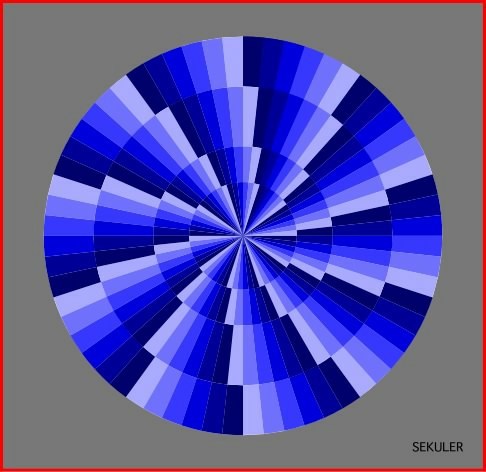
This disk appears to rotate clockwise.
This color illusion image presented by Naor-Raz and Sekuler (2000) (shown
below) might be attributable to this type.
http://www.perceptionweb.com/perception/perc0300/sekuler.jpg <access August 26, 2012>
<with permission from Robert Sekuler>

4. Kitaoka and Ashida (2003)
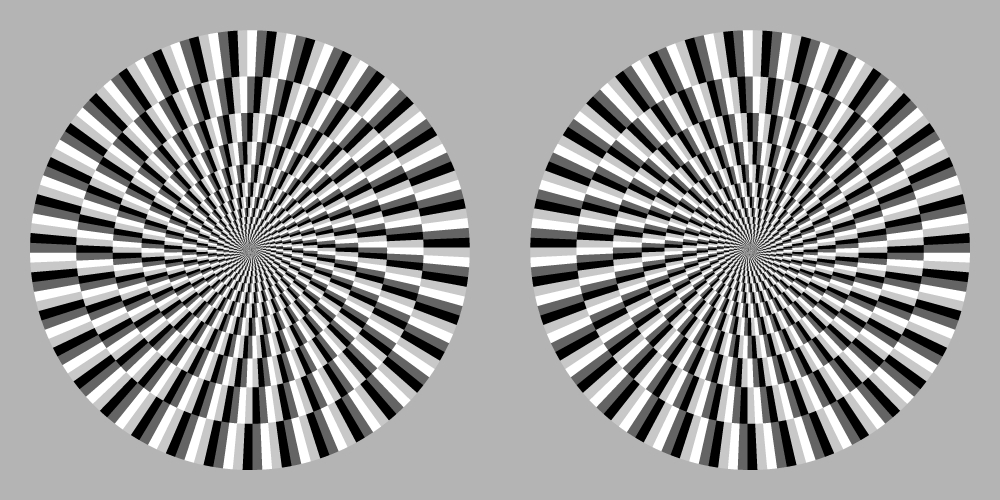
The left disk appears to rotate counterclockwise while the right one clockwise. Kitaoka and Ashida (2003) proposed that the illusory motion is strong when patterns are arranged in the following luminance order: from black, dark-gray, white, light-gray, and back to black.
References
Kitaoka, A. and Ashida, H. (2003). Phenomenal characteristics of the peripheral drift illusion. VISION (Journal of the Vision Society of Japan), 15, 261-262. PDF
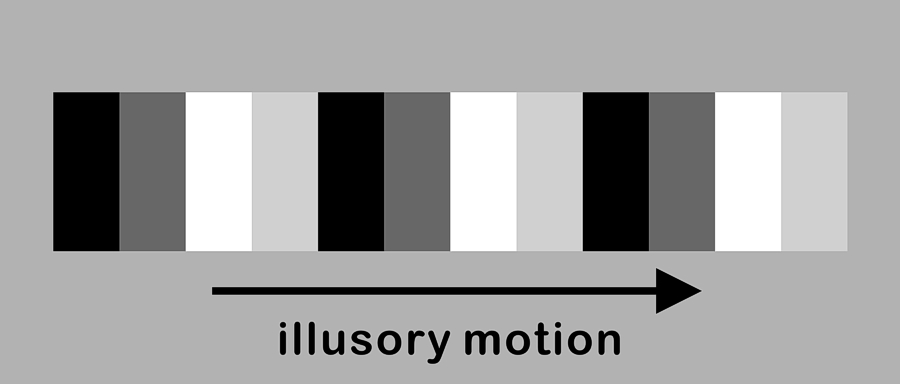
5. Kitaoka (2007)
Kitaoka (2007) classified the Fraser-Wilcox illusion into Type I, IIa, IIb and III, in each of which the dark-to-light type was distinguished from the light-to-dark one.
References
Kitaoka, A. (2007) Phenomenal classification of the “optimized” Fraser-Wilcox illusion and the effect of color. Poster presentation in DemoNight, VSS2007, GWiz, Sarasota, Florida, USA, May 14, 2007.
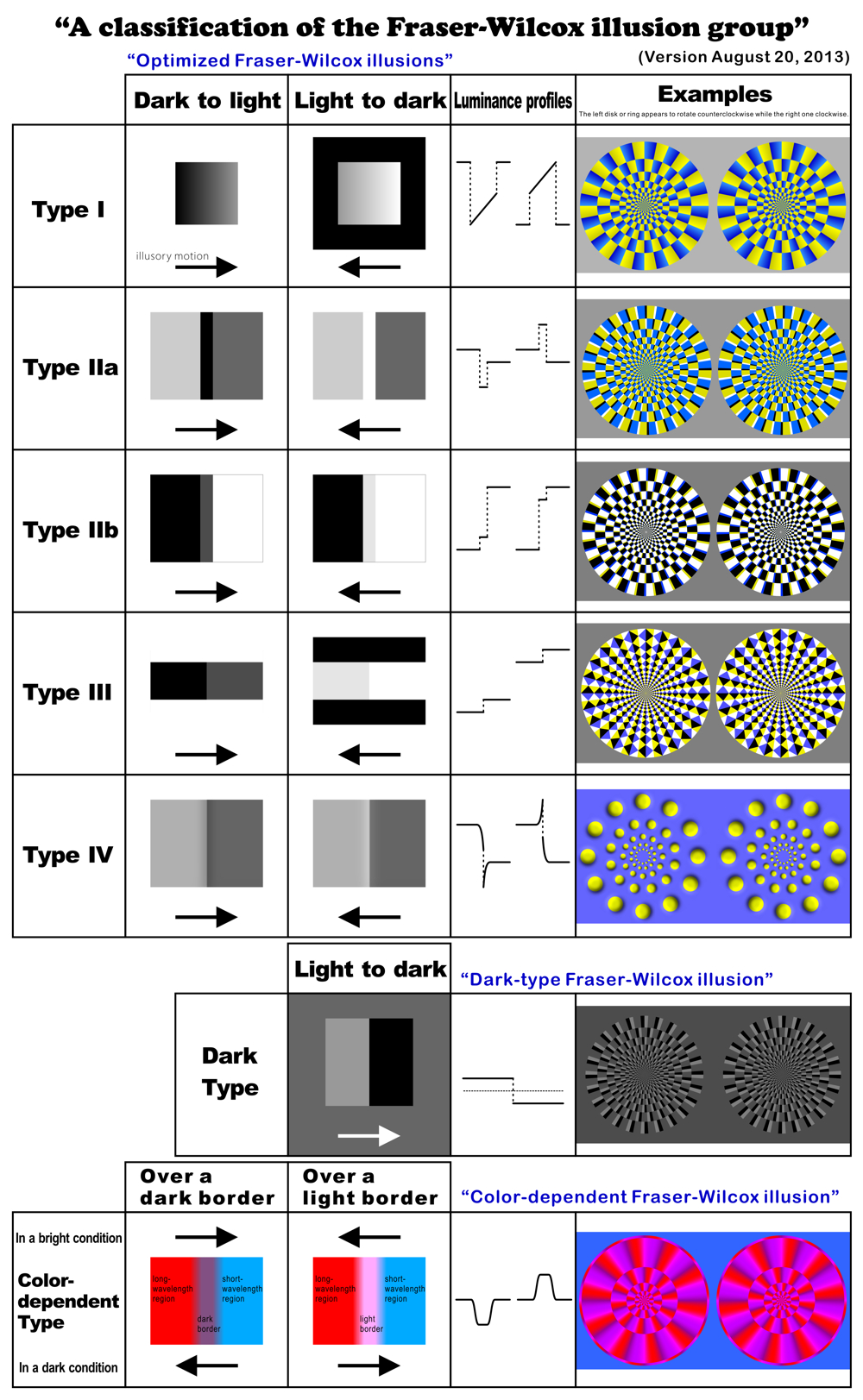
Type I

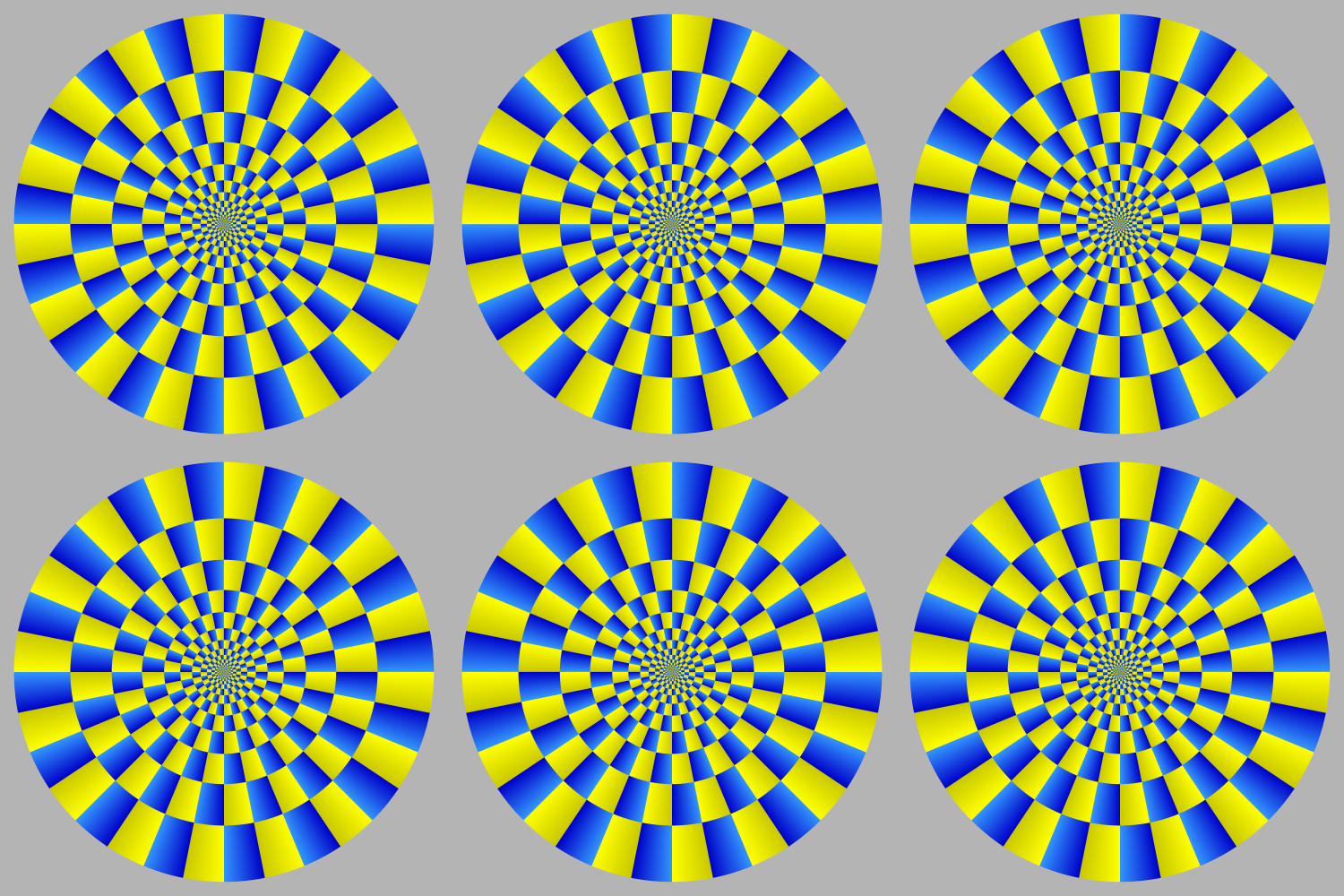
The upper-left, upper-right, and lower-middle disks appear to rotate counterclockwise
while the rest clockwise.
Type II
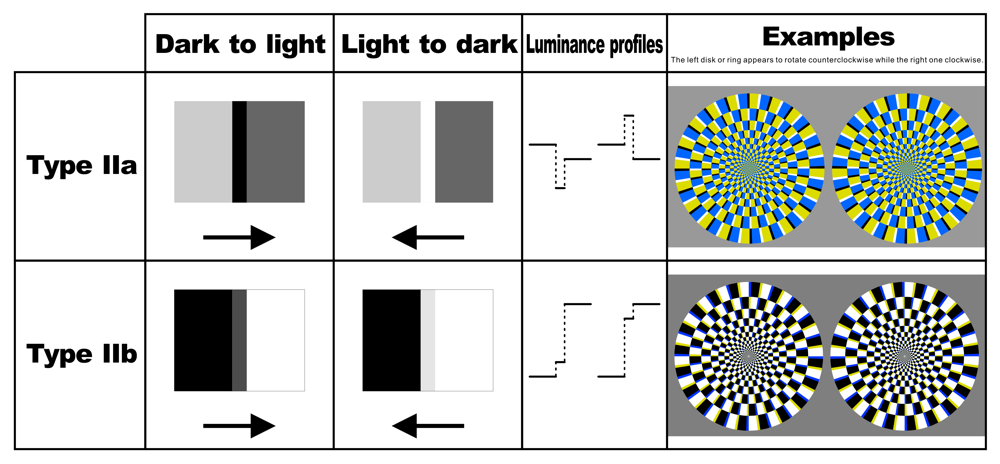
Type IIa
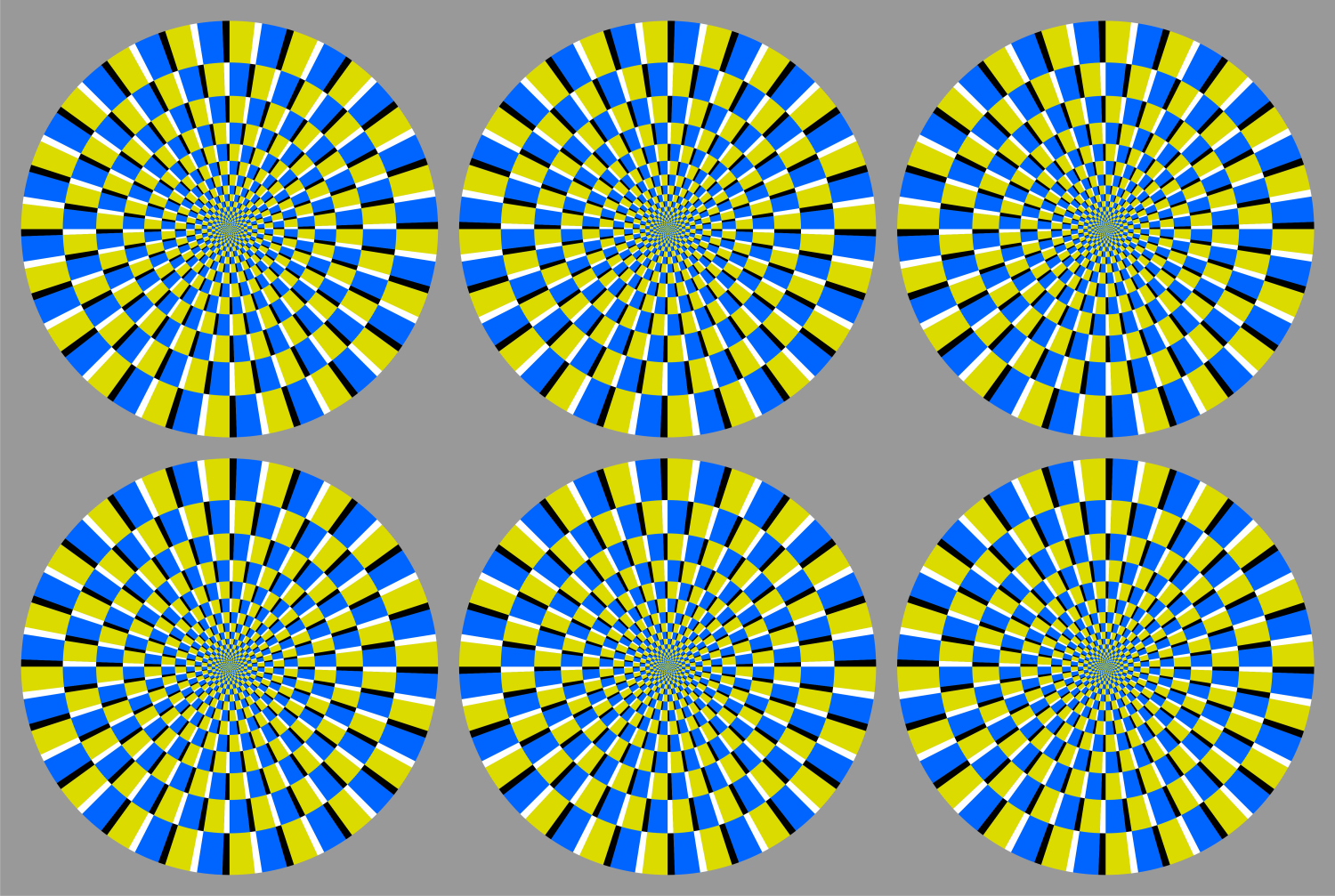
The upper-left, upper-right, and lower-middle disks appear to rotate counterclockwise
while the rest clockwise.
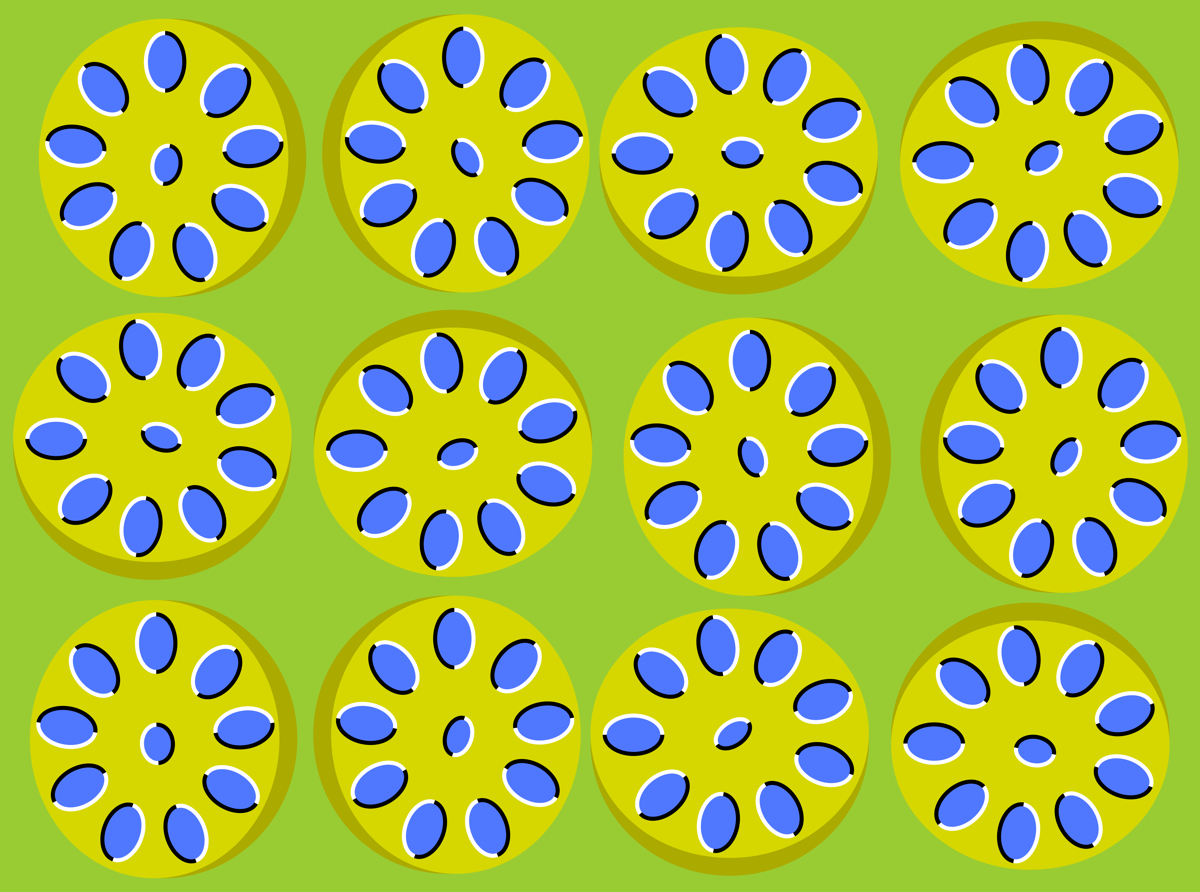
「れんこんの回転」
れんこんが回転して見える。
Copyright Akiyoshi Kitaoka 2012 (November 23)
岩国名物だとか。
「れんこんの回転」(最適化型フレーザー・ウィルコックス錯視・タイプIIa)の作り方
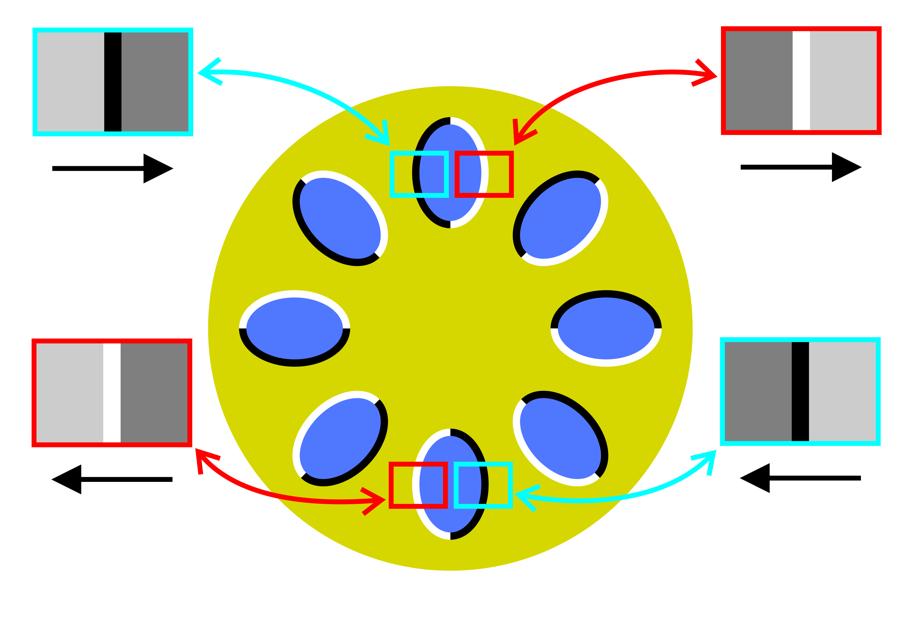
Type III

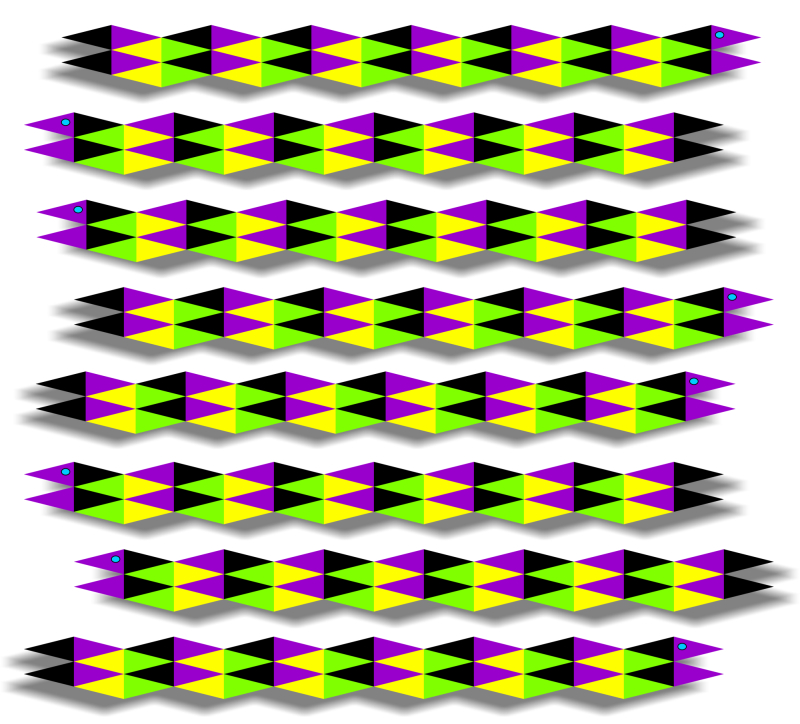
「影付きの左右に動く蛇」
蛇が左右に動いて見える。
Copyright Akiyoshi Kitaoka 2009 (June 7)
6. Kitaoka (2008a, b)
"Type IV" was added to the list.
References
Kitaoka, A. (2008a). Optimized Fraser-Wilcox illusions: a pictorial classification by Akiyoshi Kitaoka. Talk in Workshop No.005 "Experimental studies of anomalous motion illusions" in the 72nd Annual Convention of the Japanese Psychological Association, Hokkaido University, Sapporo, Japan, September 19, 2008. Talk
Kitaoka, A. (2008b). A new type of the optimized Fraser-Wilcox illusion in a 3D-like 2D image with highlight or shade. Journal of Three Dimensional Images (Japan), 22(4), 31-32. PDF PDF (manuscript) Presentation
Type IV

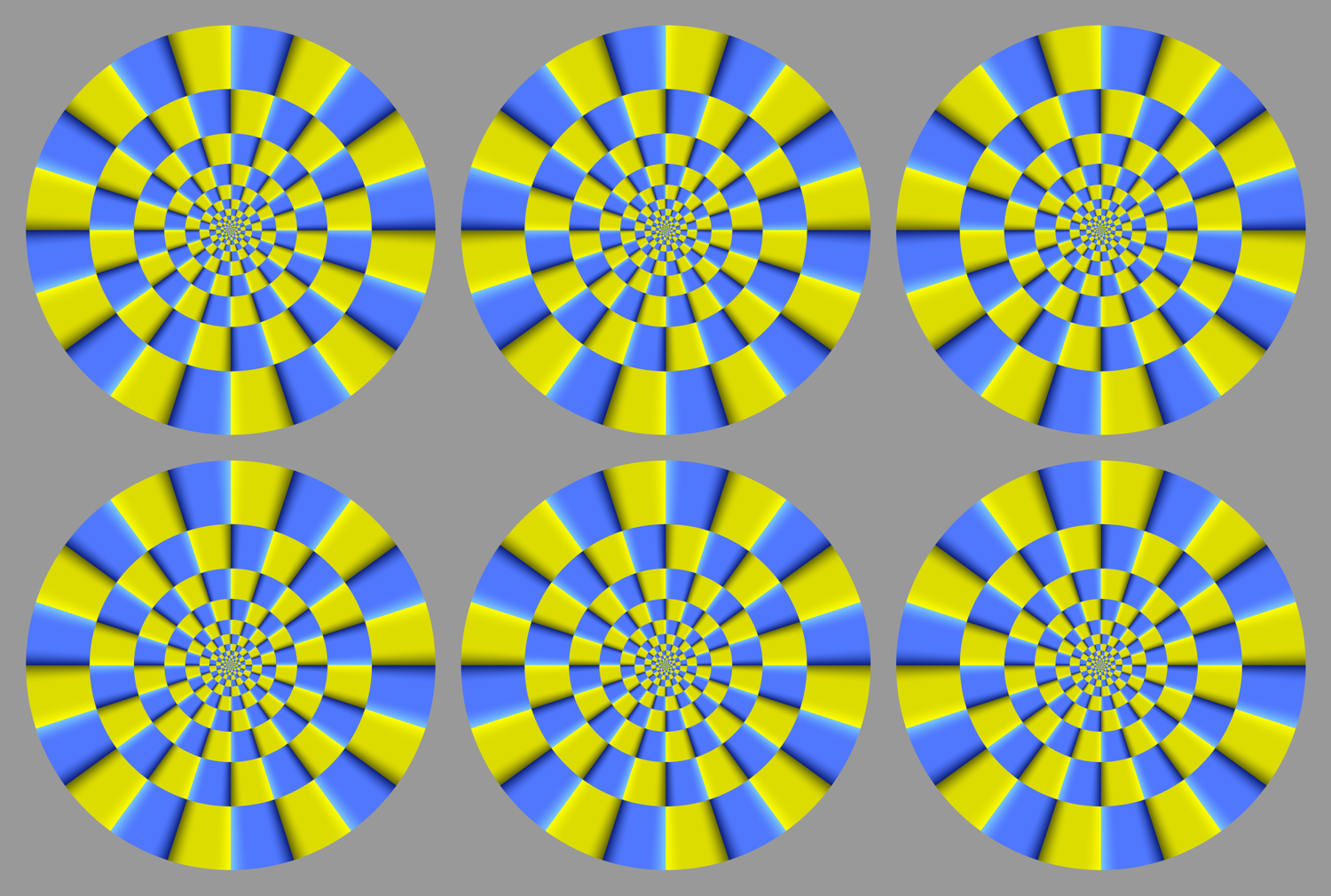
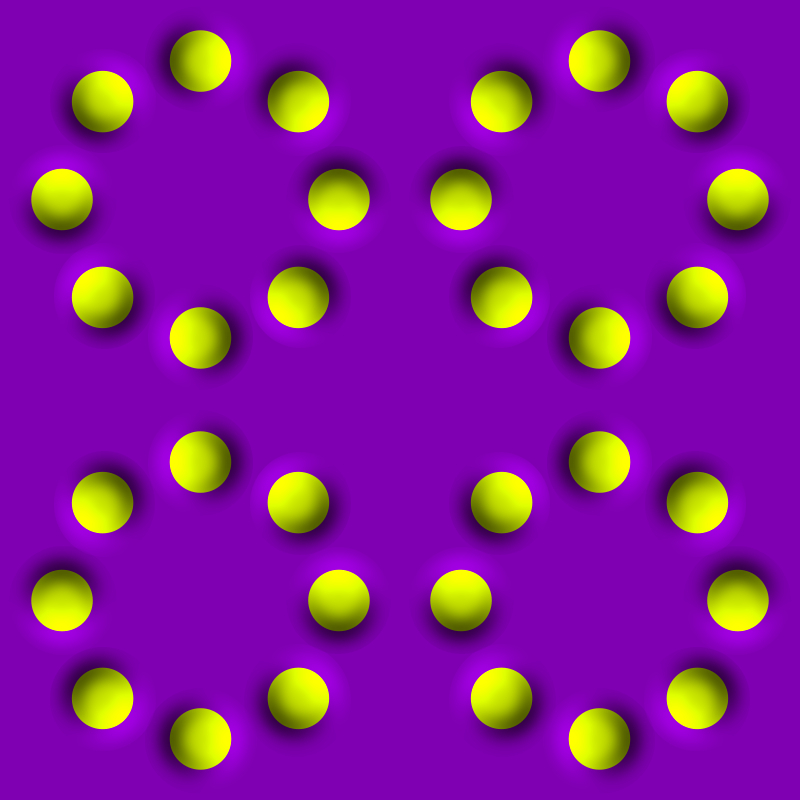
"Rotating tablets"
Rings appear to rotate.
Copyright Akiyoshi Kitaoka 2011 (July 14)
色依存のフレーザー・ウィルコックス錯視
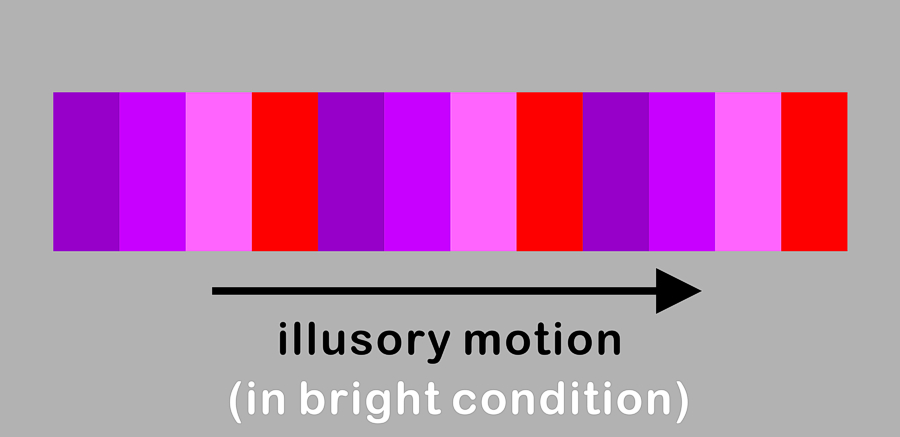
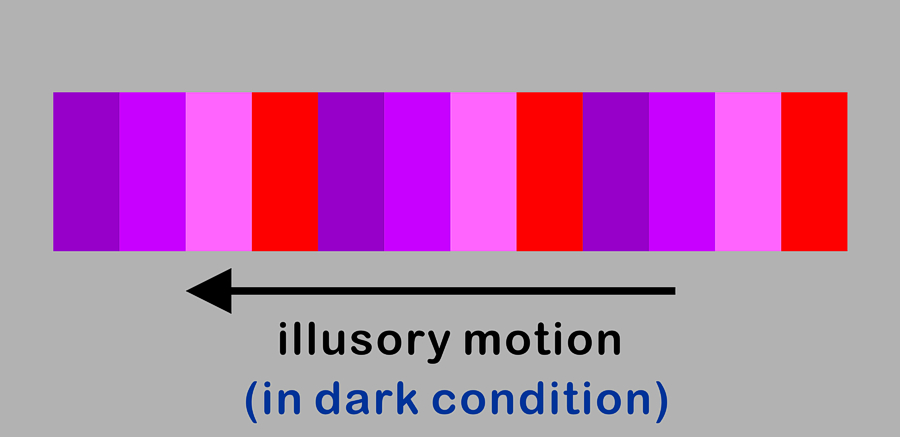
Black » dark-gray » white » light-gray » black
Purple » light purple » light red-purple » red »
purple
References
Kitaoka, A. (2010). Introduction to visual illusion. Tokyo: Asakura-shoten (in Japanese). Book
Kitaoka, A. (2012a). Designs using the red Fraser-Wilcox illusion. Journal
of the Color Science Association of Japan, 36, Supplement, 188-189. PDF (color manuscript) Talk
Kitaoka, A. (2012b) The Fraser-Wilcox illusion and its extension. Perception 41 ECVP Abstract Supplement, page 91 (Poster September 3, 2012). Poster PDF
Kitaoka, A. (2014). Color-dependent motion illusions in stationary images and their phenomenal dimorphism. Perception, 43(9), 914-925.

Kitaoka, A. (2014). Color-dependent motion illusions in stationary images and their phenomenal dimorphism. Perception, 43(9), 914-925.
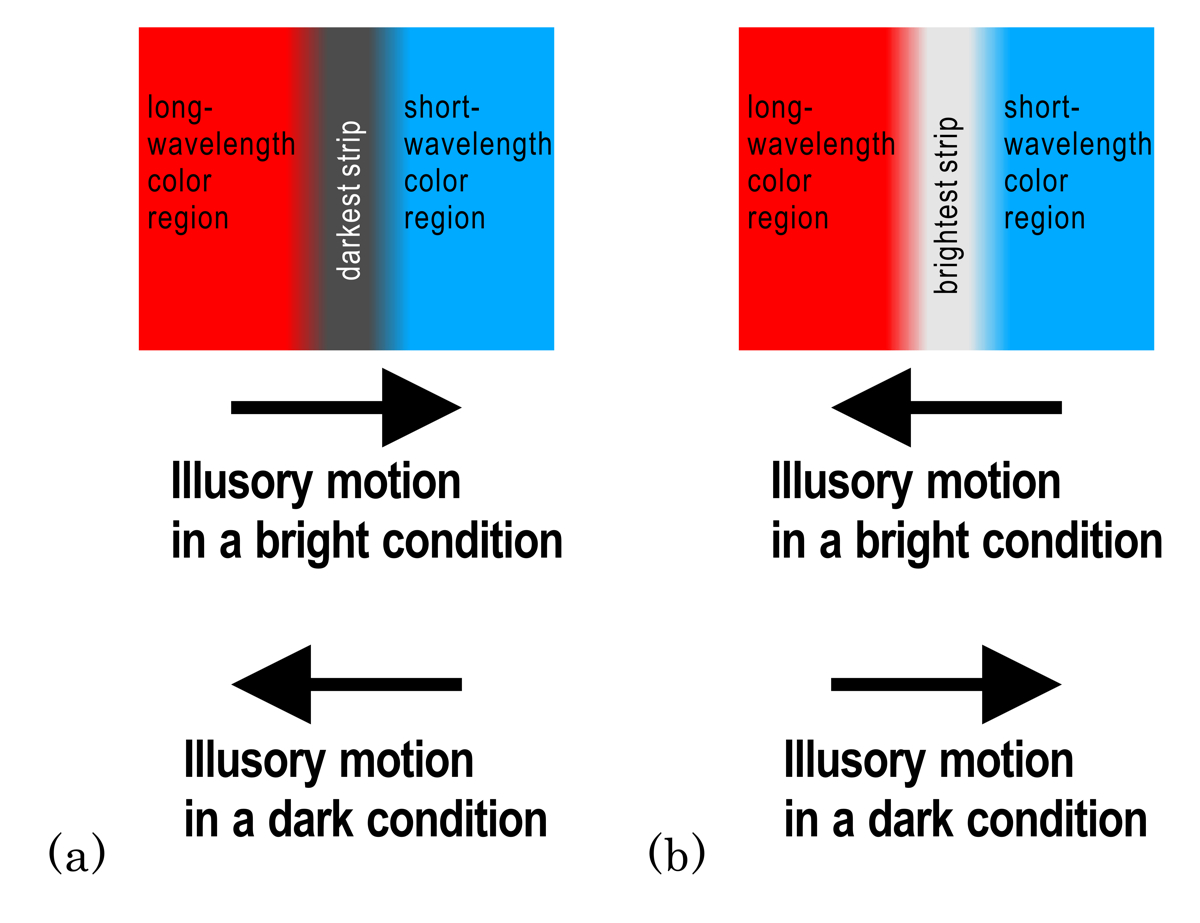
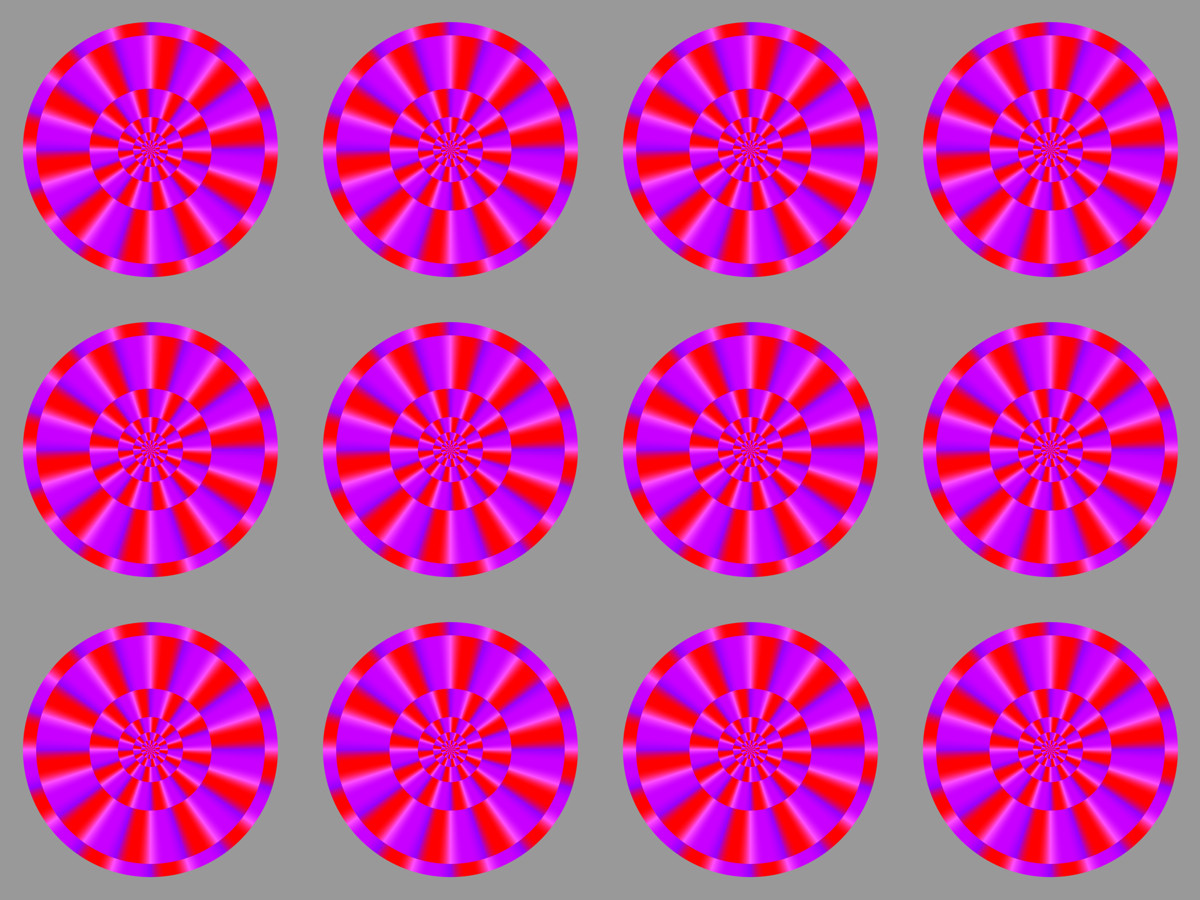
「赤と紫の円盤の回転」
明るいディスプレーでは円盤は時計回りに回転して見える。印刷物を暗いところで見ると反時計回りに回転して見える。
Copyright Akiyoshi Kitaoka 2013 (February 6)
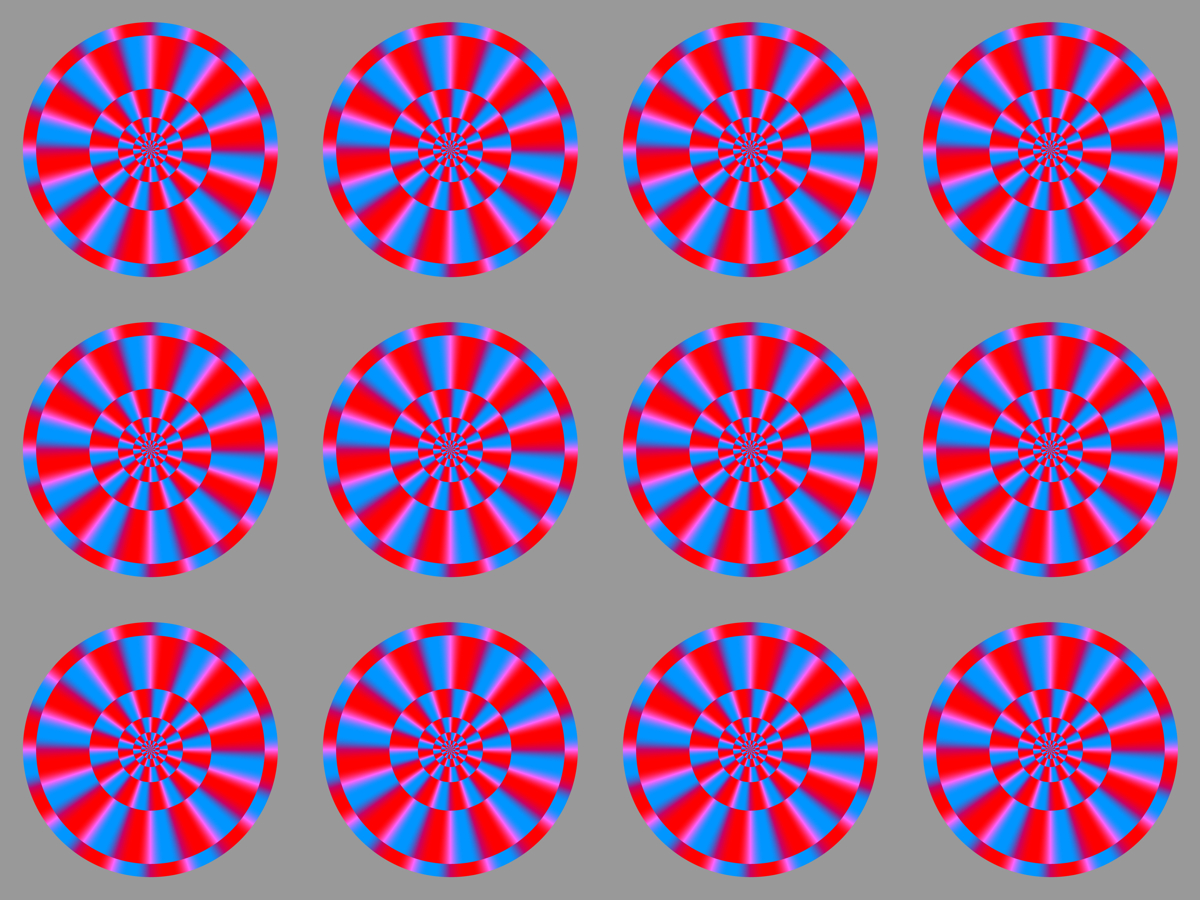
「赤とシアンの円盤の回転 3」
明るいディスプレーでは円盤は時計回りに回転して見える。印刷物を暗いところで見ると反時計回りに回転して見える。
Copyright Akiyoshi Kitaoka 2014 (January 27)
Dark type
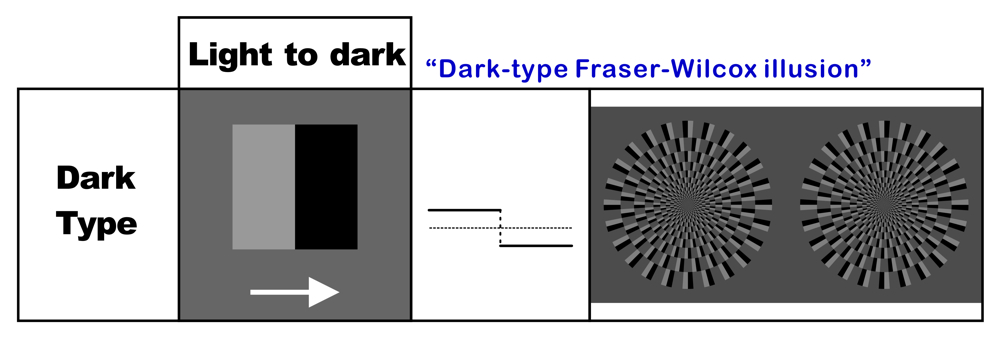
<Example> The upper-left, upper-right, and lower-middle disks appear
to rotate counterclockwise while the rest clockwise.
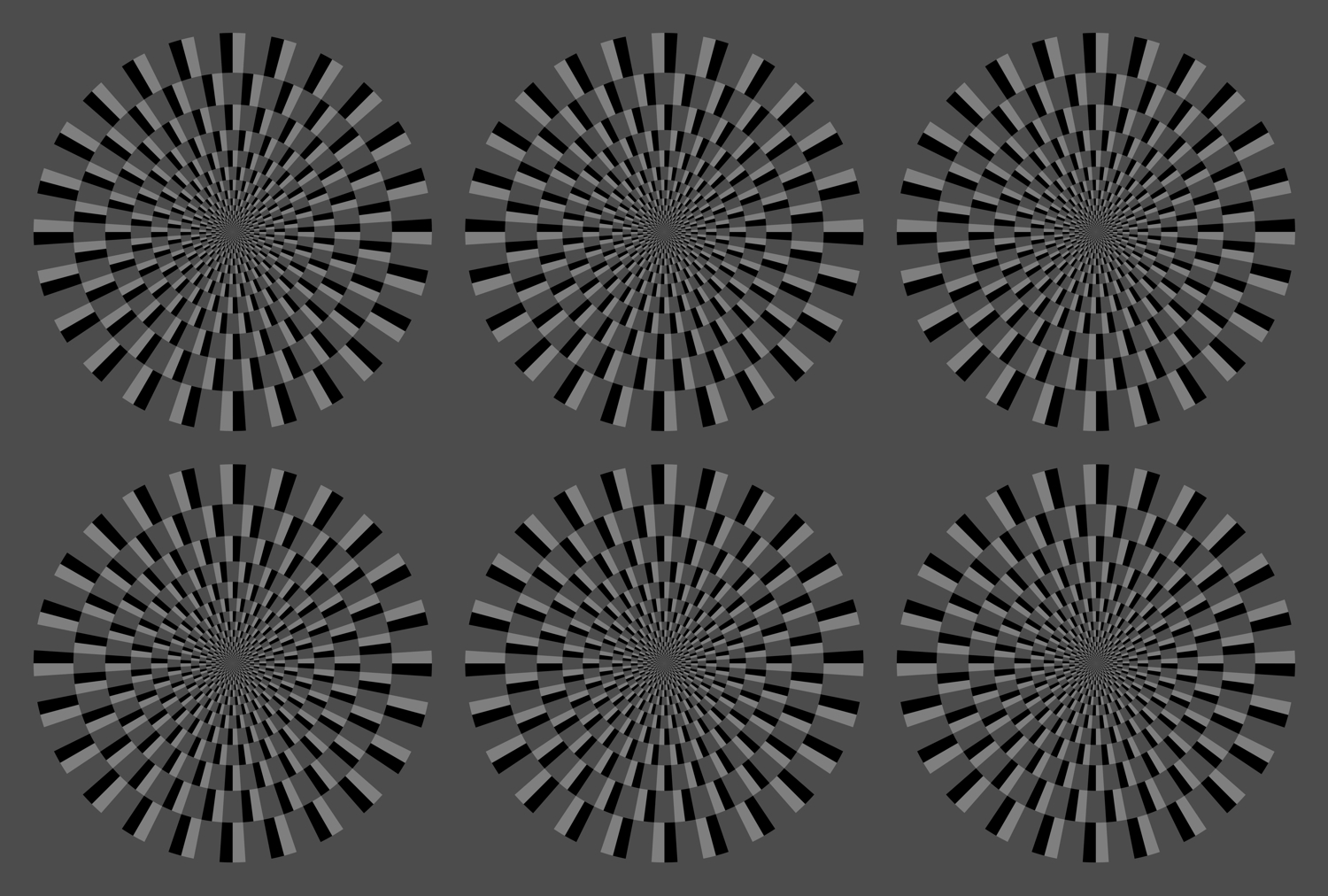
Kitaoka, A. (2012). The Fraser-Wilcox illusion and its extension. Perception 41 ECVP Abstract Supplement, page 91 (Poster September 3, 2012). Poster PDF
傾き錯視と静止画が動いて見える錯視の随伴
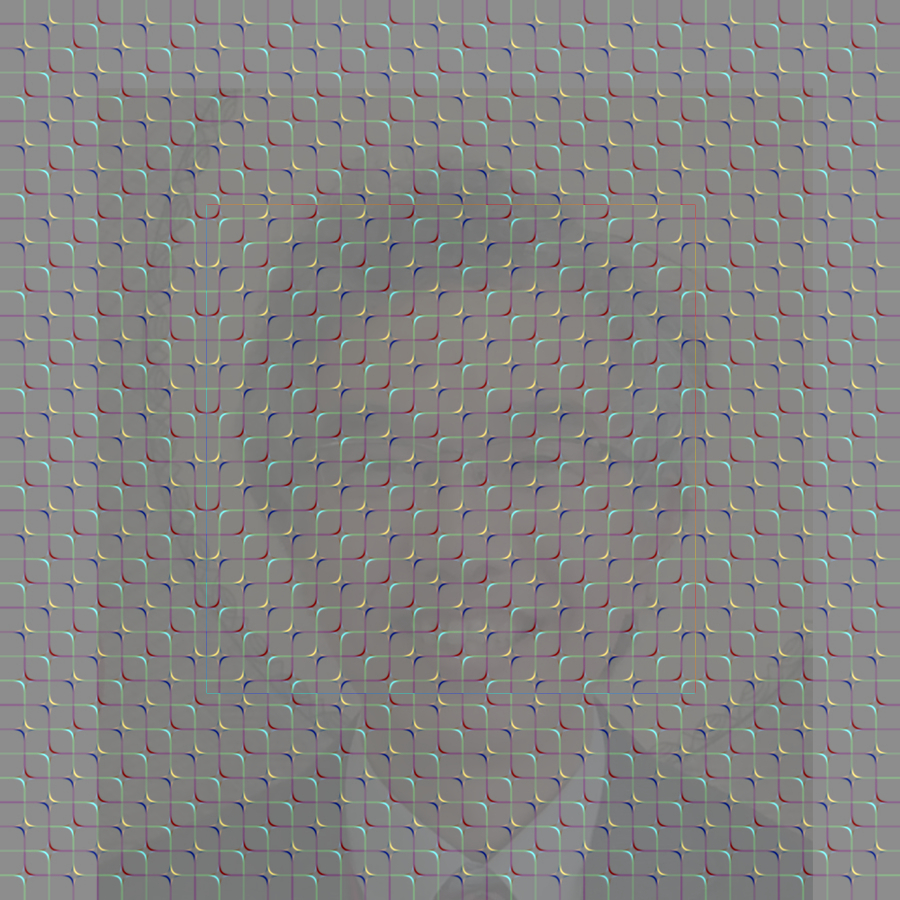
「秋の沼をエンボス変換した画像と北岡明の顔画像の合成」
内側の領域が動いて見える。
Copyright Akiyoshi Kitaoka 2018 (January 4)
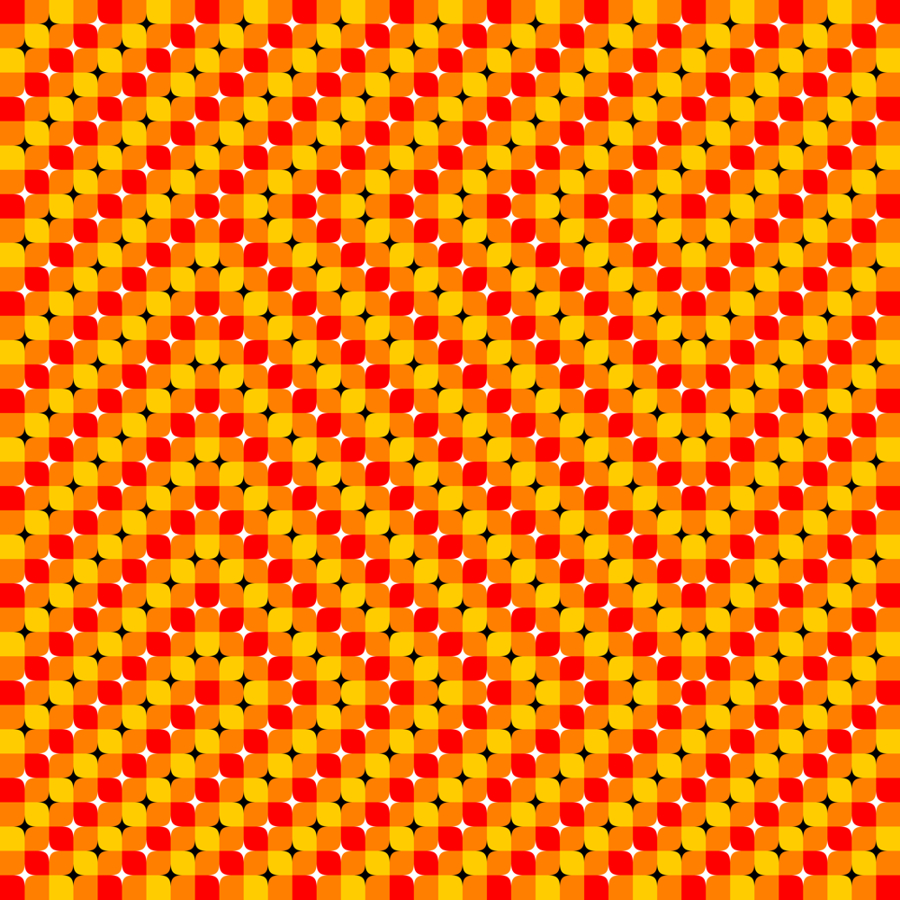
「秋の沼」
(再リメイク版)
中の正方形領域が動いて見える。
Copyright A.Kitaoka 2000, 2003, 2007, 2010
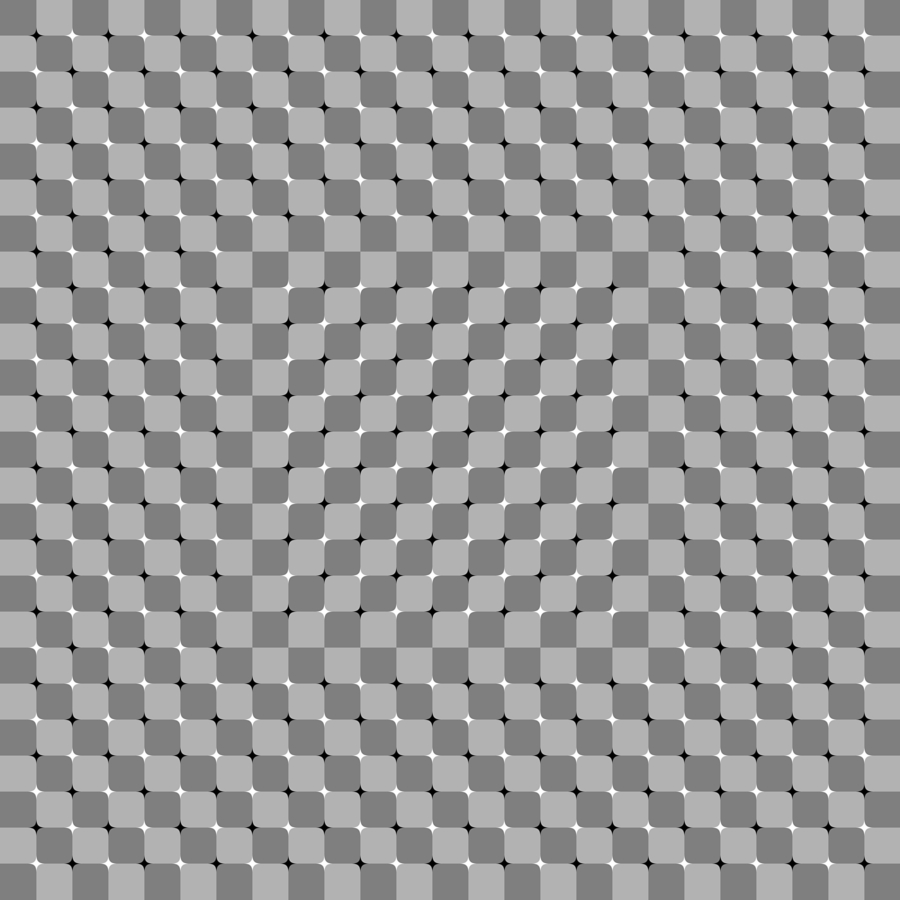
四色錯視・基本図形
「トゲトゲドリフト錯視」
内側の正方形領域が動いて見える。内側の正方形領域が菱形に(垂直は右に、水平は左に傾いて)見える。
"Drifting spines illusion"
The inset appears to move. The inset is a square but verticals appear to tilt clockwise and horizontals appear to tilt clockwise.
Copyright Akiyoshi Kitaoka 2010 (July 6)
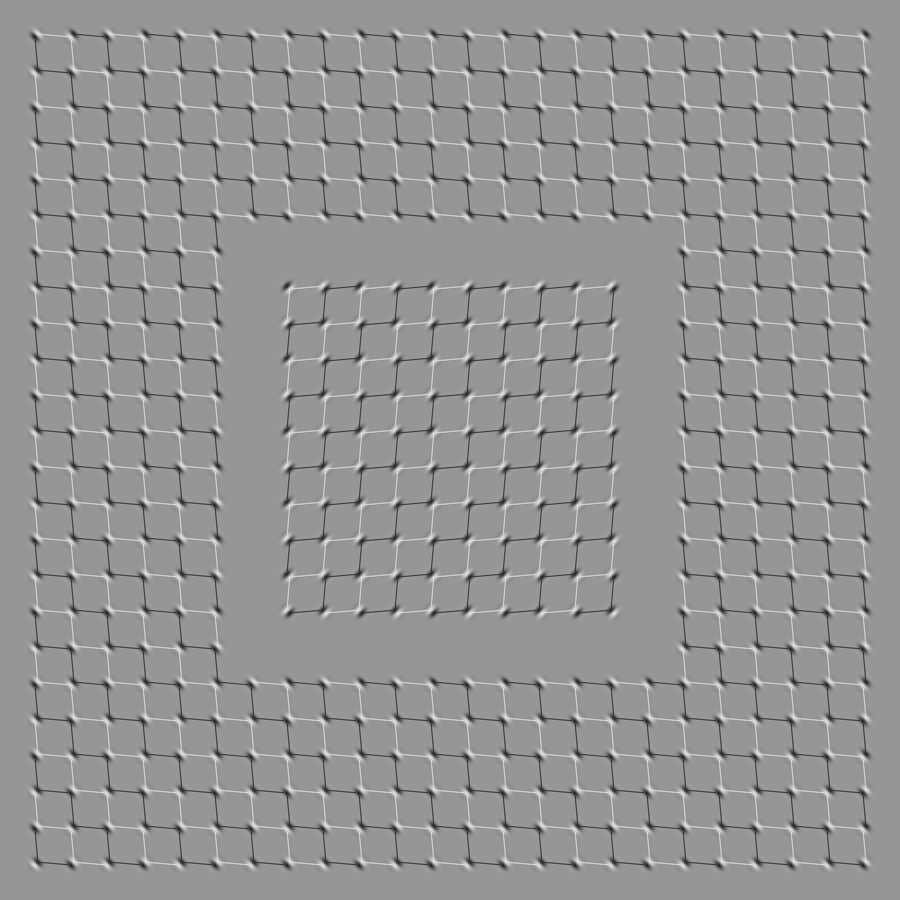
「エンボスドリフト錯視」
(サイン波型)
内側の正方形領域が動いて見える。
"Drifting Emboss illusion"
(sine type)
The inset appears to move.
Copyright Akiyoshi Kitaoka 2016 (February 15)
Kitaoka, A. (2010). The Fraser illusion family and the corresponding motion illusions. 33rd European Conference on Visual Perception (ECVP 2010), EPFL, Lausanne, Switzerland, 2010/8/22-26, 8/26 poster publication. Poster (Kitaoka, A. (2010) The Fraser illusion family and the corresponding motion illusions. Perception, 39, Supplement, #61, p. 178)
Kitaoka, A. (2010) Tilt illusions and anomalous motion illusions. (talk in the RIKEN BSI on July 2, 2010) Presentation (html)
波線渦巻き錯視
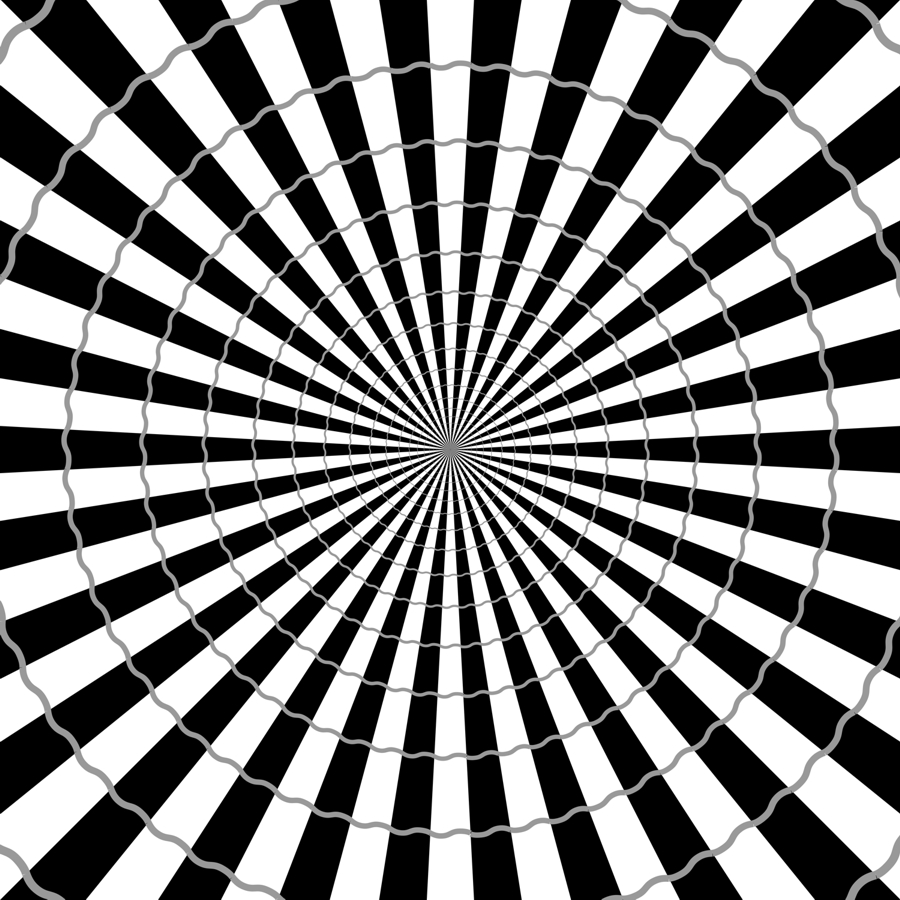
「重力波の渦巻き 2018」
灰色の波線は同心円なのだが、左に回転して中心に向かう渦巻きに見える。
Copyright Akiyoshi Kitaoka 2018 (June 7)
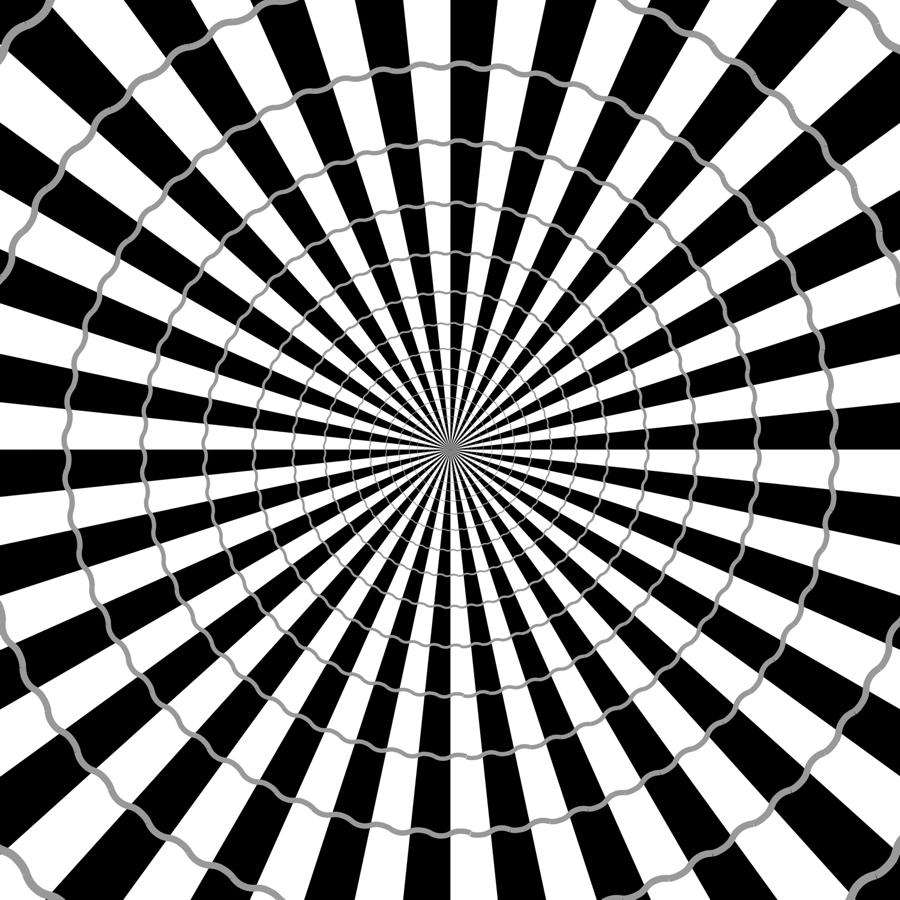
波の位相を±90度ずらすと、渦巻き錯視の方向が反転する。灰色の波線は同心円なのだが、右に回転して中心に向かう渦巻きに見える。
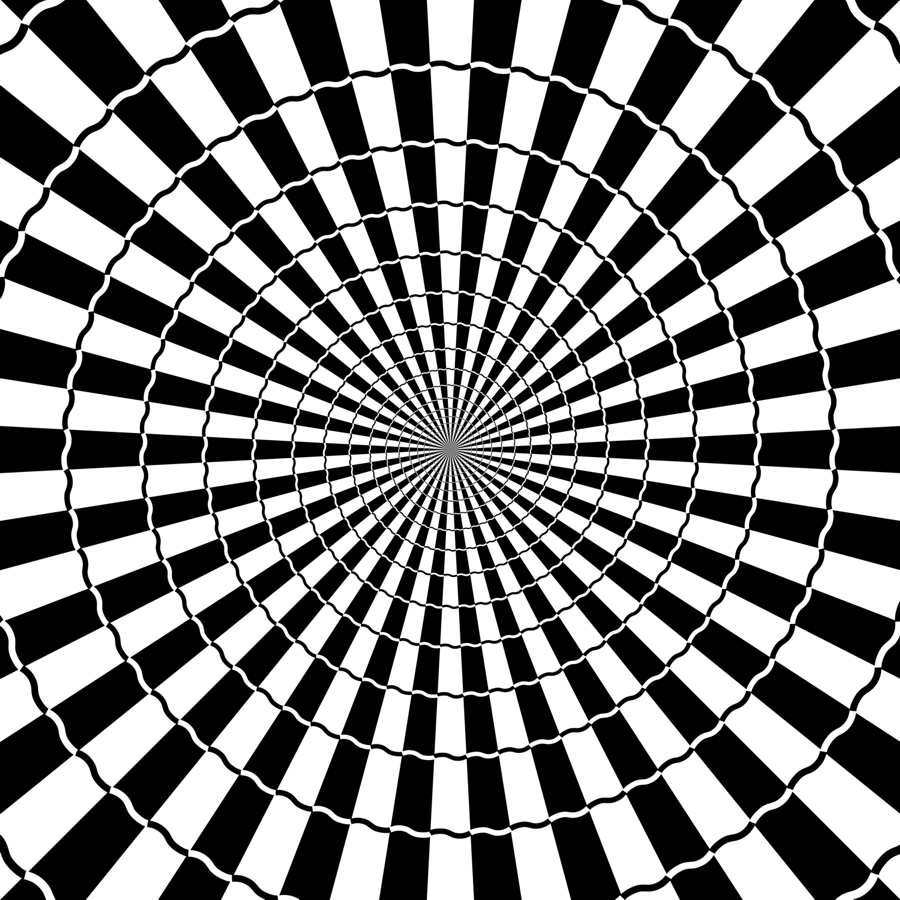
白黒の波線は同心円なのだが、右に回転して中心に向かう渦巻きに見える。
Copyright Akiyoshi Kitaoka 2018 (June 7)
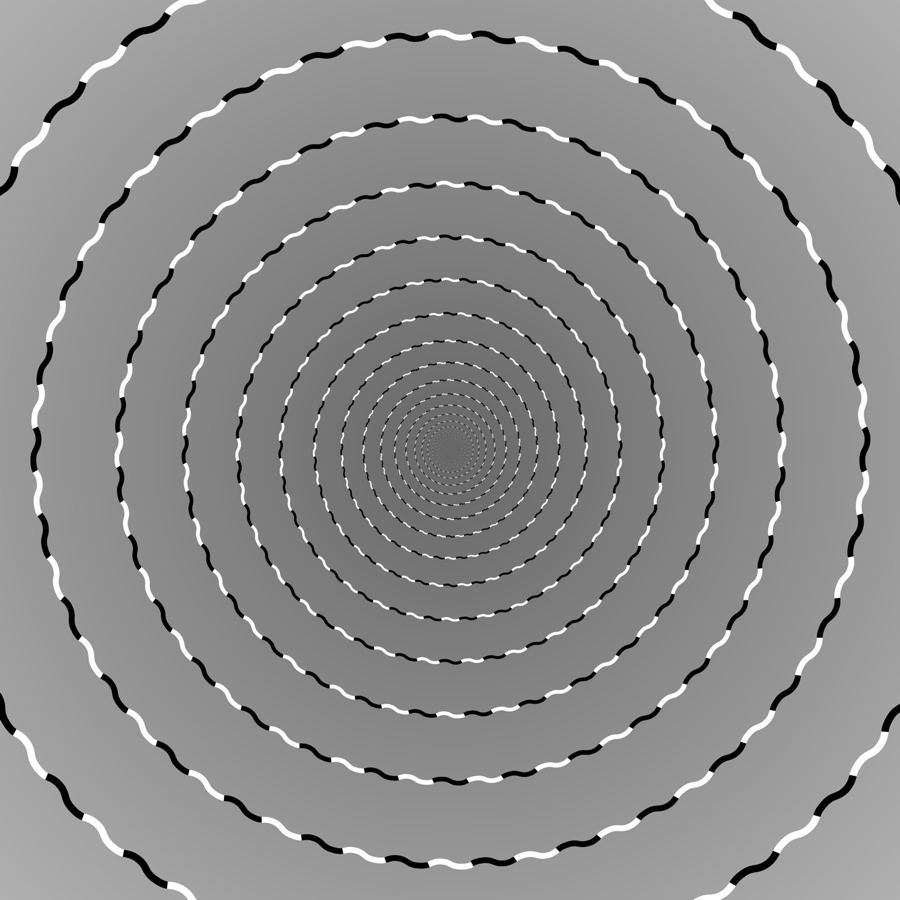
「重力波の渦巻き」
波線は同心円なのだが右に回転して中心に向かう渦巻きに見える。
Copyright Akiyoshi Kitaoka 2016 (February 13)
(円がすべて黒、あるいはすべて白の場合は錯視にならない)
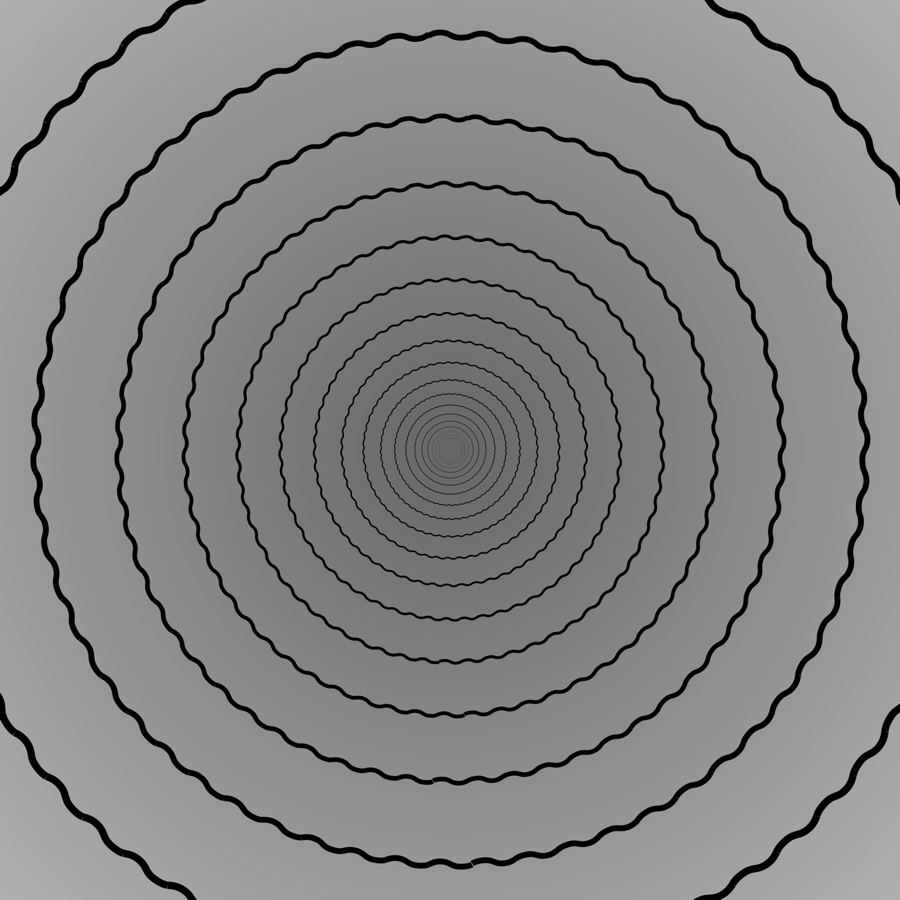
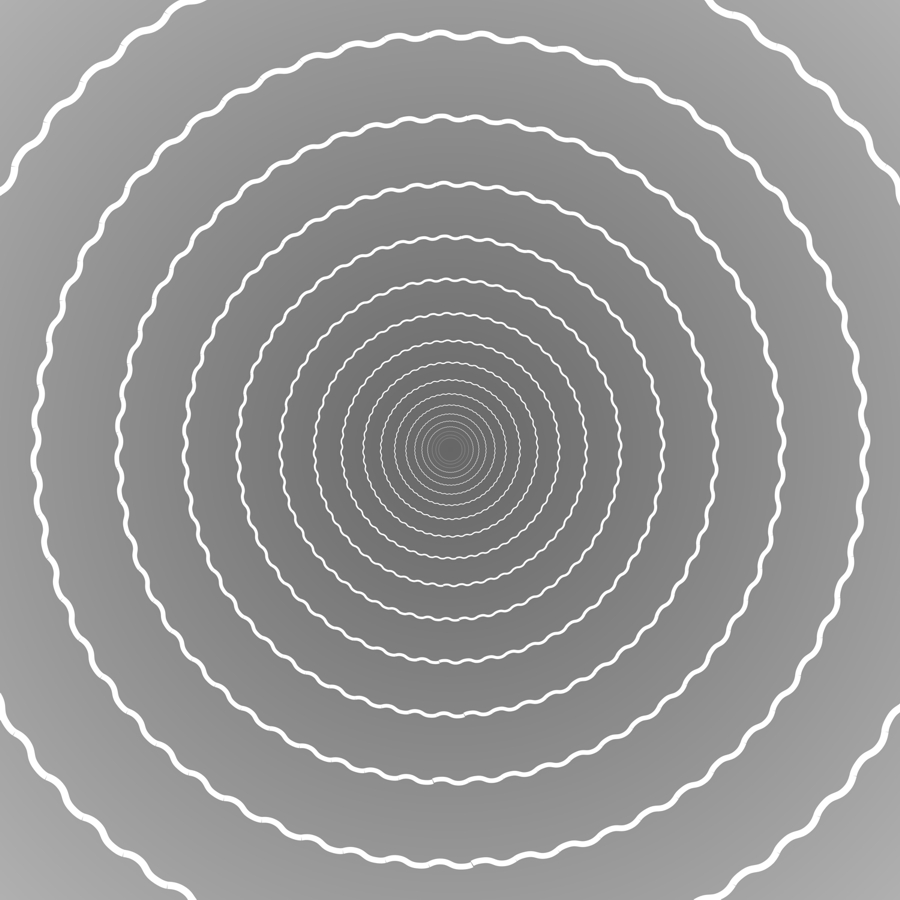
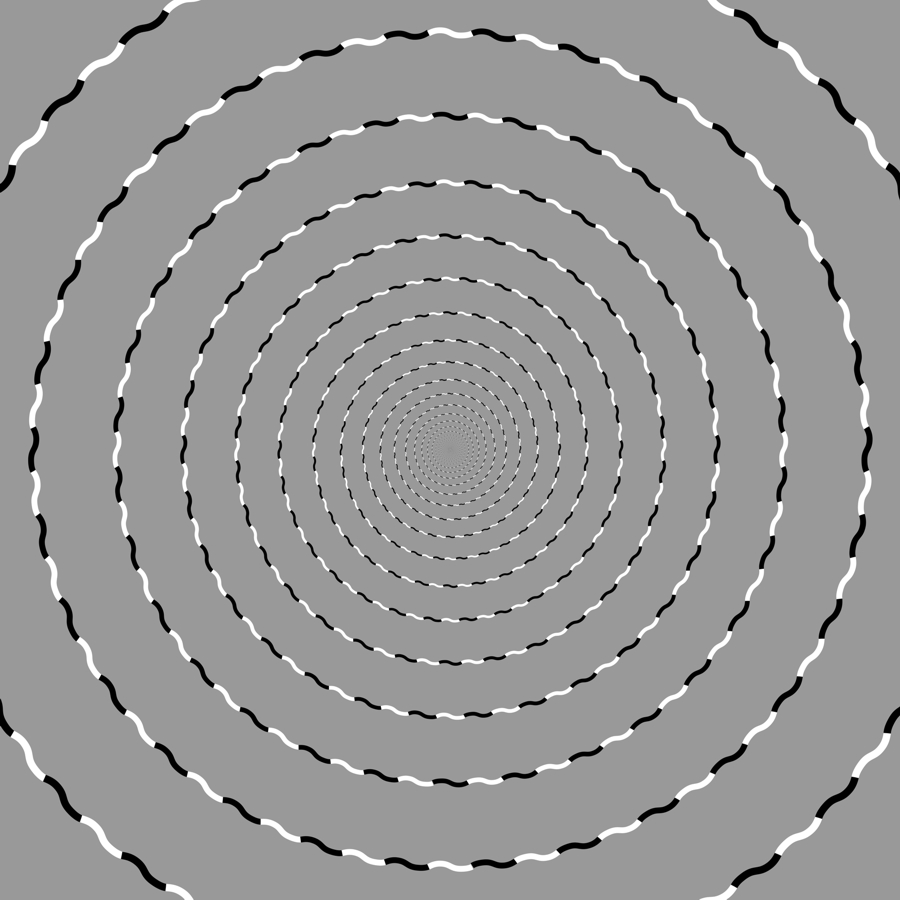
「重力波の渦巻き・シンプル版」
波線は同心円なのだが右に回転して中心に向かう渦巻きに見える。
Copyright Akiyoshi Kitaoka 2016 (February 13)
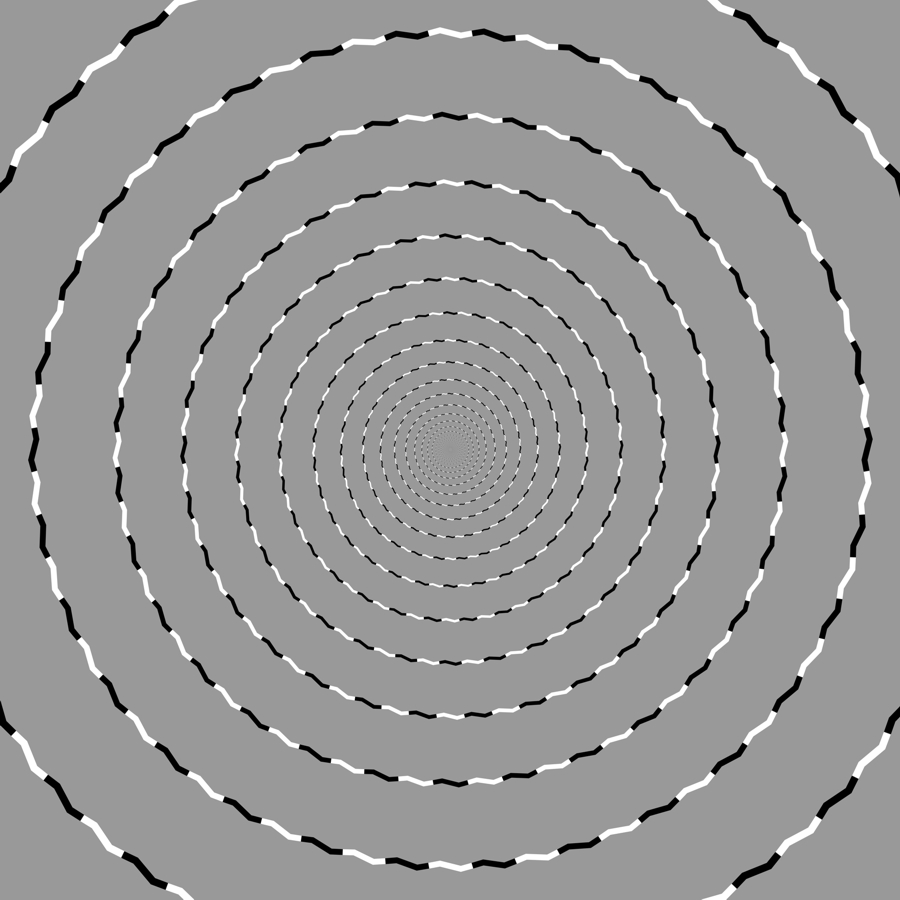
「重力波の渦巻き・三角波版」
波線は同心円なのだが右に回転して中心に向かう渦巻きに見える。
Copyright Akiyoshi Kitaoka 2016 (February 15)
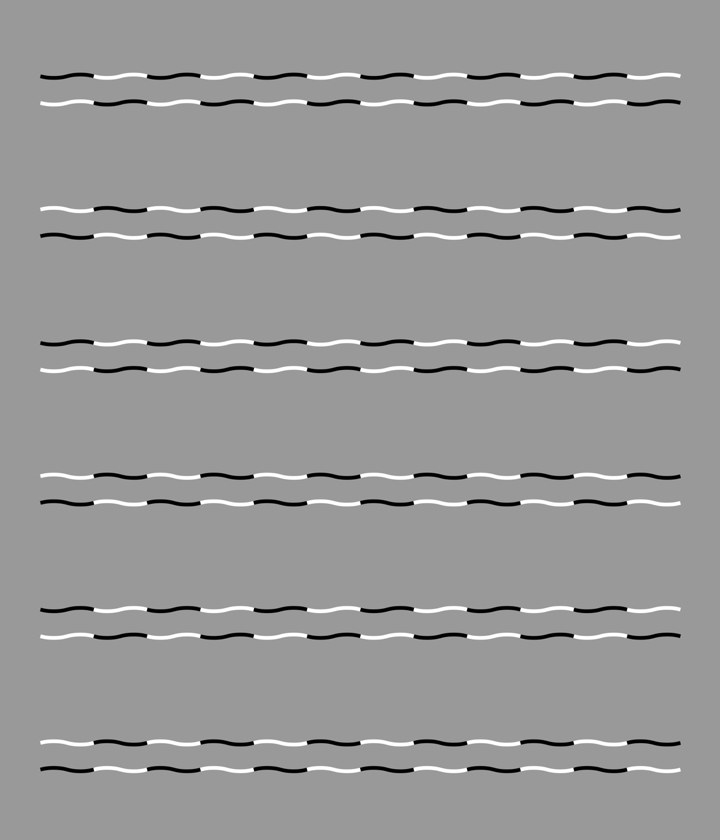
「波線フレーザー錯視」
サイン波状の波は水平に並んでいるが、上のブロックから左・右・左・右・左・右に傾いて見える。
Copyright Akiyoshi Kitaoka 2016 (February 13)
cf.
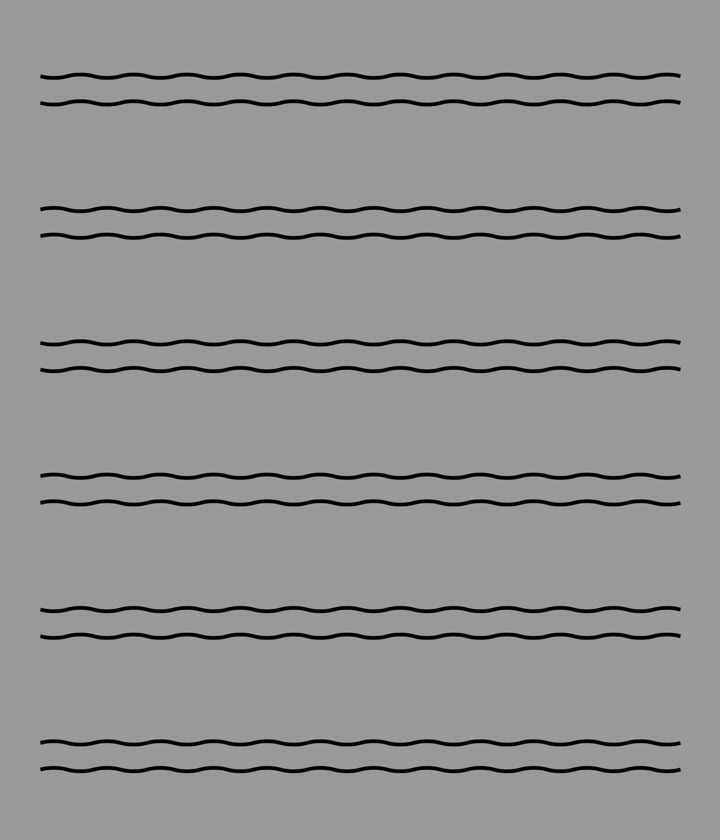
白黒縞でなければ錯視は起きない。
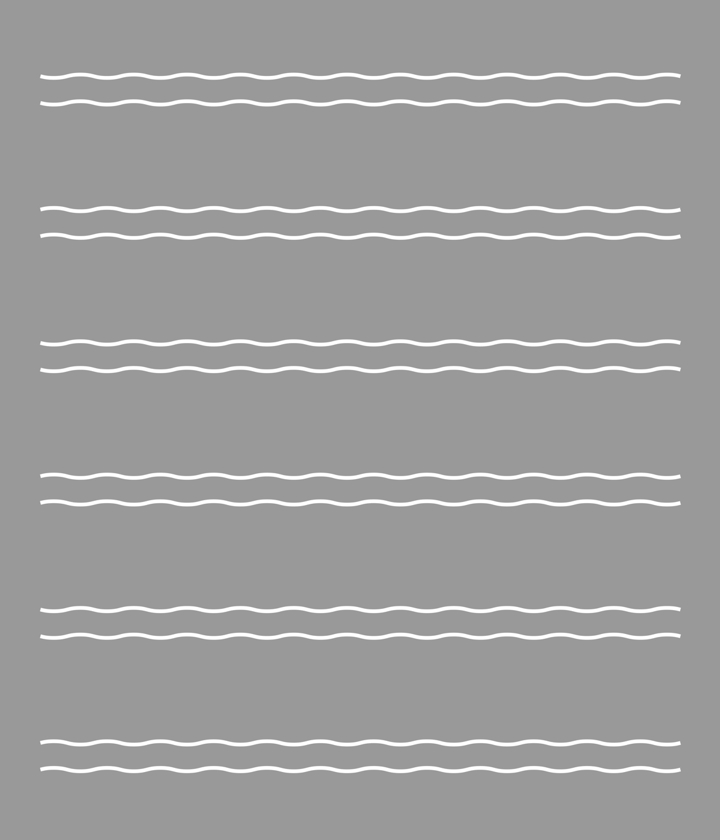
cf.
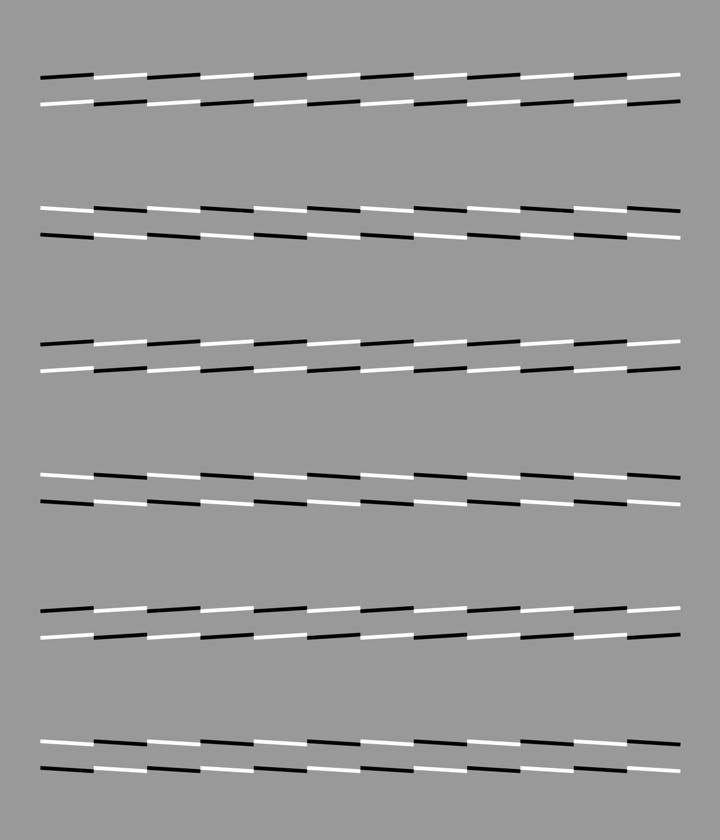
フレーザー錯視
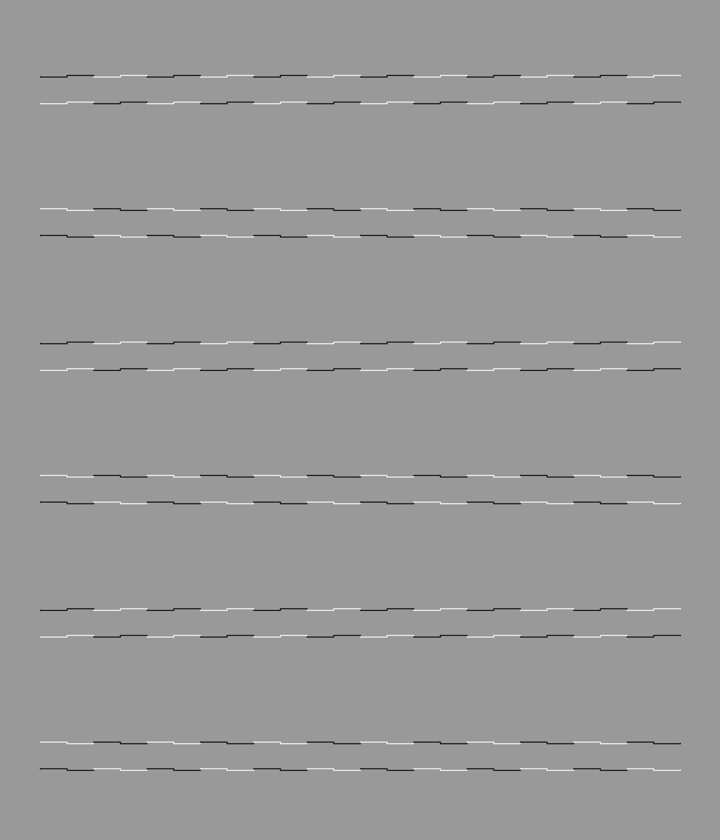
「矩形波の波線フレーザー錯視」
矩形波状の波は水平に並んでいるが、上のブロックから左・右・左・右・左・右に傾いて見える。
Copyright Akiyoshi Kitaoka 2016 (February 13)
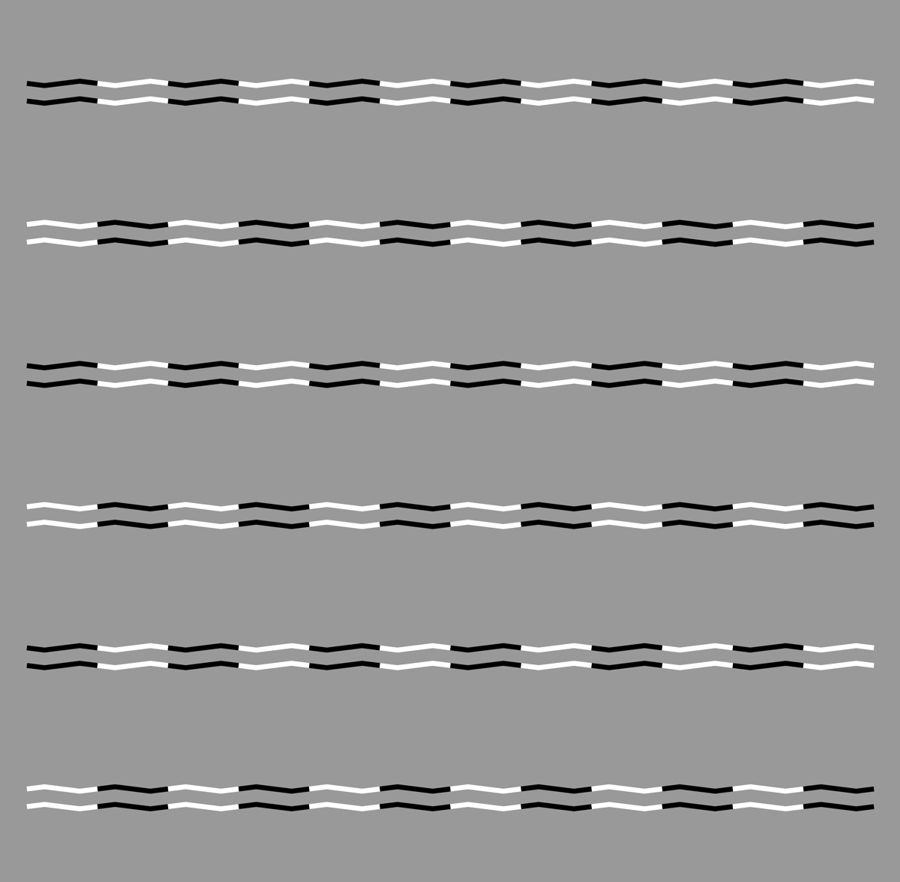
「三角波のフレーザー錯視」
三角波のブロックは水平に配列されているが、上から左・右・左・右・左・右に傾いて見える。
Copyright Akiyoshi Kitaoka 2016 (February 15)
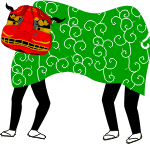 おしまい
おしまい


*********************************************************
第39回 関西若手実験心理学研究会──10周年記念回──
・場所: 立命館大学大阪いばらきキャンパス B棟4階 研究会室2
・日程: 2018年7月7日(土)
・招待講演: 北岡明佳教授 (立命館大学総合心理学部)
・時間: 14:00~17:25
・研究会プログラム:
■14:00−14:10
武藤拓之(大阪大学大学院人間科学研究科)
「関西若手実験心理学研究会の10年間をデータで振り返る」
■14:10−14:55
白井理沙子(関西学院大学大学院 文学研究科)
「嫌悪刺激に対する知覚・認知処理」
■15:10−15:55
石橋和也(日本たばこ産業株式会社)
「人間中心設計に基づいた嗜好品の研究開発」
■16:10−17:25 <招待講演>
北岡明佳教授(立命館大学総合心理学部)
「錯視いろいろ 2」
■18:00− 懇親会